Duncan Passmore (UK) in Berlin: From figurative to abstract in the streets
Painting in the streets regularly for fifteen years, the Scottish artist Duncan Passmore, based in Berlin since 2009, developed his very own expressionist abstraction on walls and on canvas from figuration.
Beginnings in UK
Duncan Passmore was born in Edinburgh in 1984. As a child, he used to draw a lot and started skating at 11 years. At that time, he discovered graffiti writing and started tagging his real name. Later, he was hanging out at Bristol square, a corner for skaters and writers. Late 90s he discovered the work by writer ELPH from Edinburgh, who painted letters and characters and whose style influenced Passmore sustainably. He started painting himself in the streets with Posca markers and squeezers in the beginnings, leaving weird faces of clowns on walls in the neighborhood. Sometimes he experimented with paste-ups depicting that kind of Joker faces of men. At that time, he was active in the vivid Jungle and Drum & Bass music scene in the UK, DJ-ing with the name HUSH. When he was 18 years old, he went to North England to the city of Leeds to study art and design for a year at the College of art. After this experience, Passmore moved to Buckinghamshire, next to London, to study at the Buckinghamshire New University advertising. During that time, he painted a lot at home, copying his favorite painter Lucian Freud, and started to be active in the streets again using spray paint as well.
Today he remembers that in 2006 he had a class where the students had to draw with their eyes covered. This experience led him to free his drawing, to focus on what is important, leave out details, work faster and more gestural and trust his instinct. This method shaped his style sustainably, and his drawing evolved thus into more abstract but was still meant figurative.
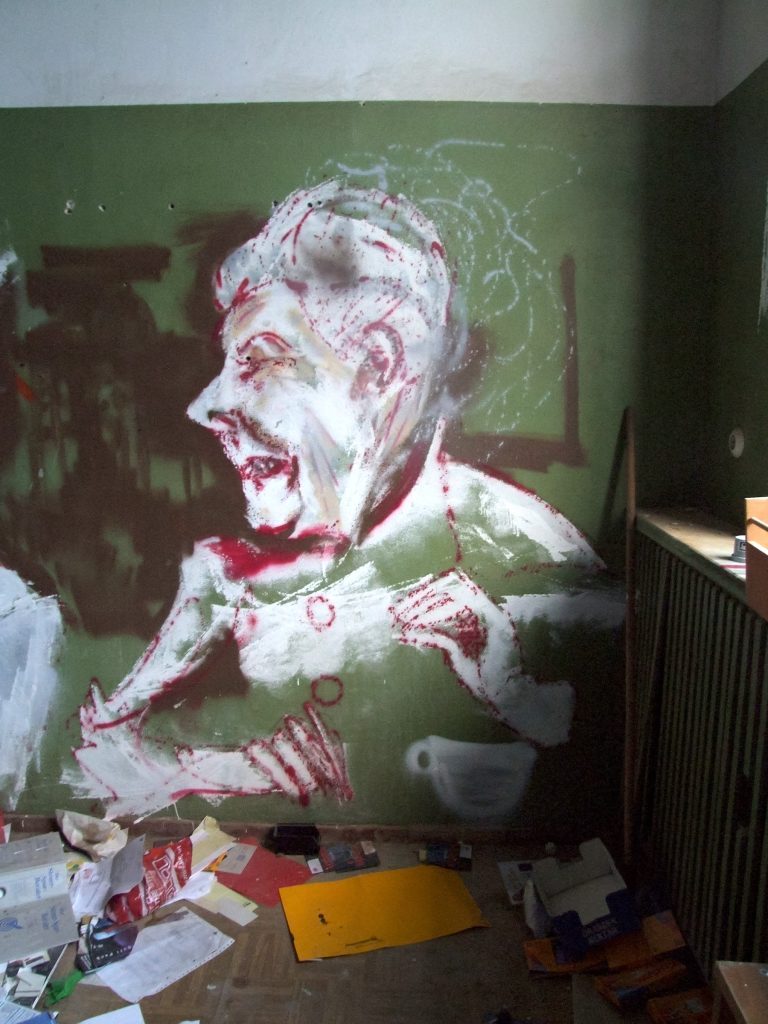
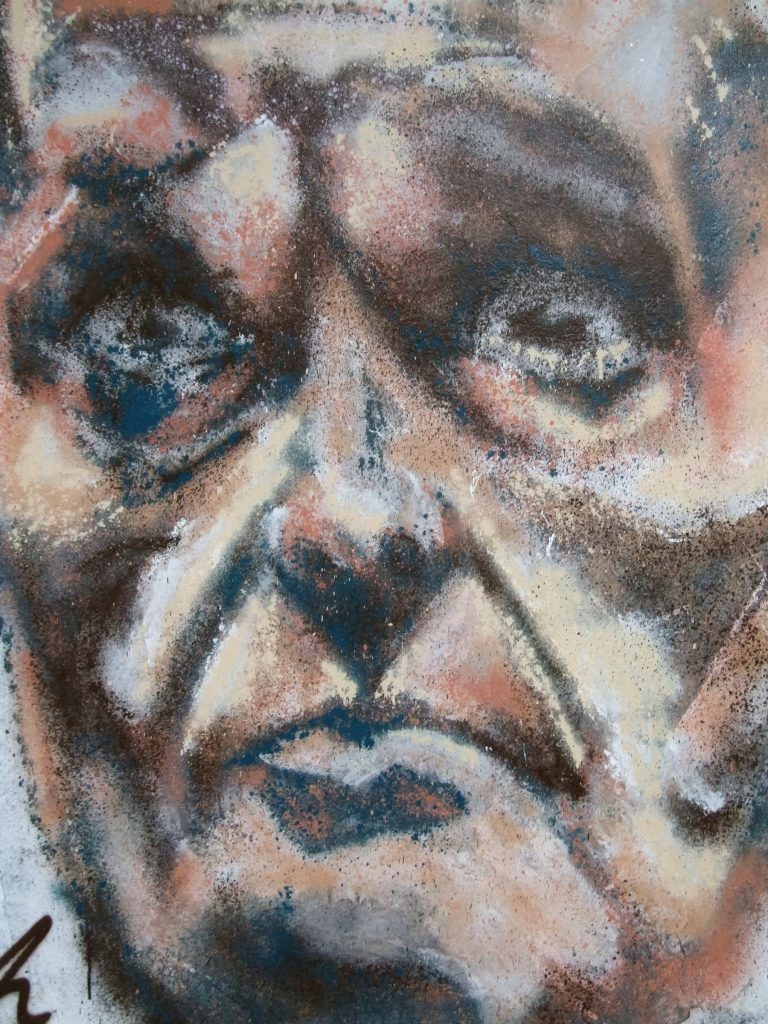
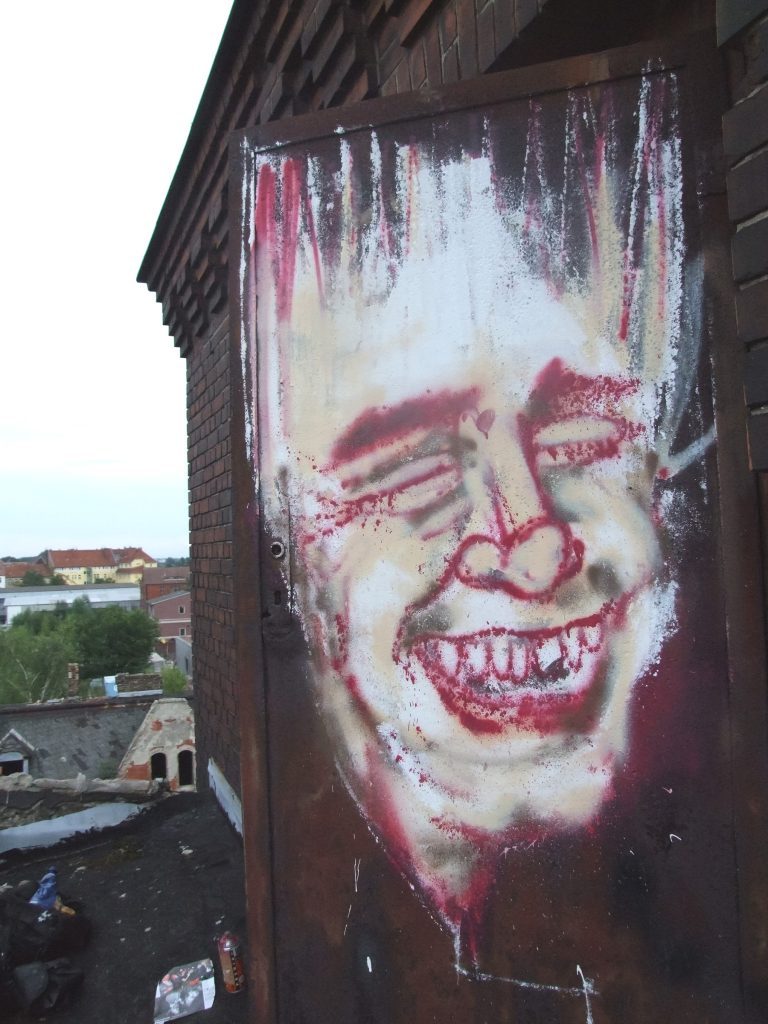
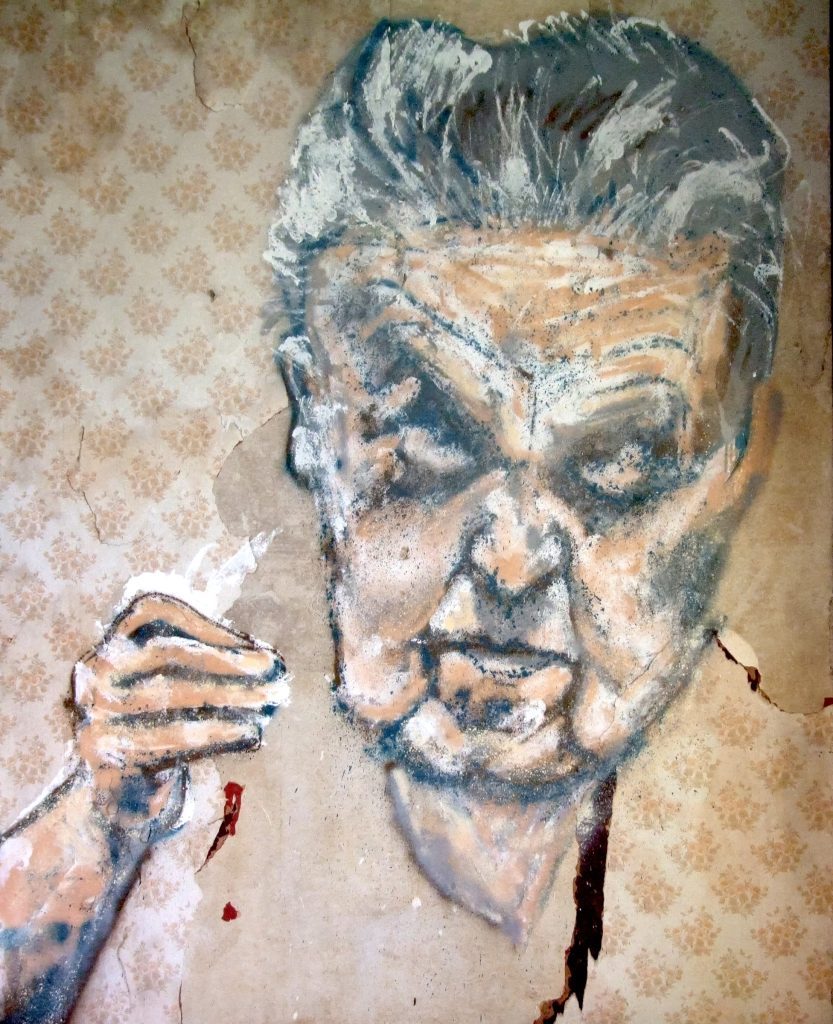
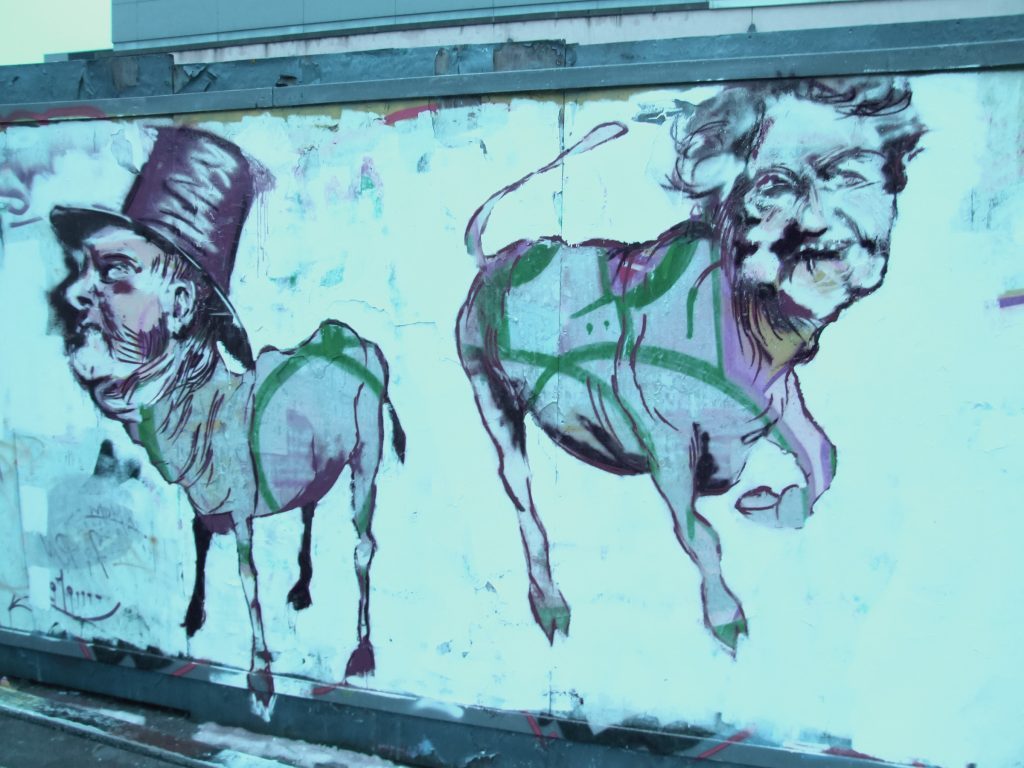
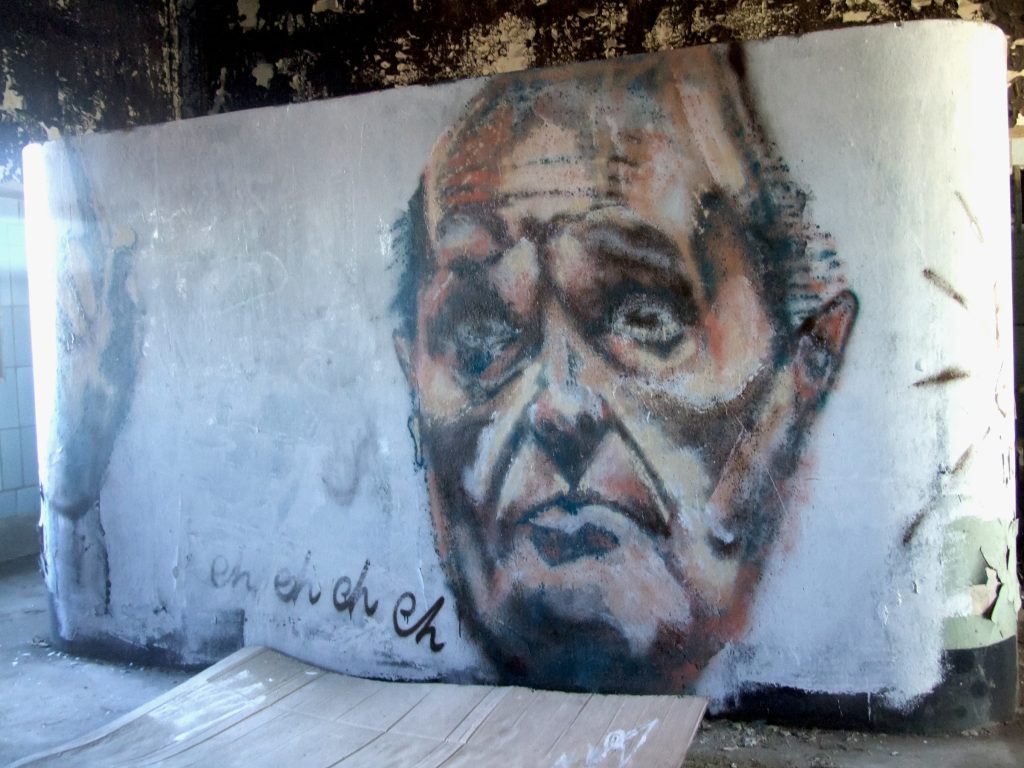
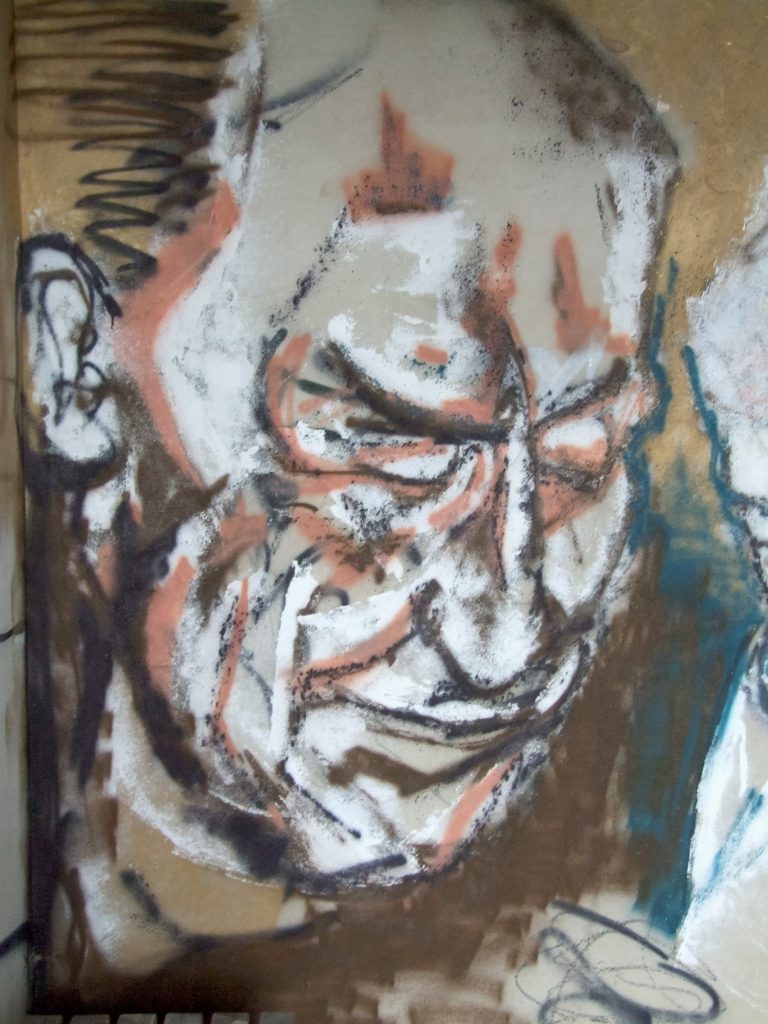
Collaborative work and traveling around the world
In 2007, Passmore started painting with two friends in Scotland. He participated in the project FREAK, a festival started by the TAA, the „Temporary Autonomous Arts“ organization, taking place in lost places with live wall paintings and club nights. At that time, he was painting with SILAS and Tommy Dutch, experimenting with abstract compositions. In 2009, he traveled to France to meet people and to Berlin, visiting a friend who had the collective Grunt Work. Passmore stayed in Berlin and started doing some illustration work as a freelancer. In 2010, he met the French artist NELIO, with who he has collaborated several times since.
In Berlin, Passmore helped Jonni Mitchel in 2009 in a print studio. Later Passmore was active at the silkscreen print association of STATTBAD where he met the French artist BLO ,with who he collaborates regularly. During that period, he did silkscreen printing on textile and paper as well and kept painting in the streets of Berlin. Later, in 2014, Passmore traveled to New Zealand, where he had several opportunities to work on his art, in a residency in 2015, sharing a studio for a month with NELIO and others, showing at an exhibition and producing some murals as well. After traveling to Canada and USA, he returned to Berlin in 2016, where he still works and lives.
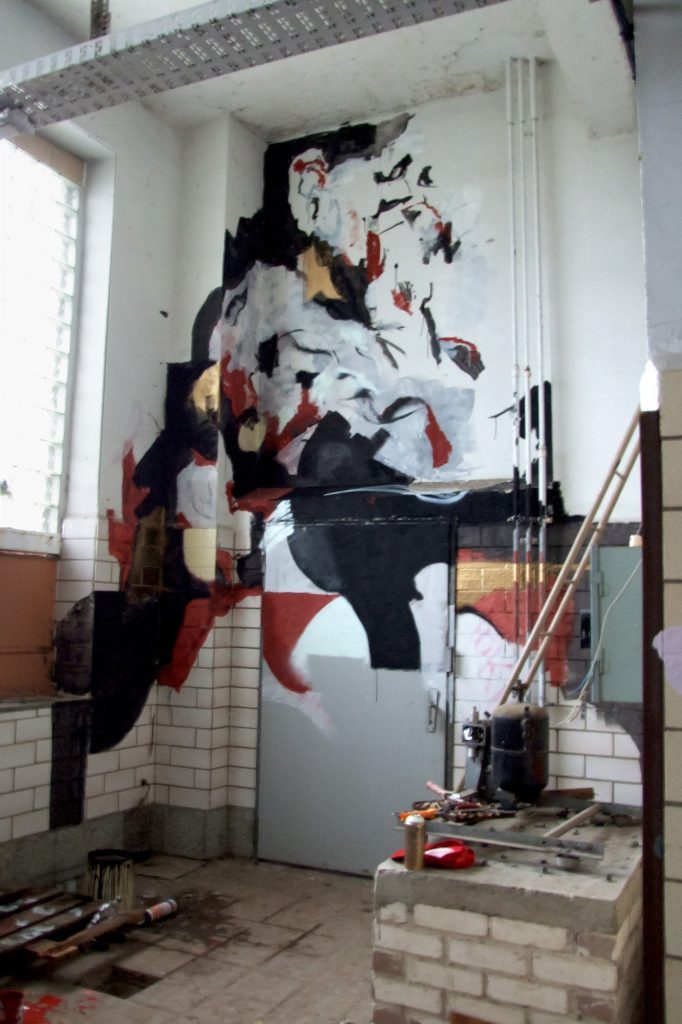
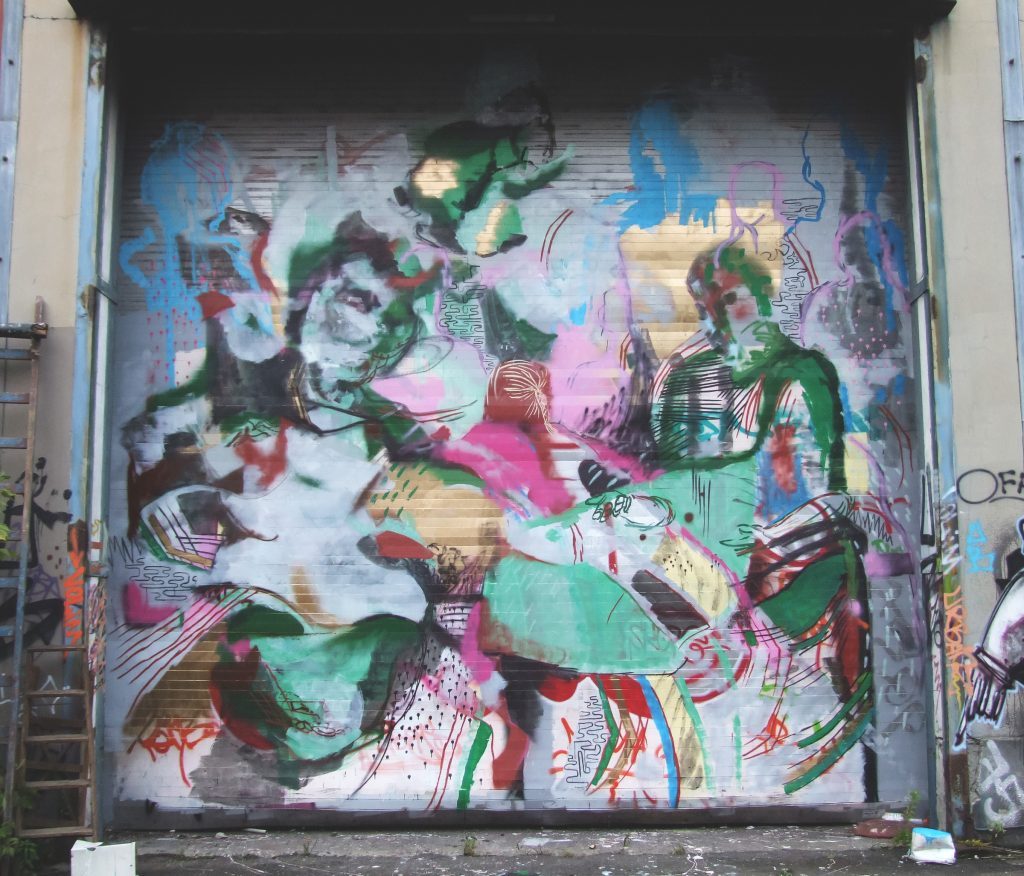
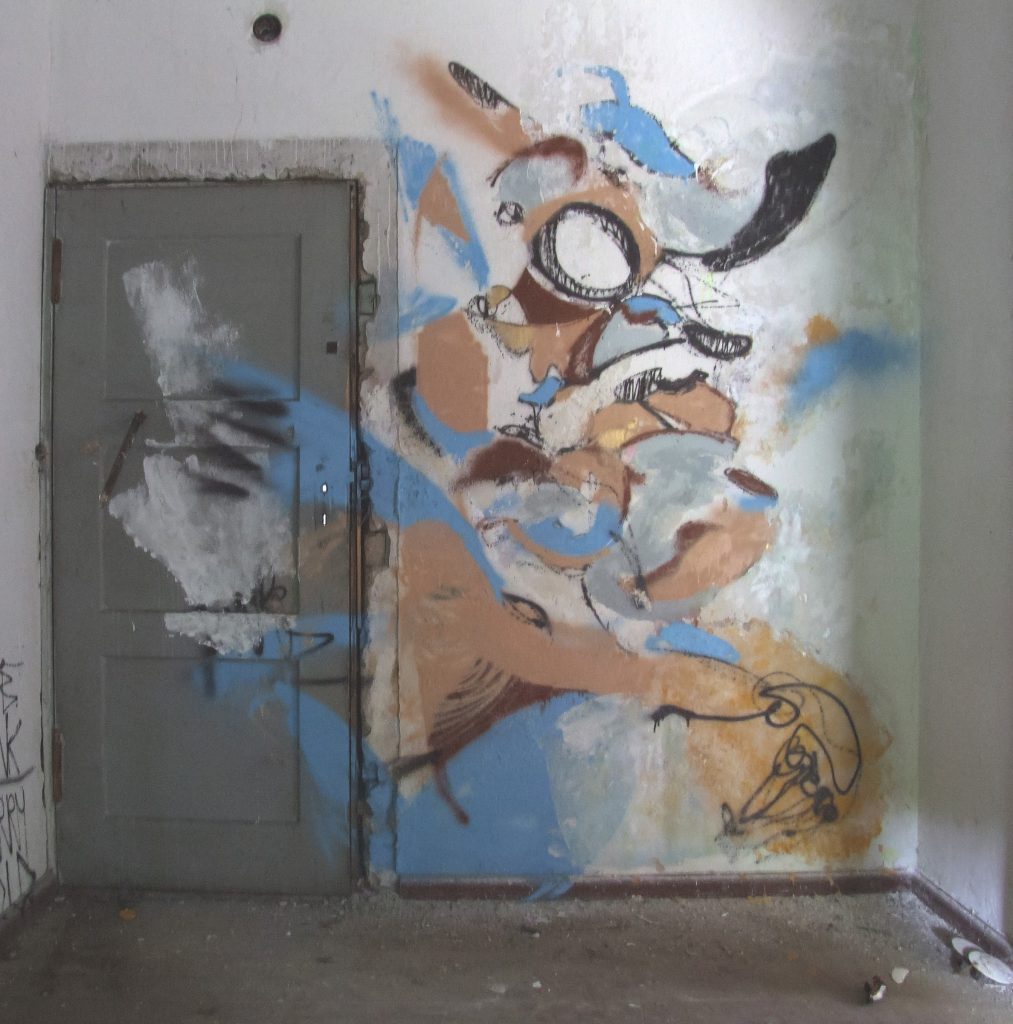
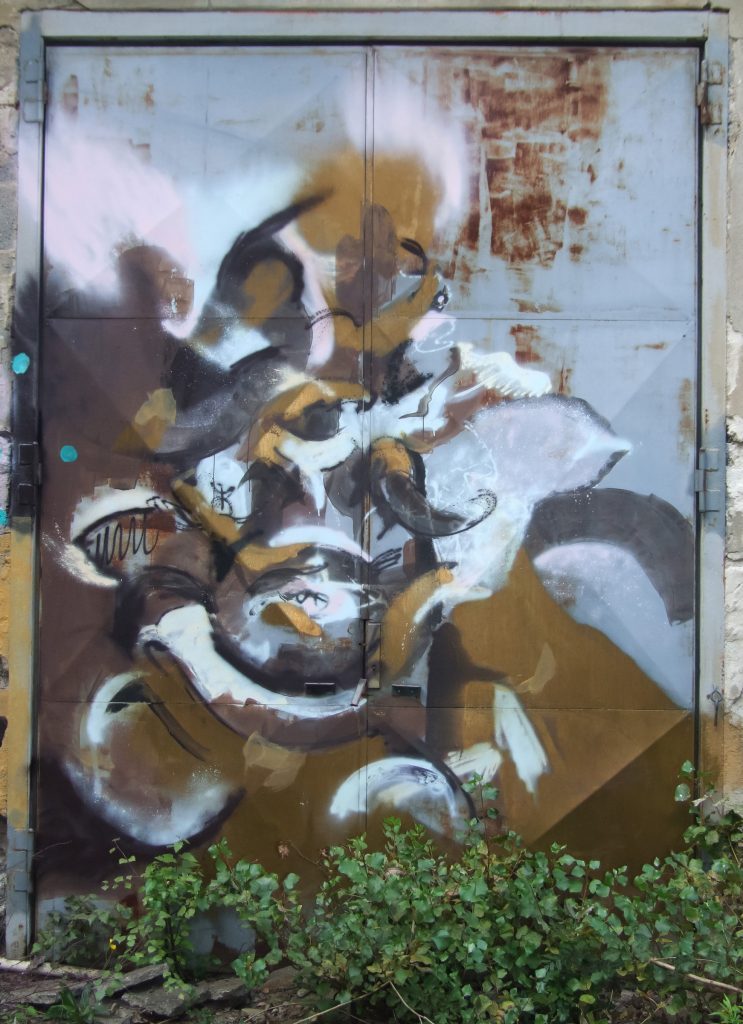
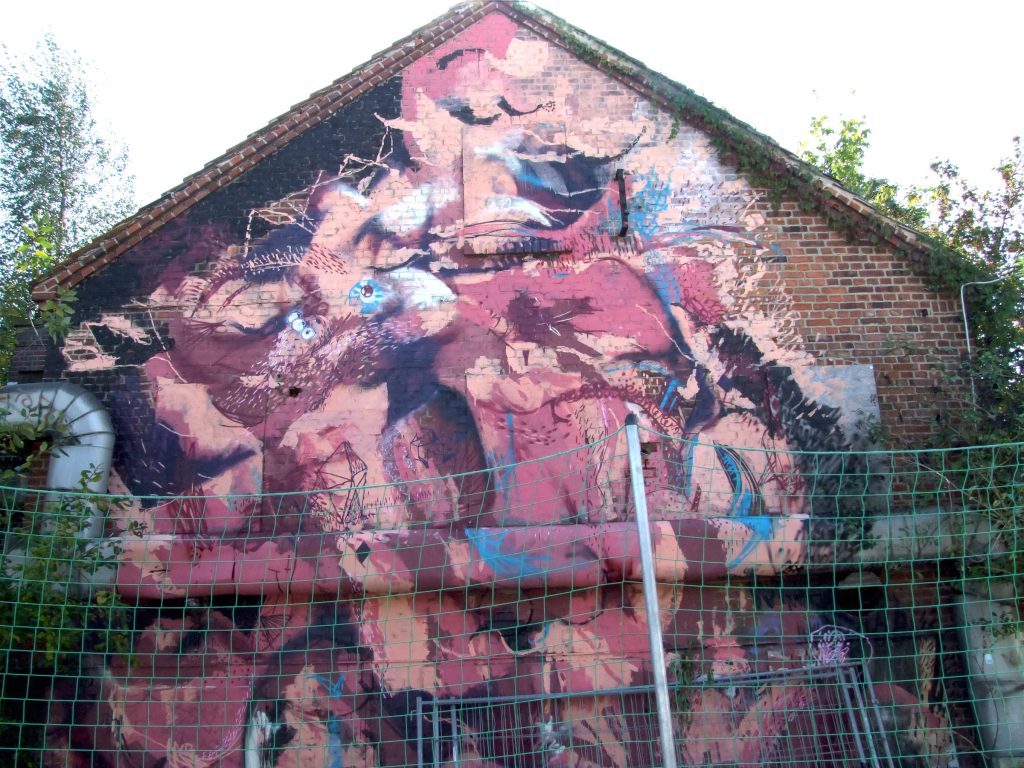
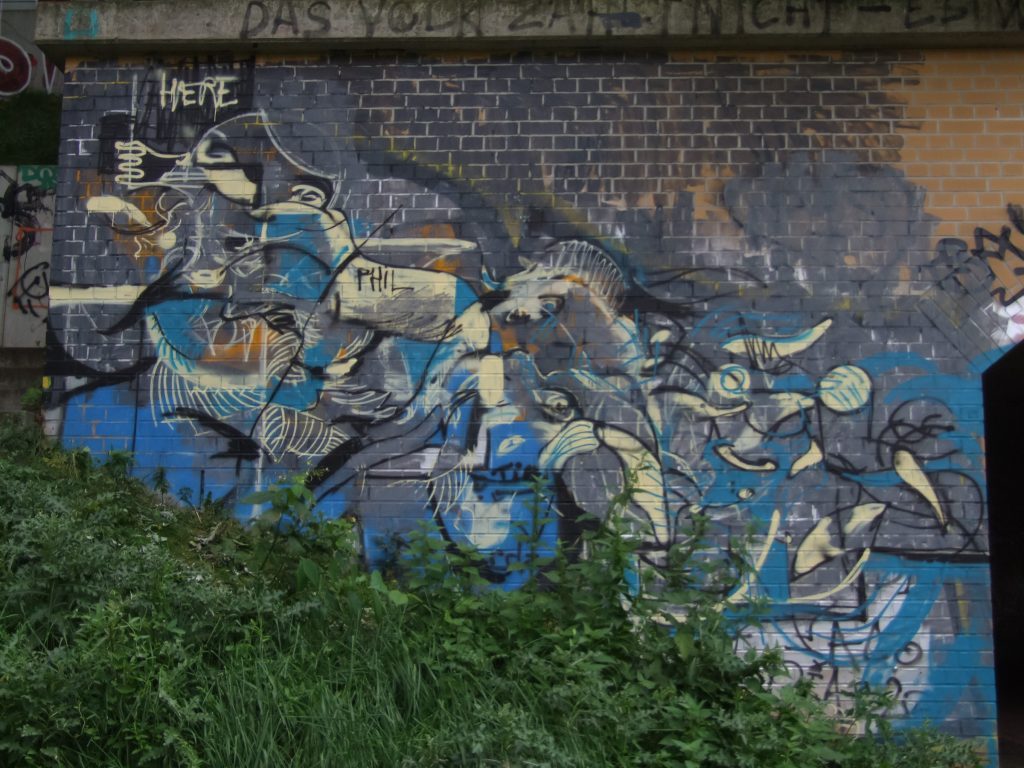
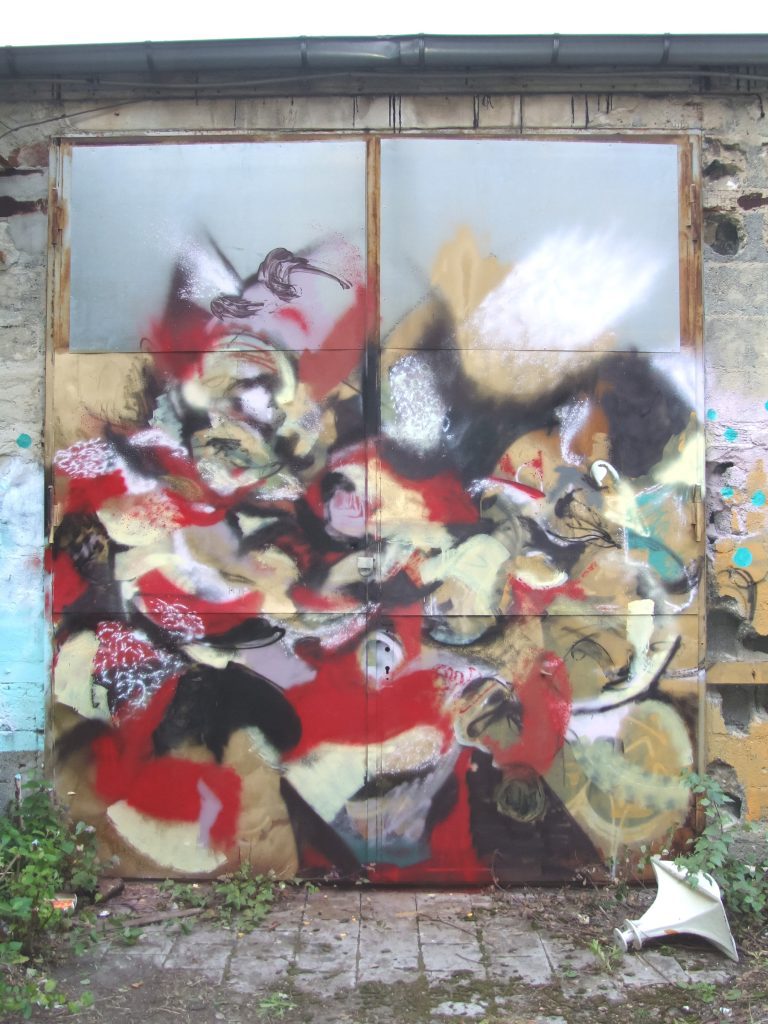
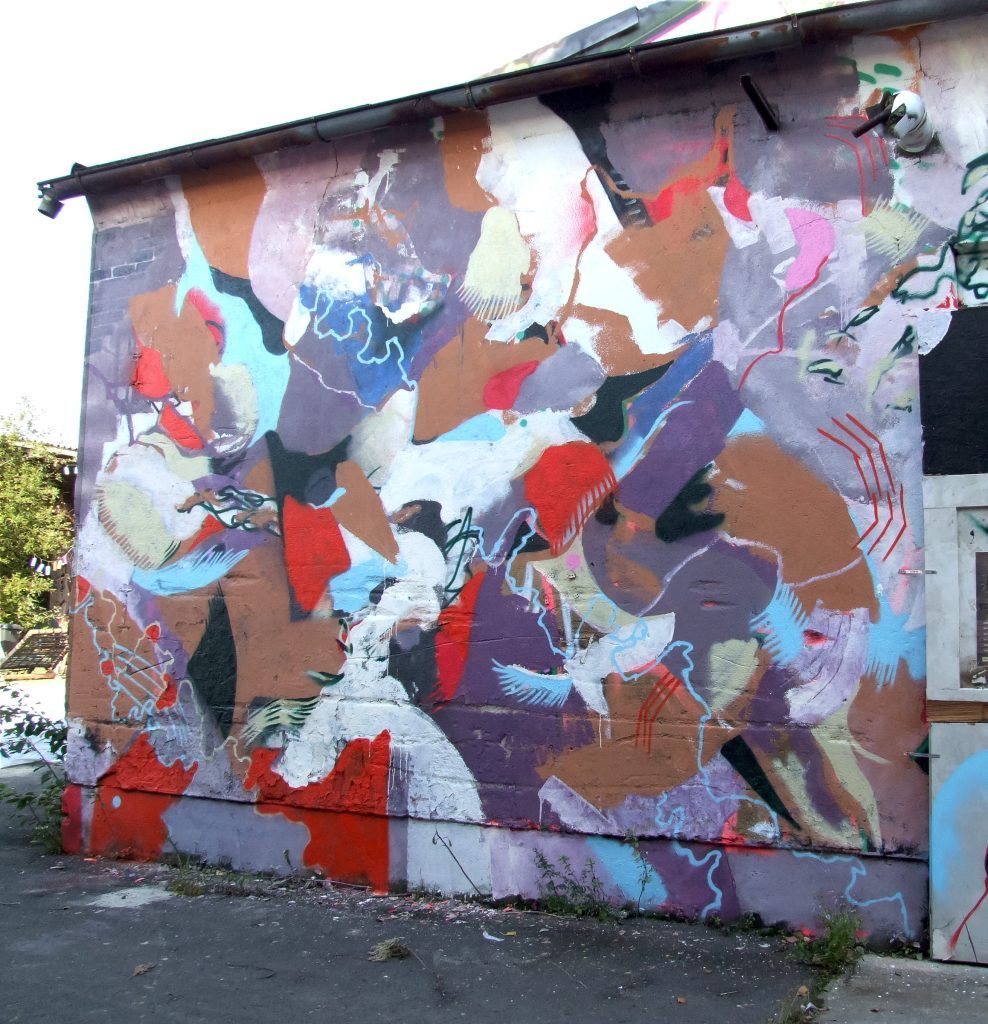
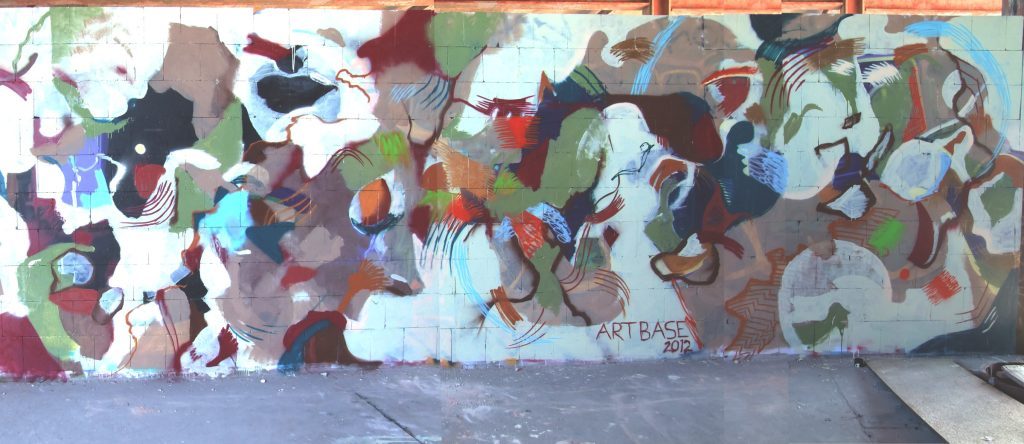

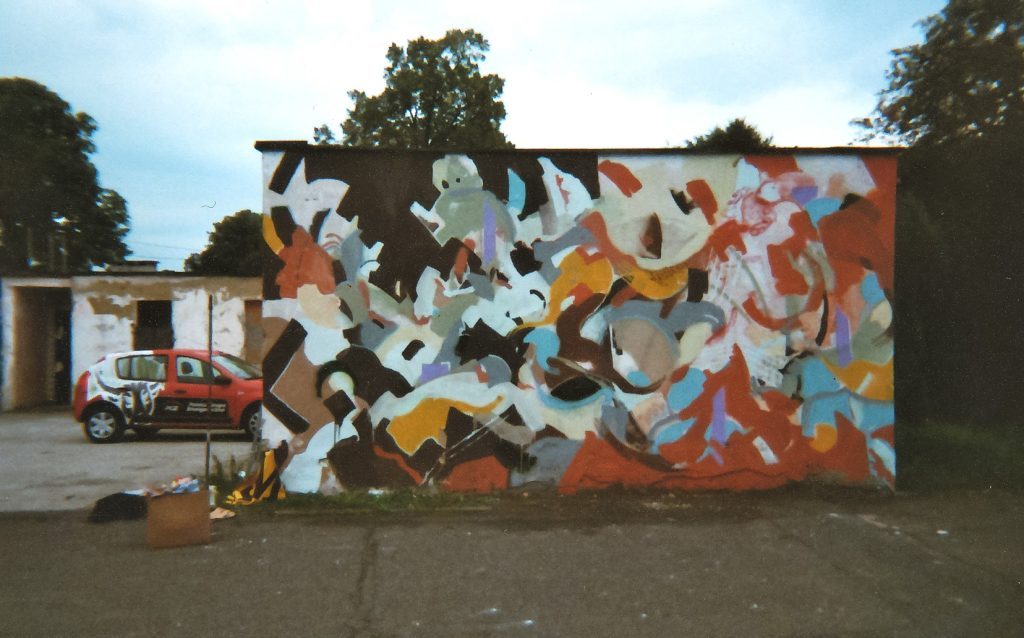
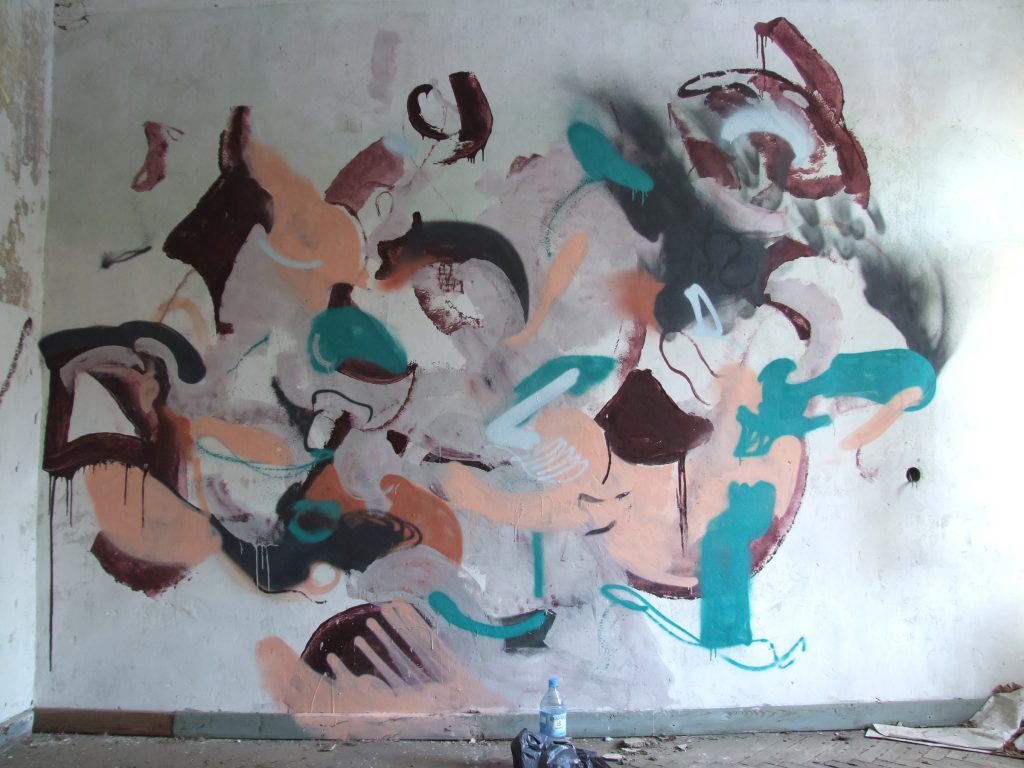
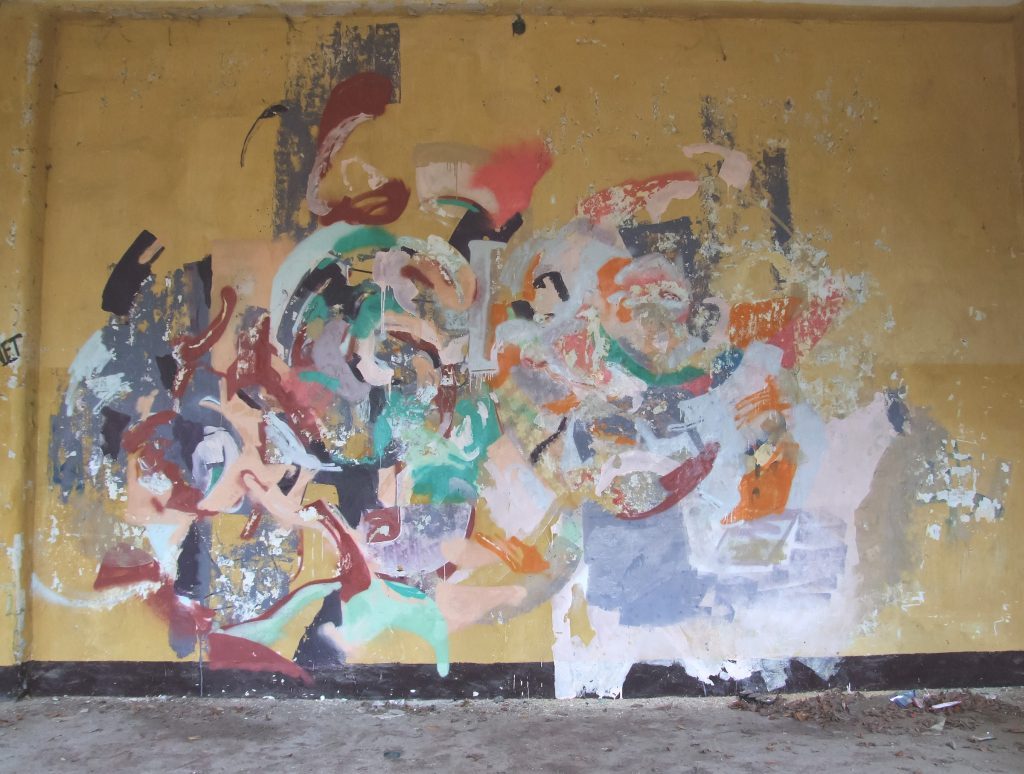
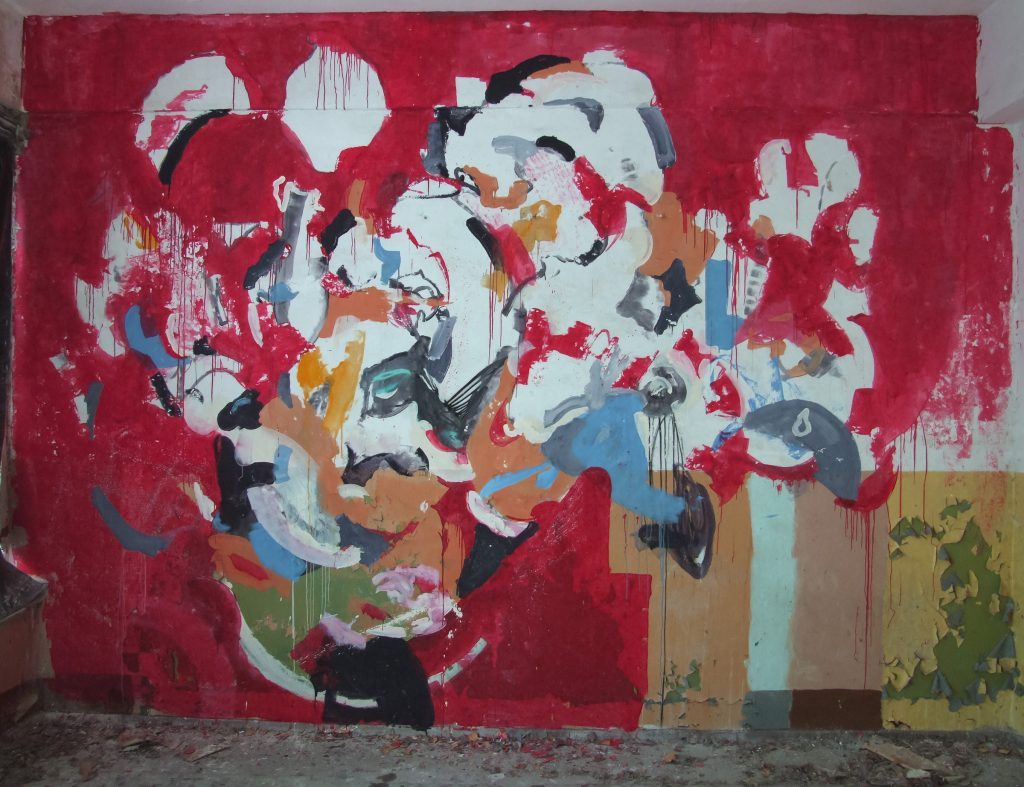
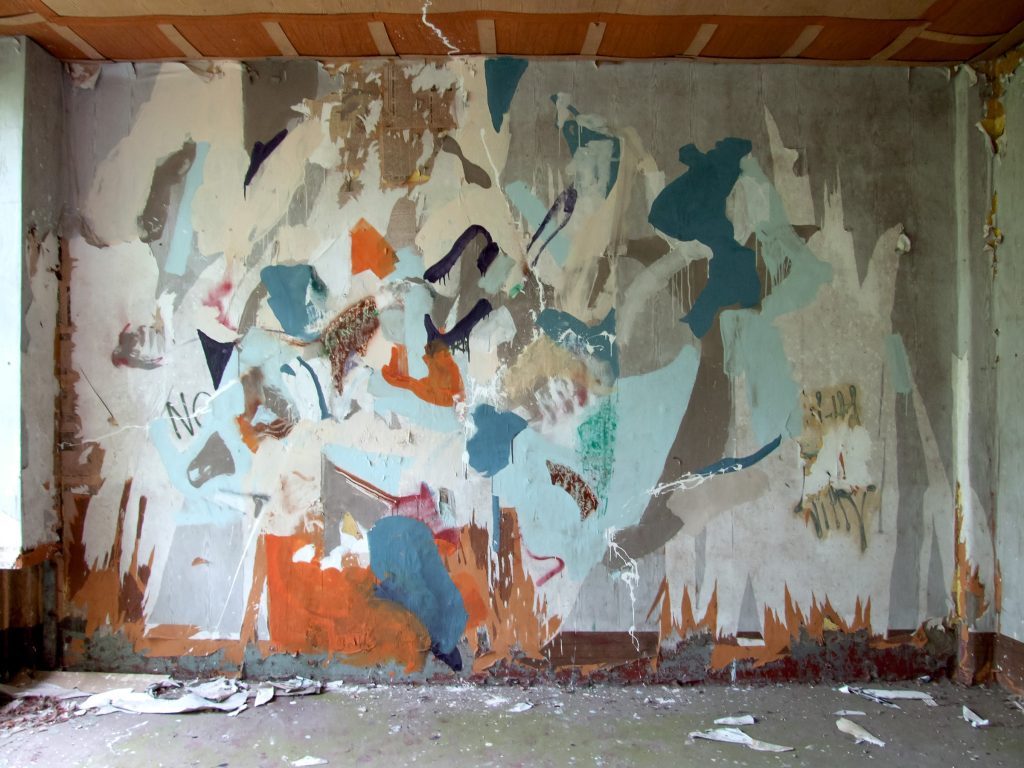
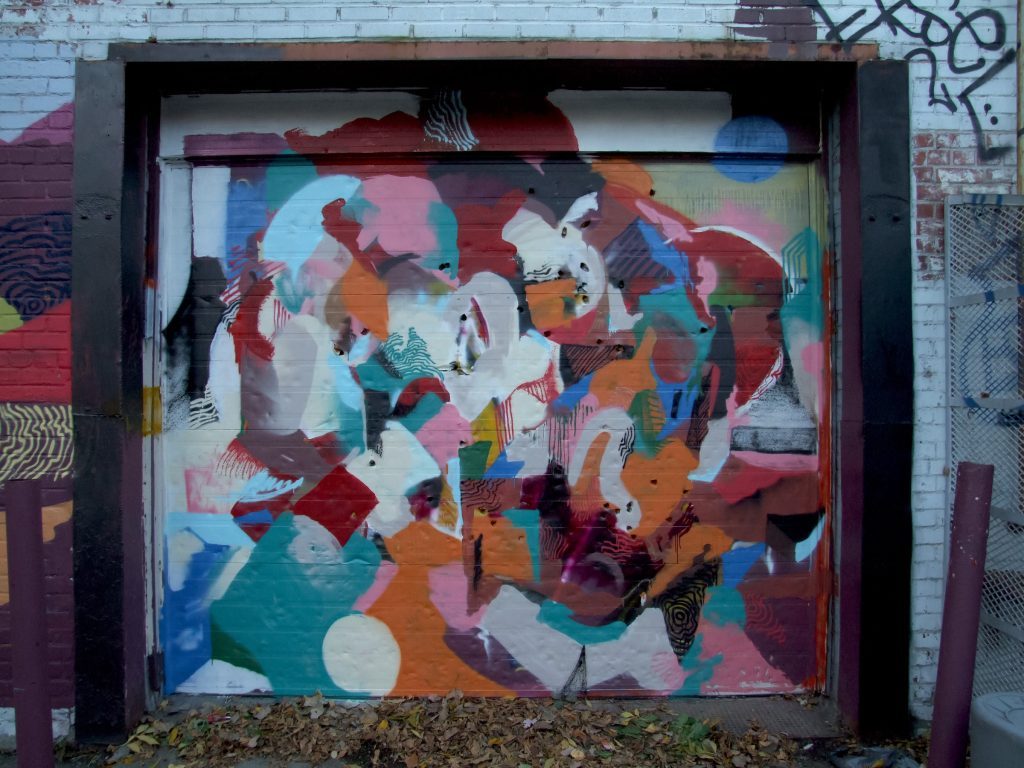
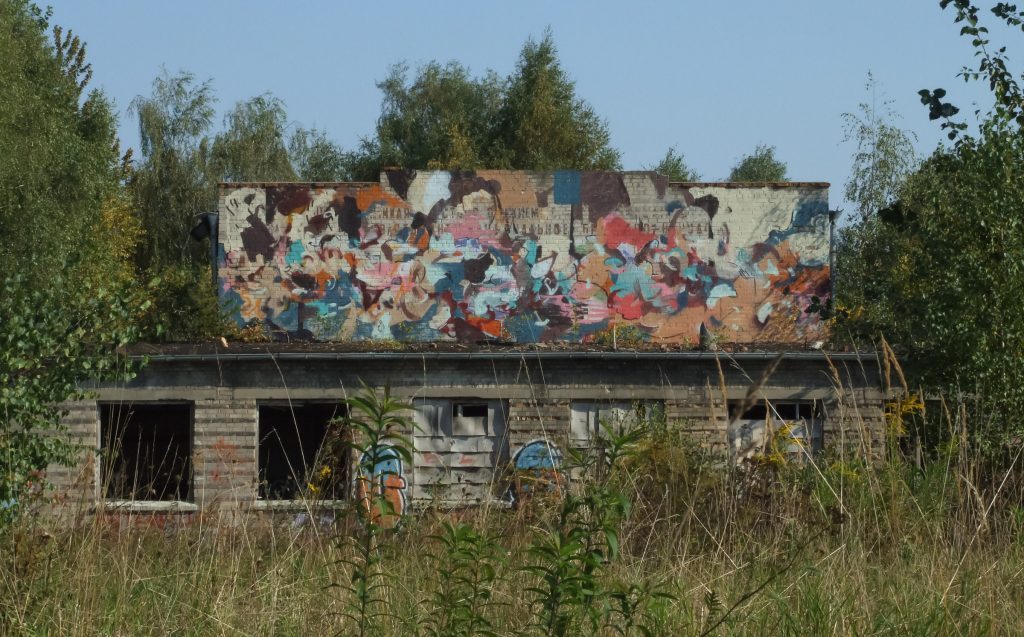
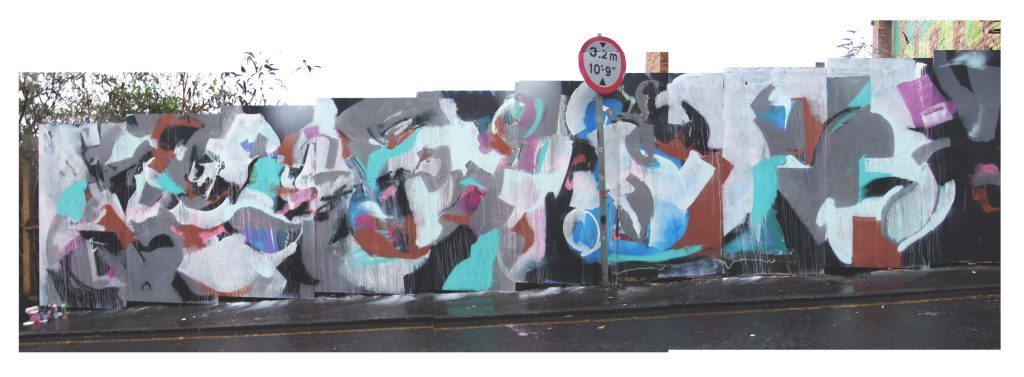

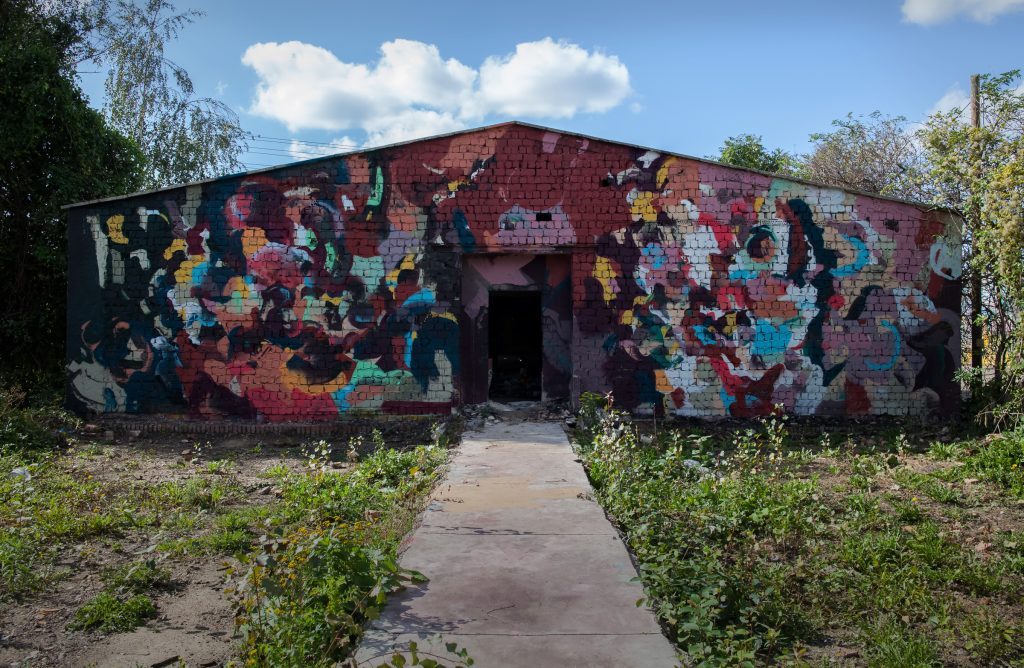
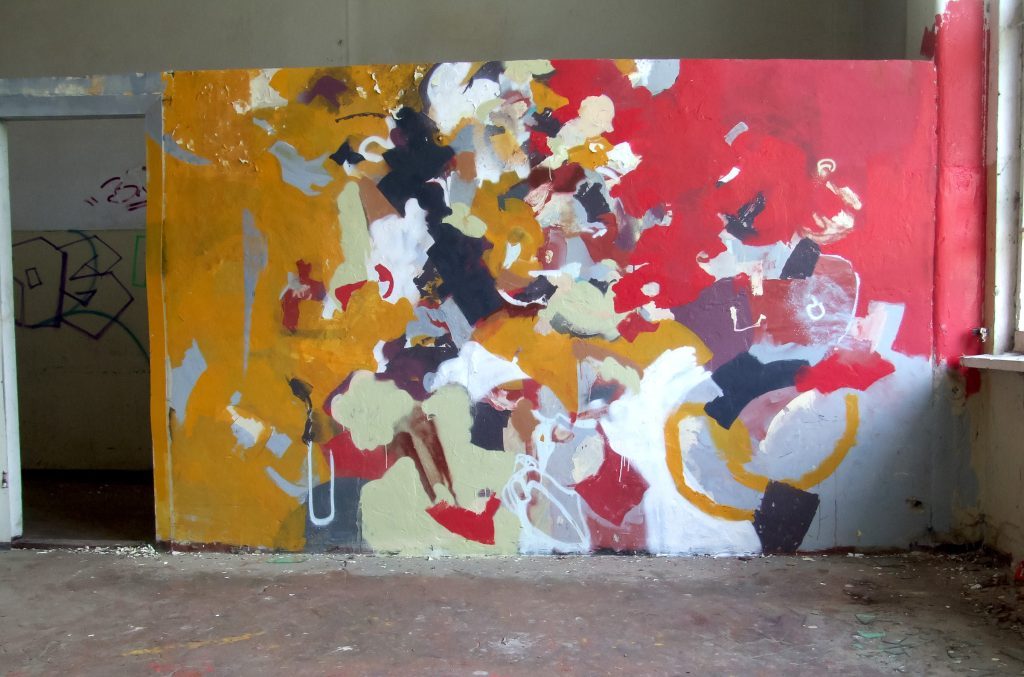
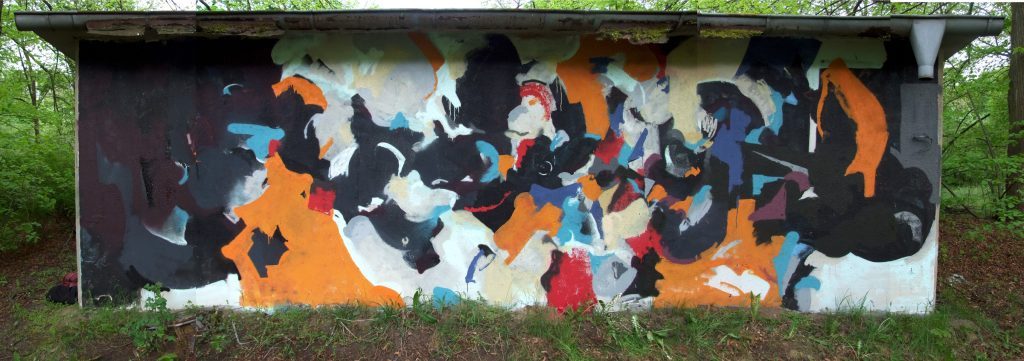
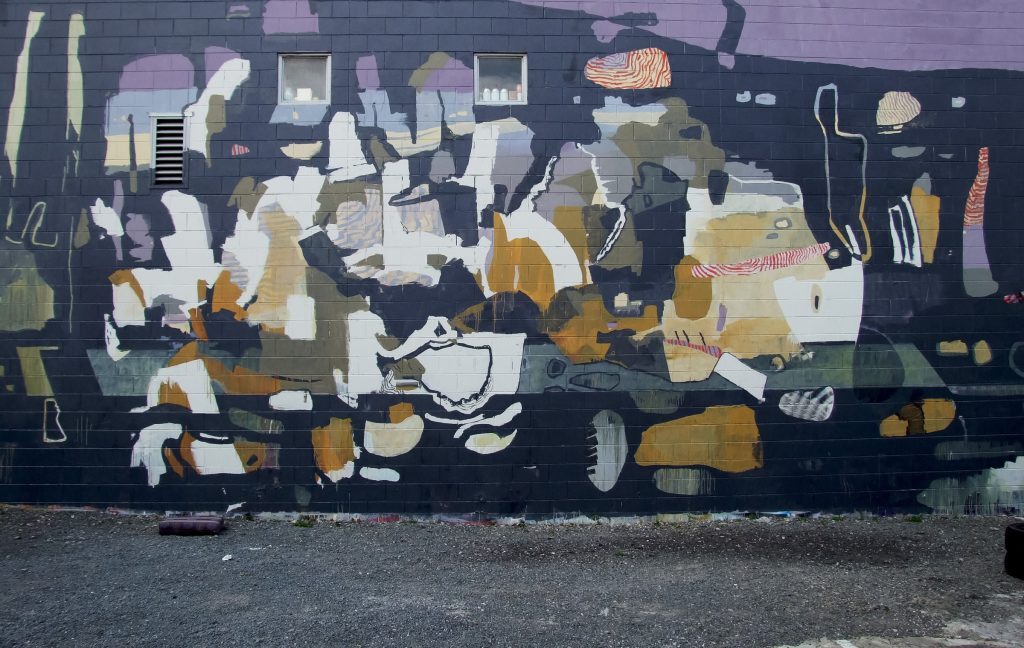
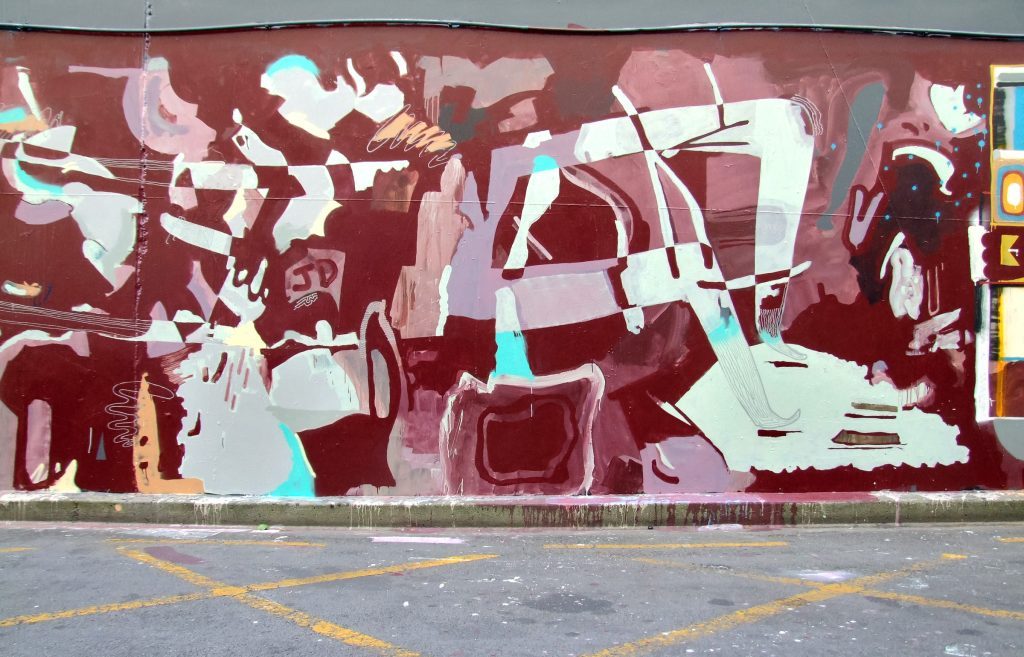
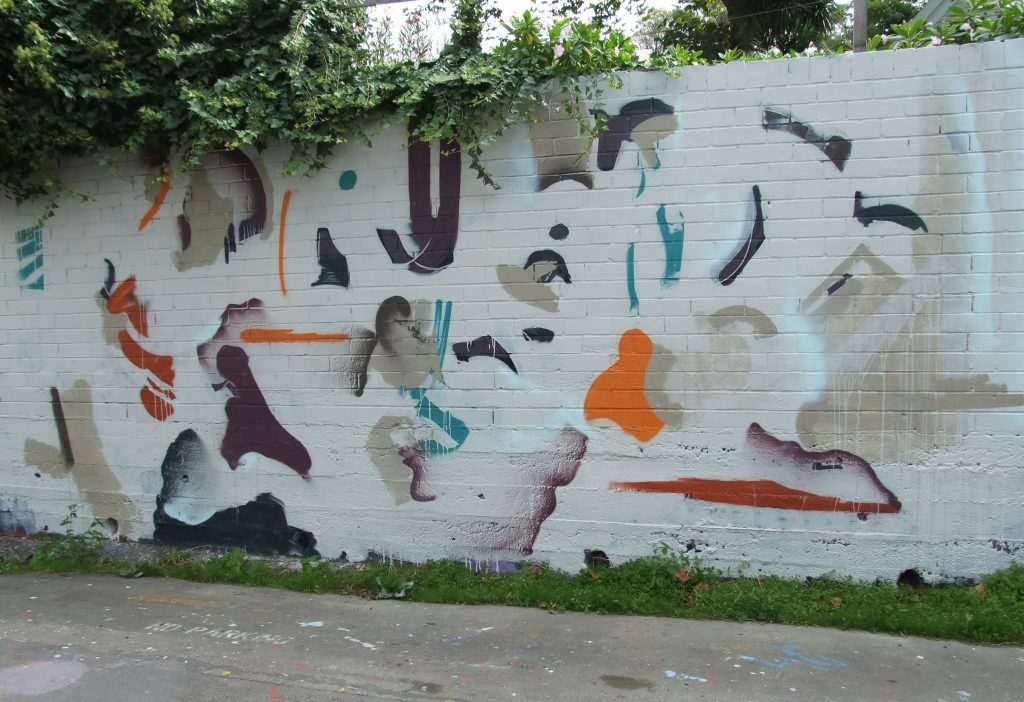
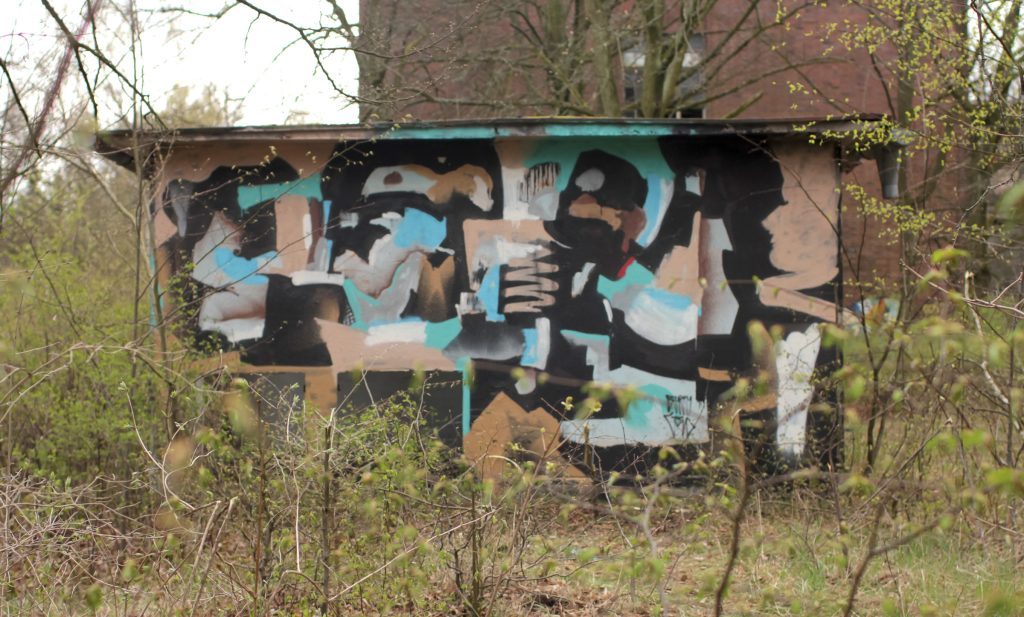
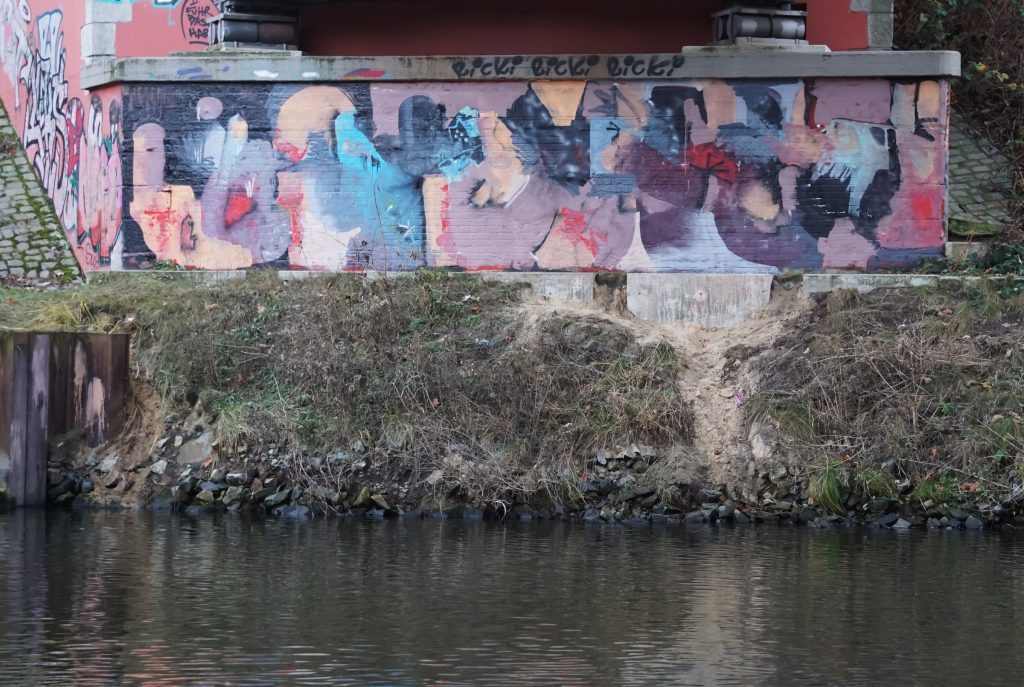
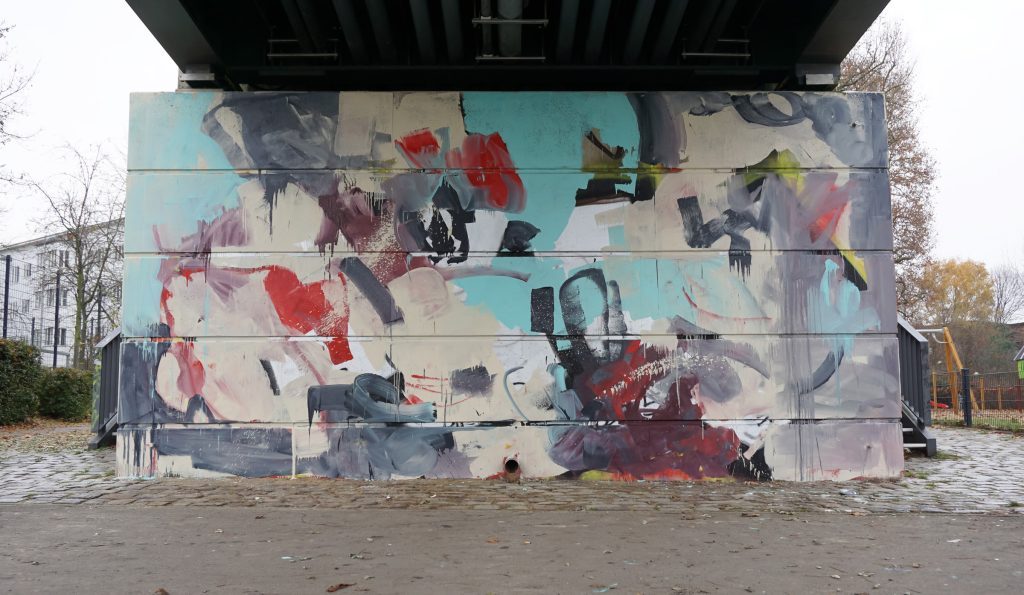
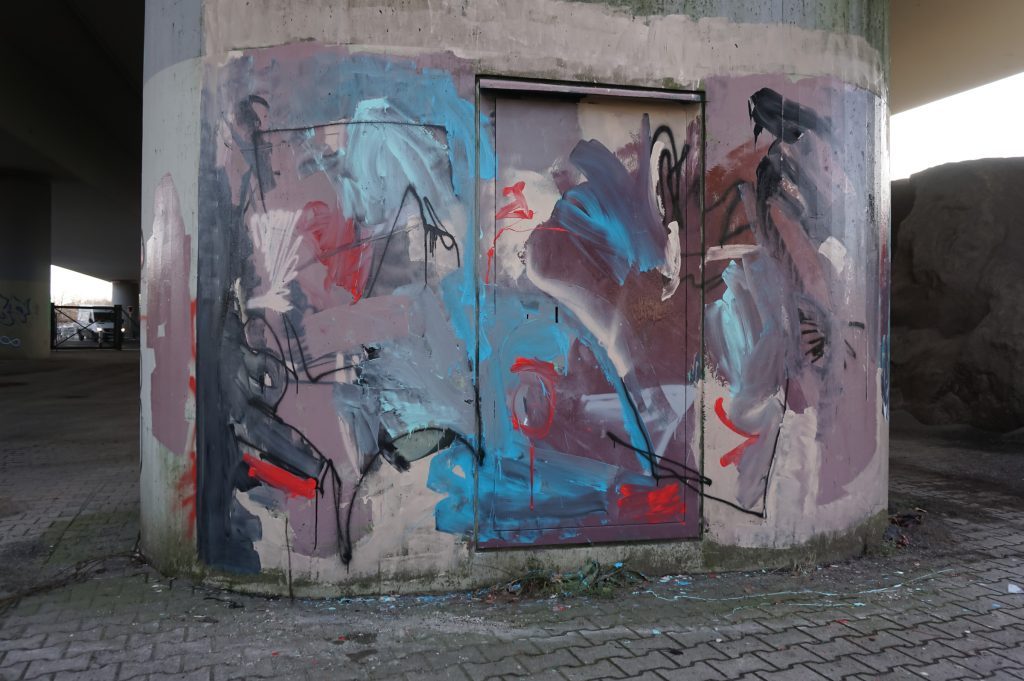
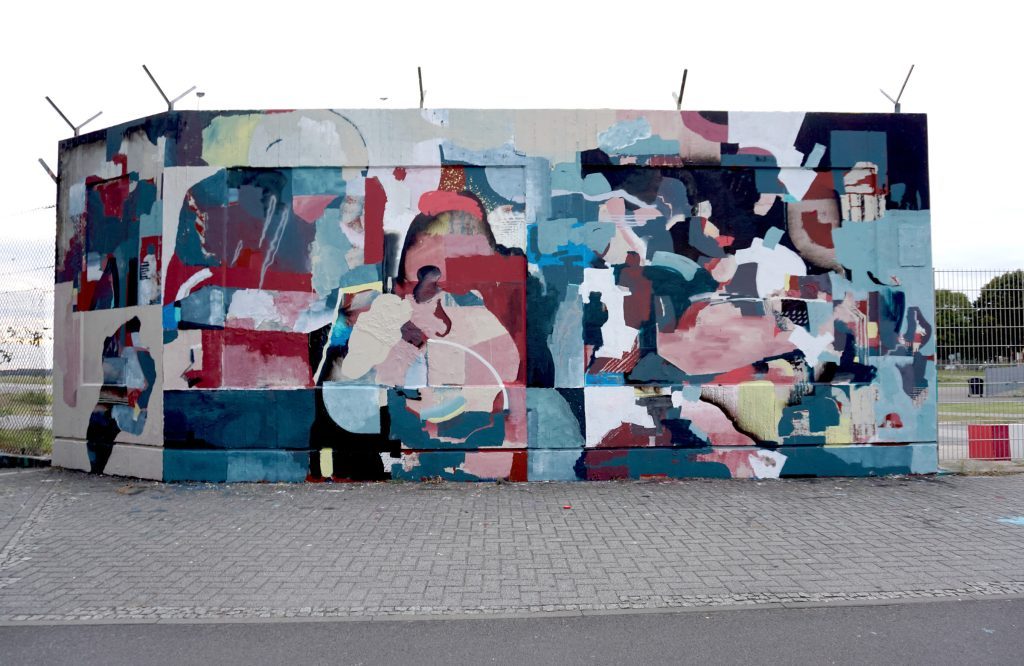
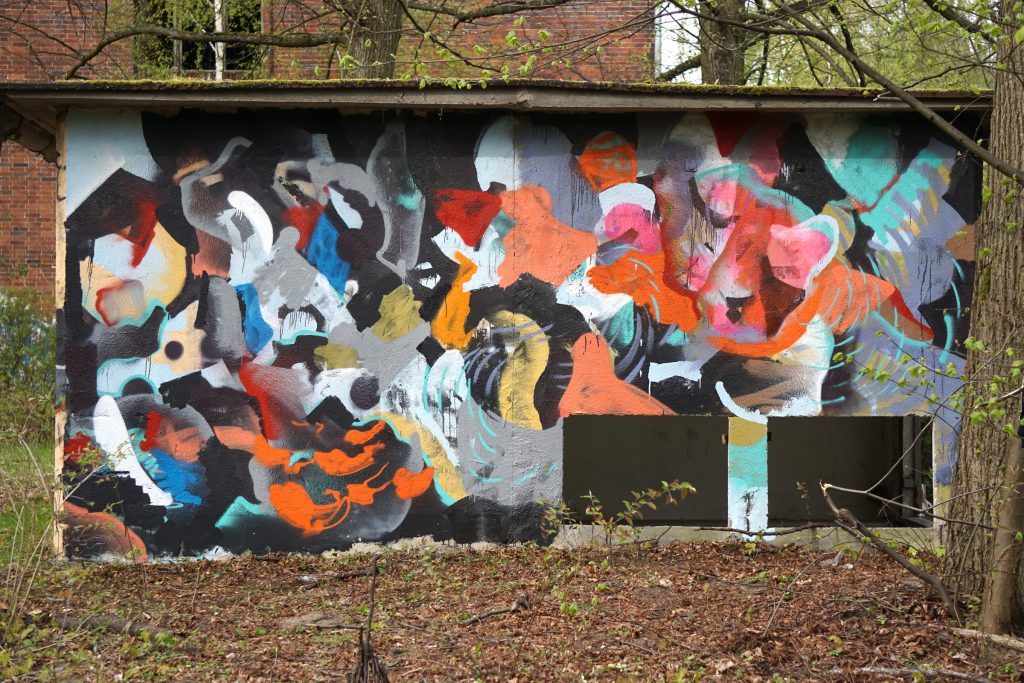
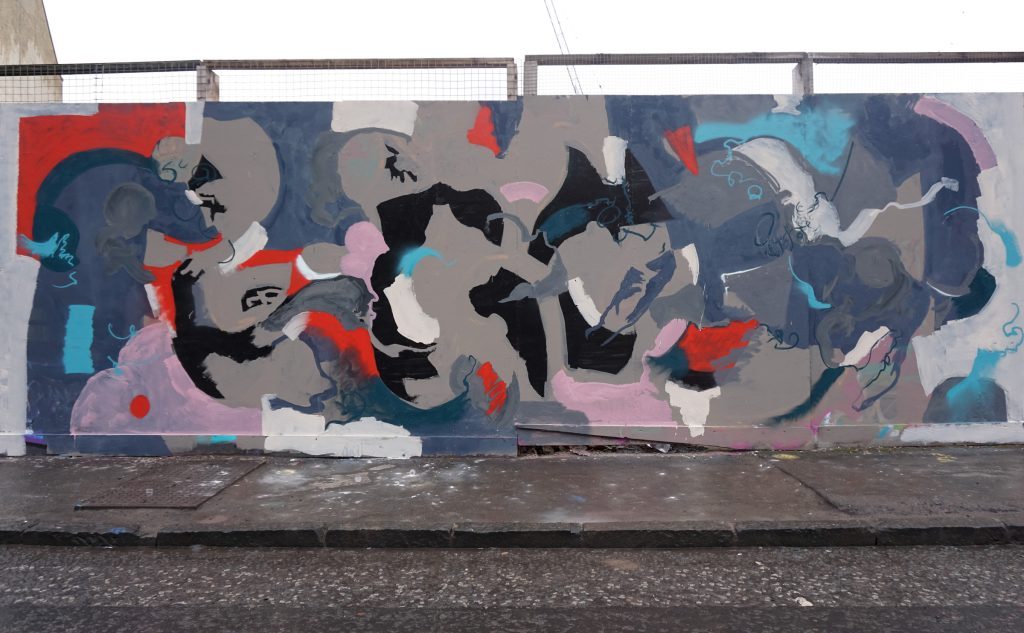
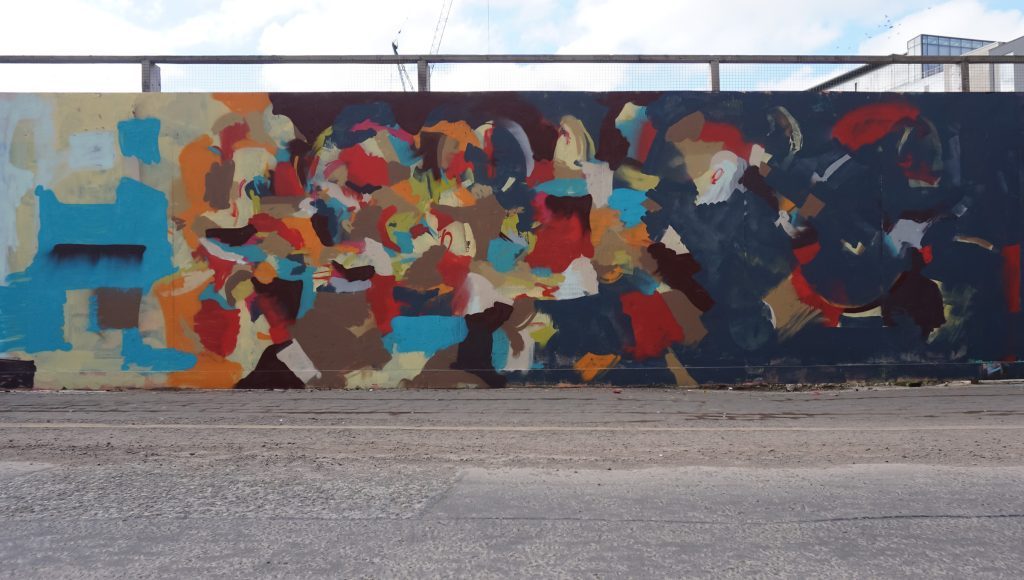
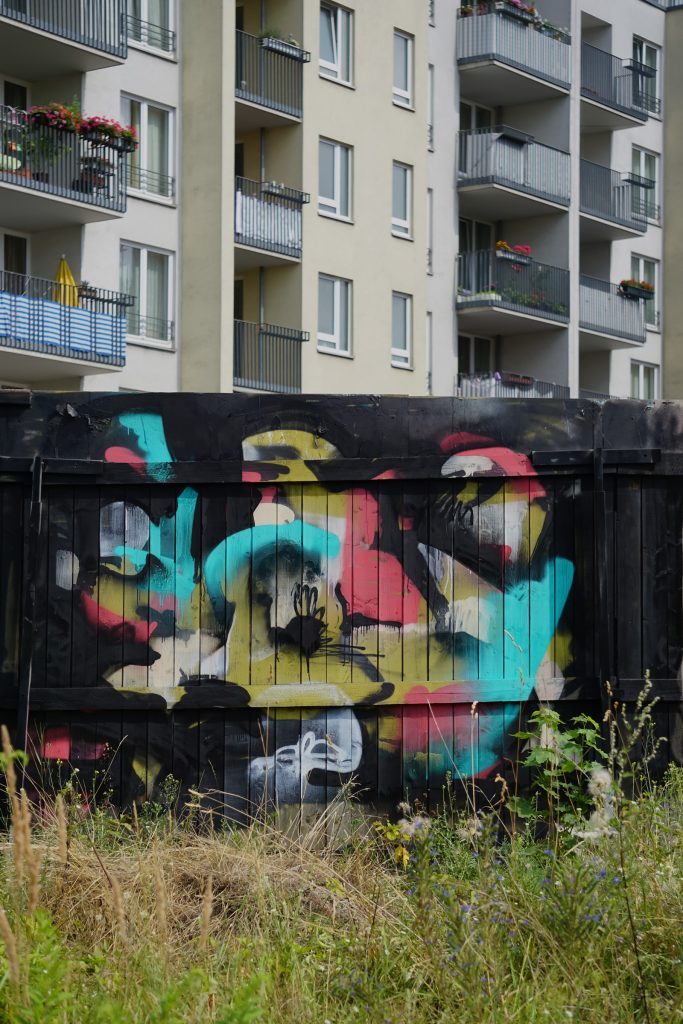
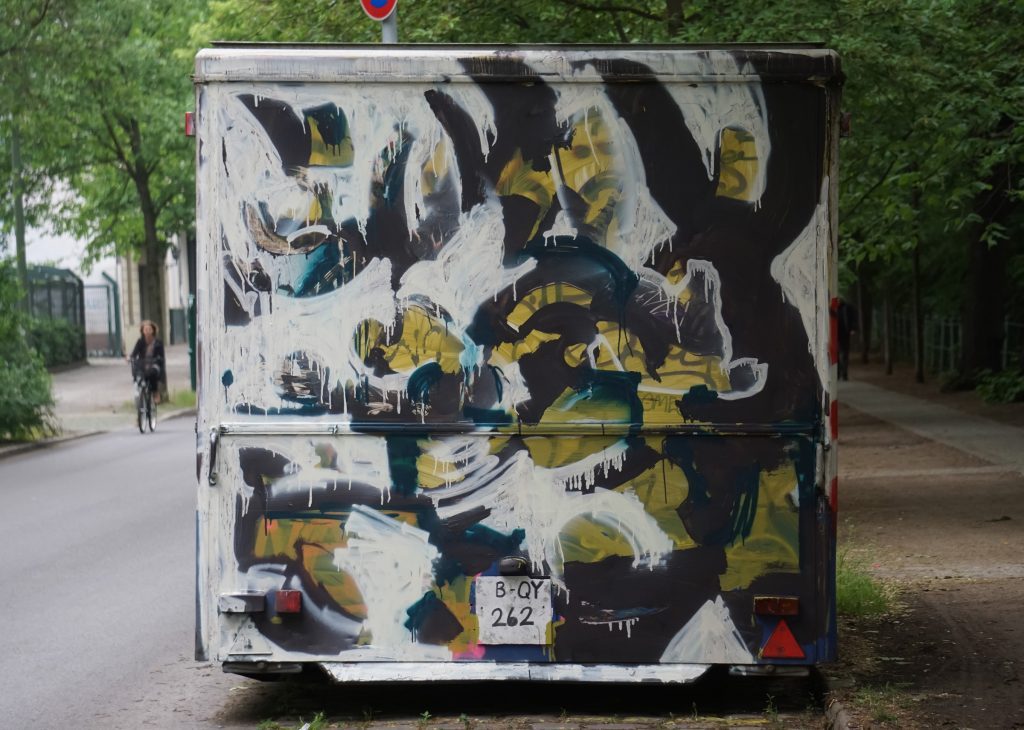
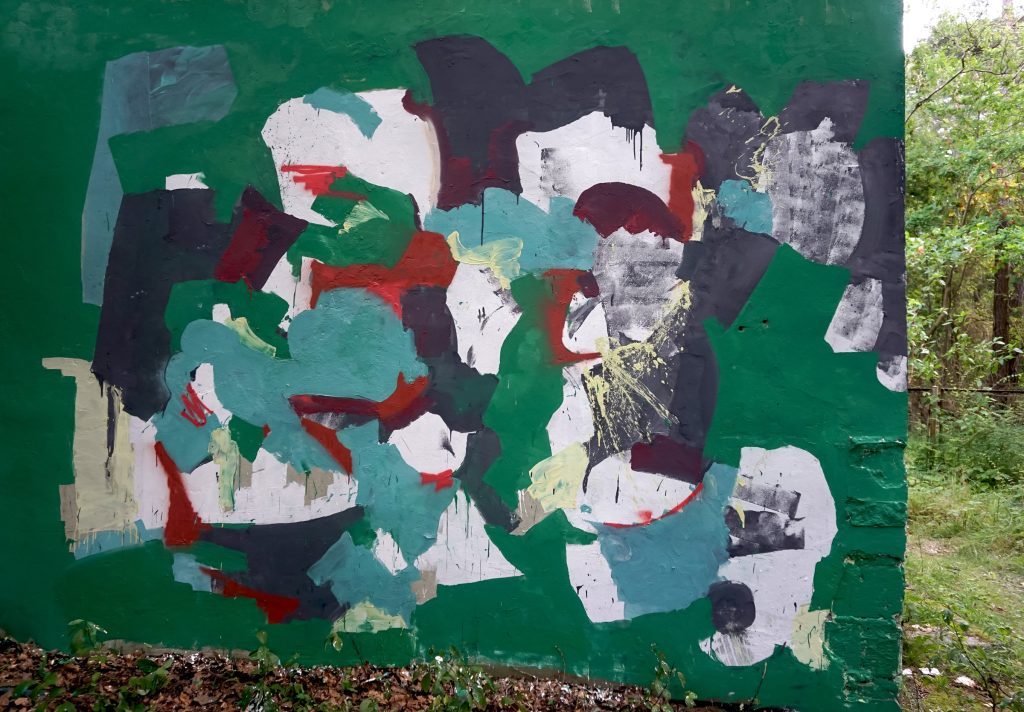
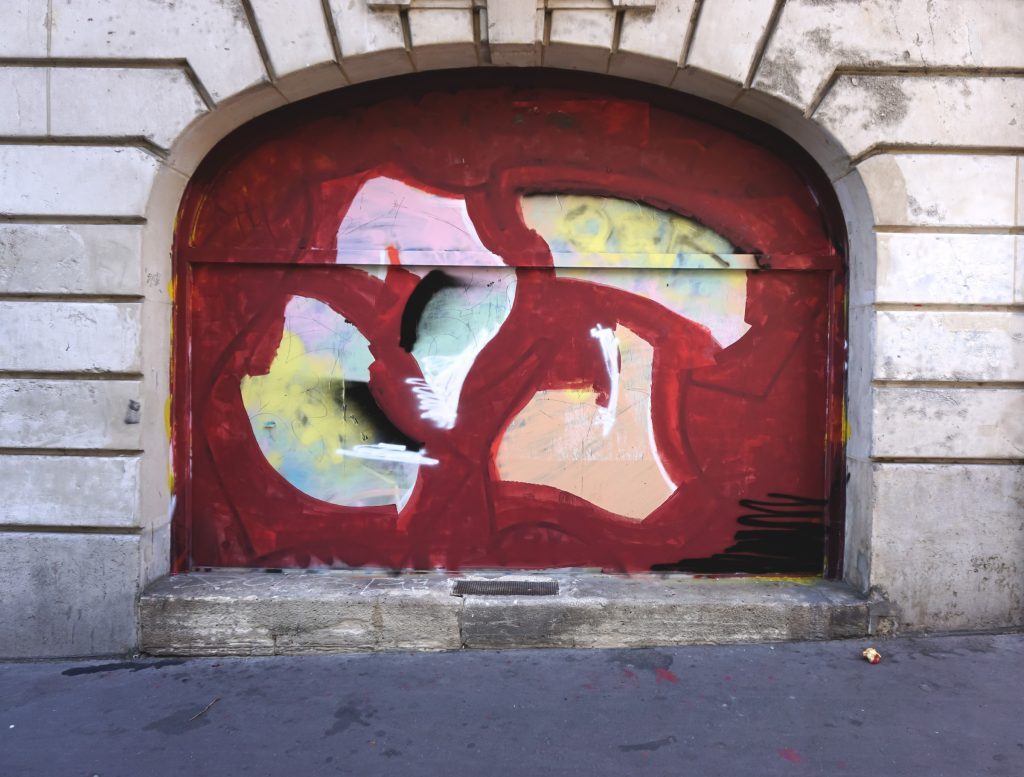
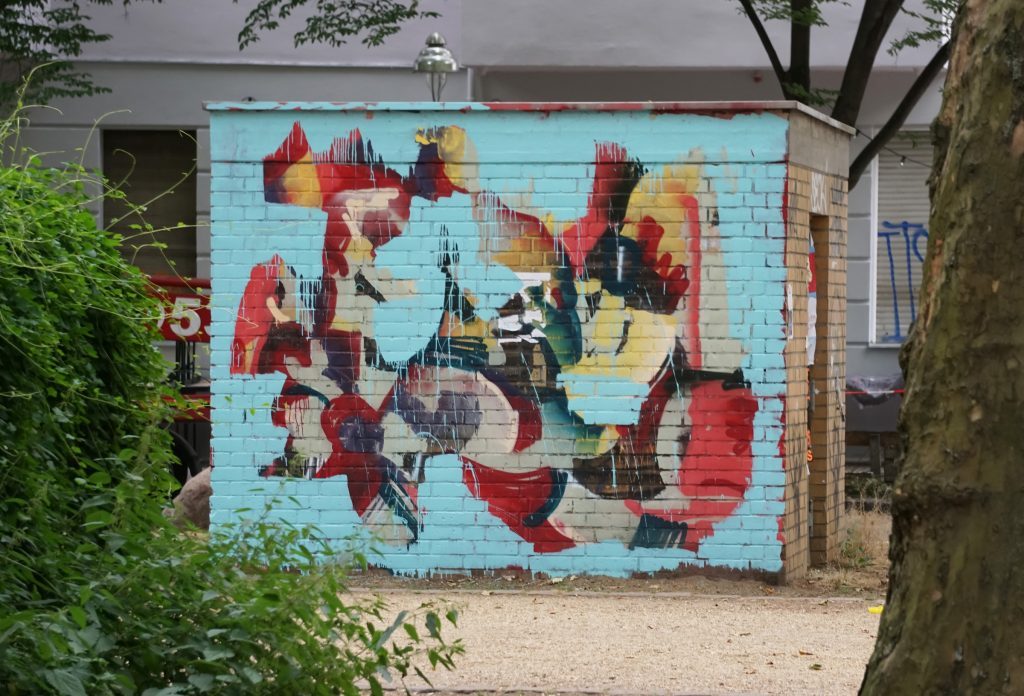
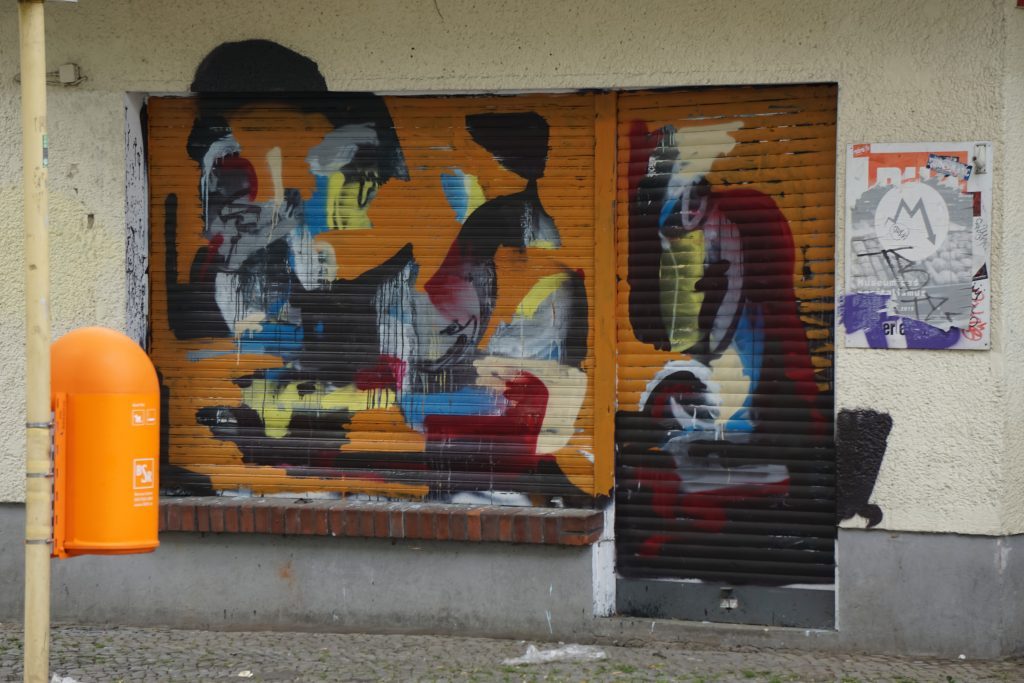
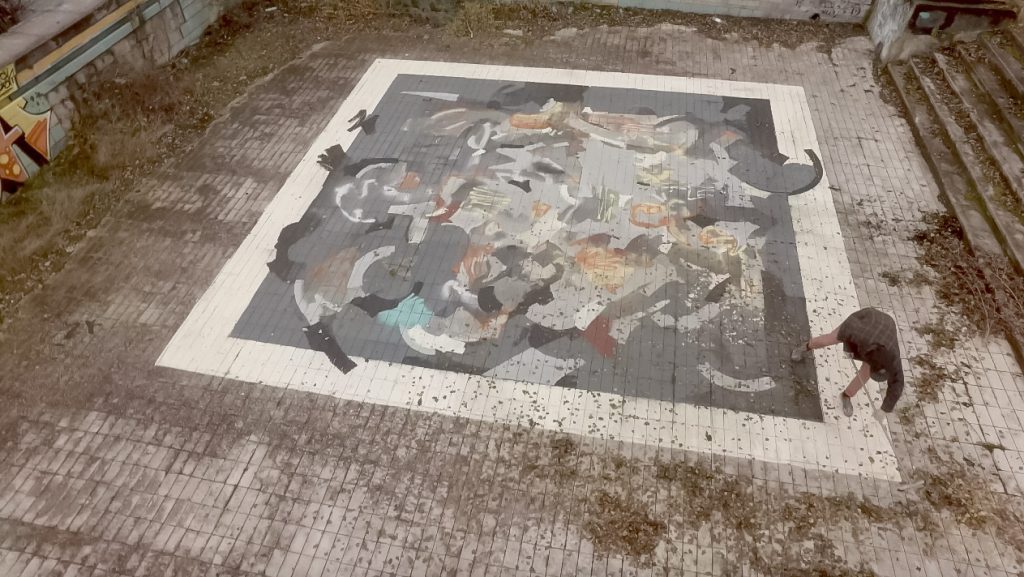
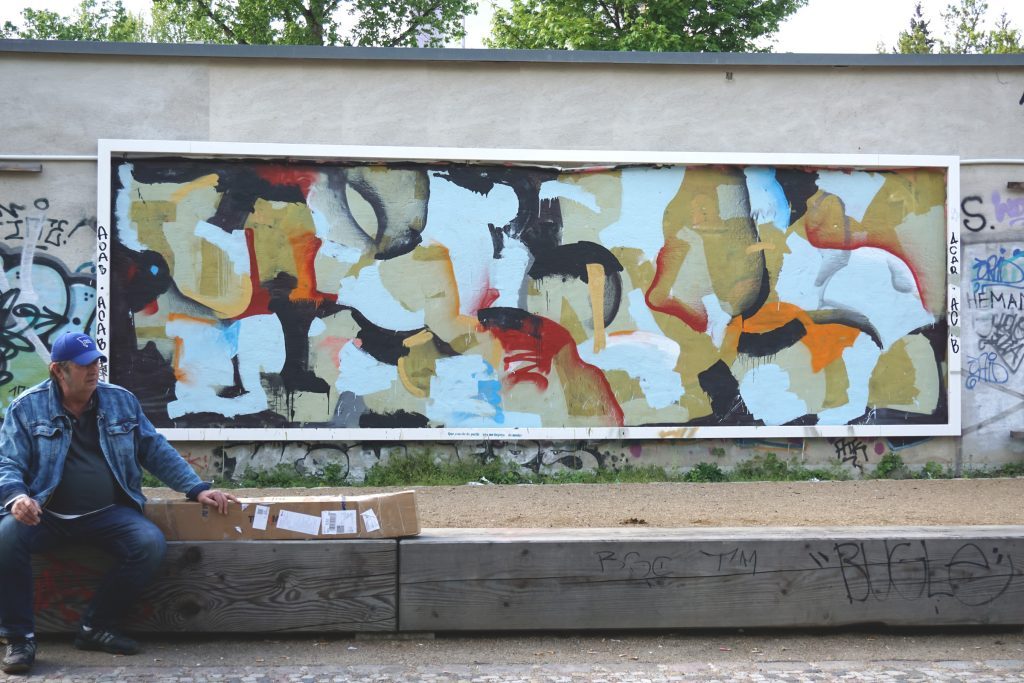
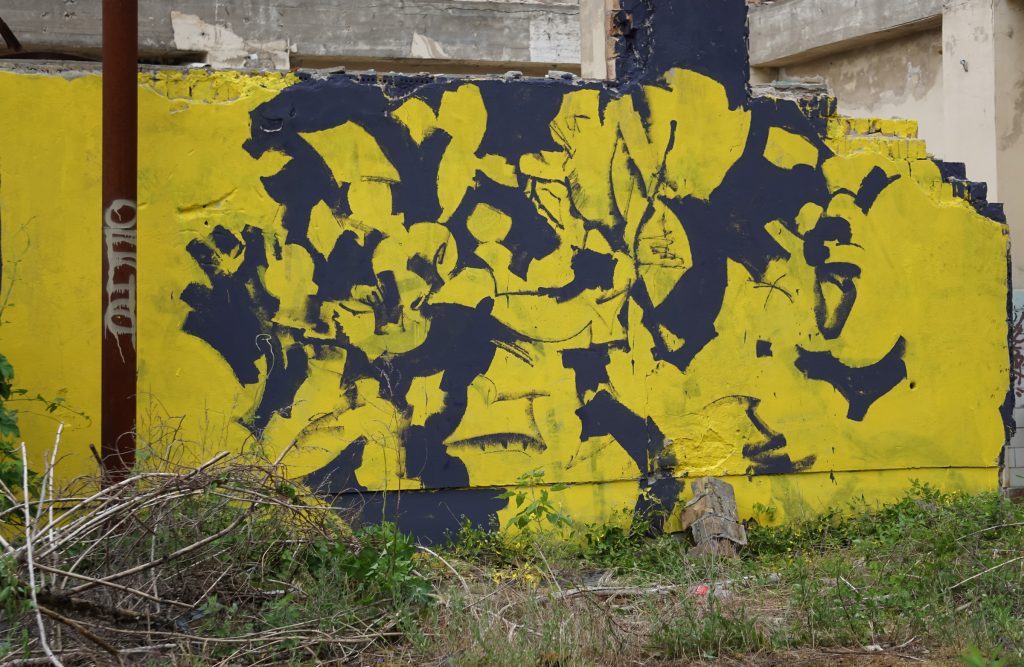
Concerns and methods of his expressionist abstraction
Sketching and drawing with pens and Rotring is a regular activity of Duncan Passmore, but he never creates a painting after a sketch. Sketching with ink allows him to find new forms, other shapes and compositional elements expressed only with lines, without color and cannot be erased or corrected.
The color palette is chosen in advance for his wall paintings, but mostly for collaborations with other artists. When he paints alone, he uses leftover paint and spontaneously chooses the colors he will apply. Despite his color blindness, Passmore uses a wide range of colors, finding exciting color combinations with contrasts, textures and layers in balanced compositions. He constantly searches for contrasts in his paintings and defines the lines of composition at first, then specifies the colors, merging different colors and tones, constantly experimenting new combinations.
In the streets, Passmore likes to paint small or midsize walls that he discovers while moving around the city. Most of the time, he works alone or sometimes in collaboration with other abstract working artists during the day or at night. With the first color, he applies different shapes spontaneously on the chosen wall with a roller and retrurns the next day. Taking a photo of it, he develops then a composition in mind, comes back with other colors the next day or for several days to add more colors, or buff some again, scratching in the paint, adding spray paint, a process that is done in steps and can take a couple of days. Once it is finished and the painting stays for a while, he goes over it again to change it sometimes or to cover some newly added tags.
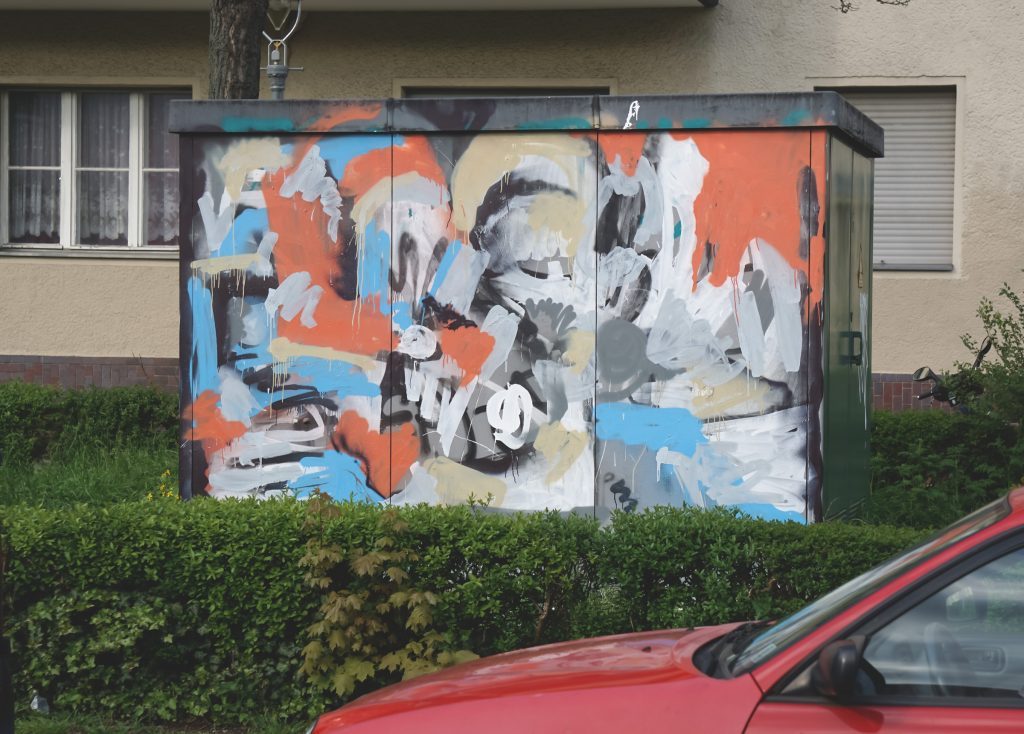
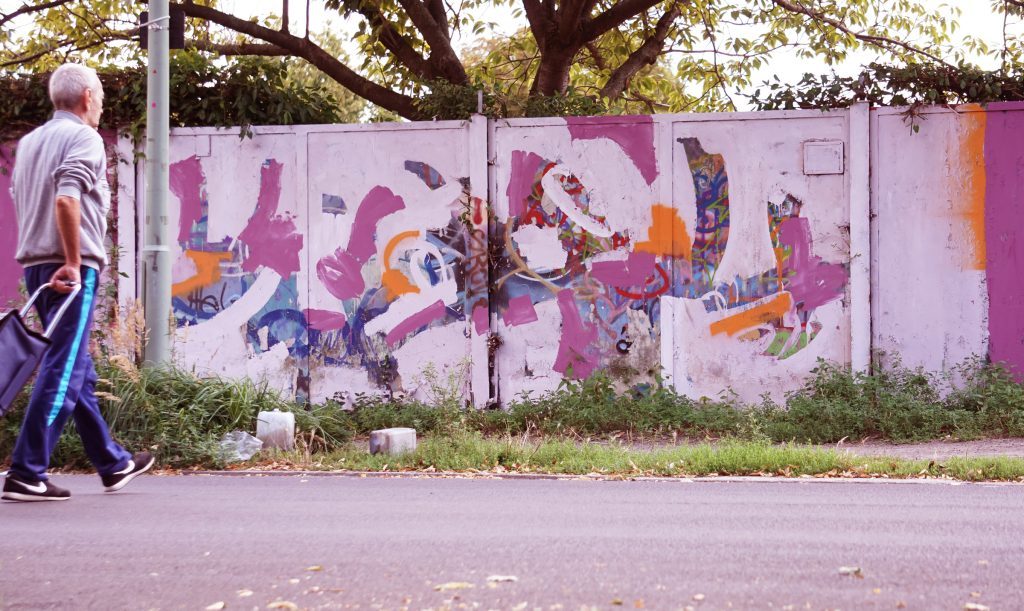
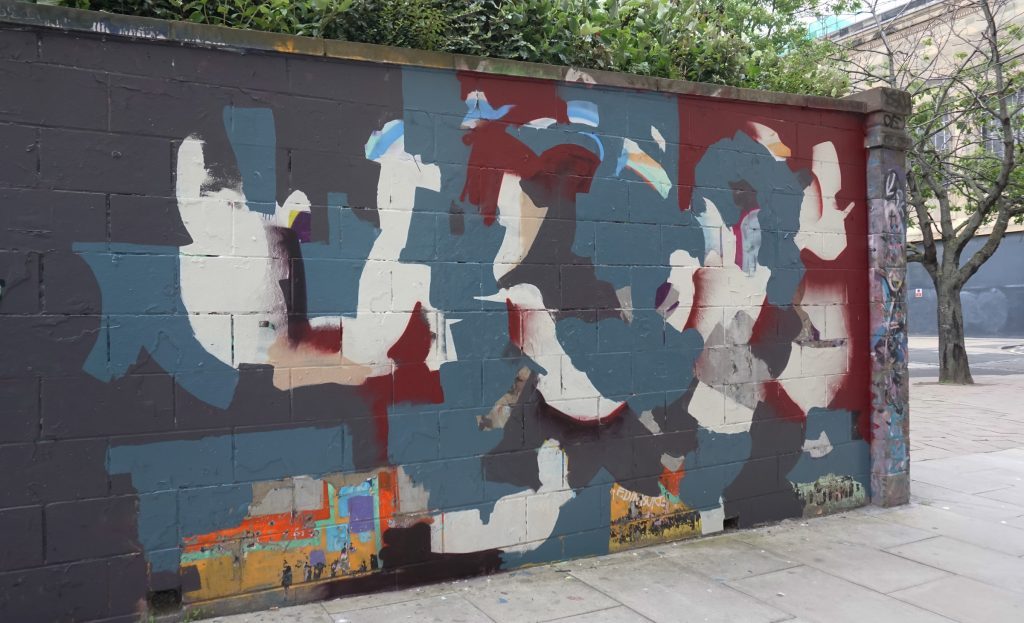
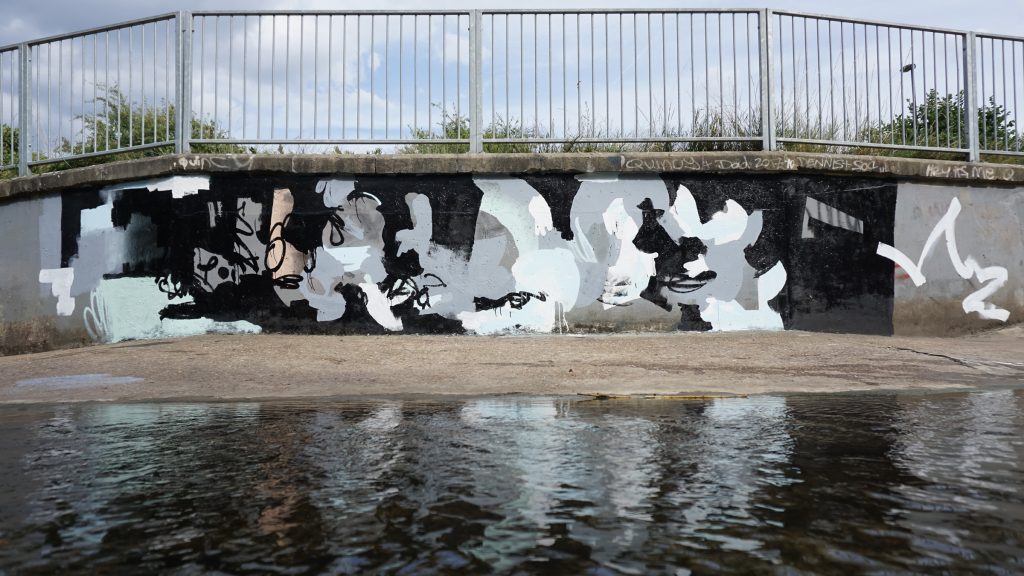
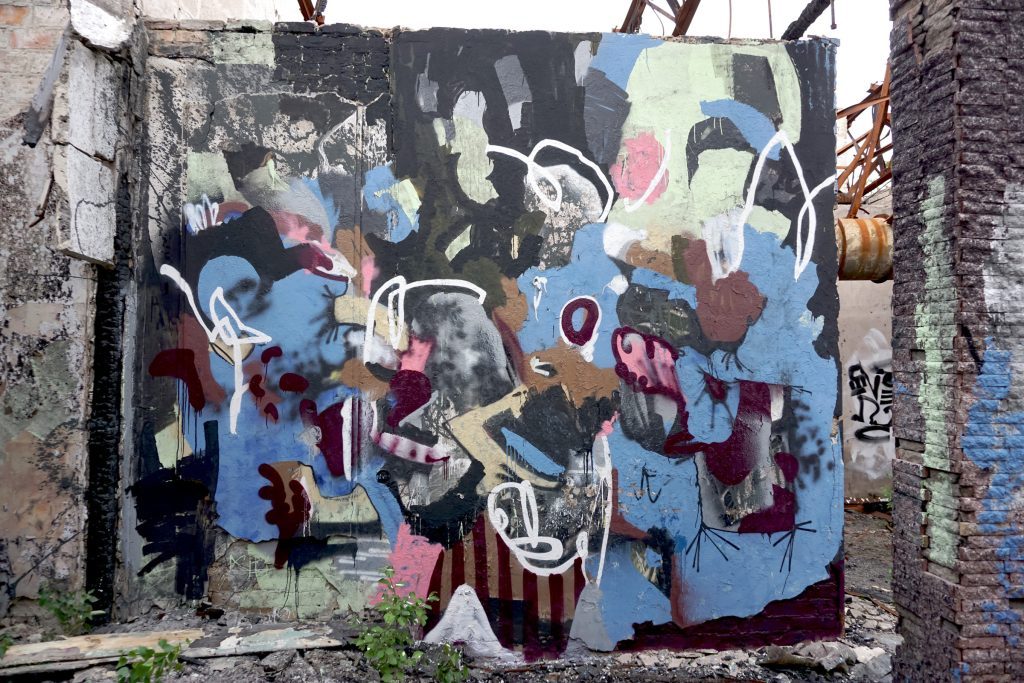
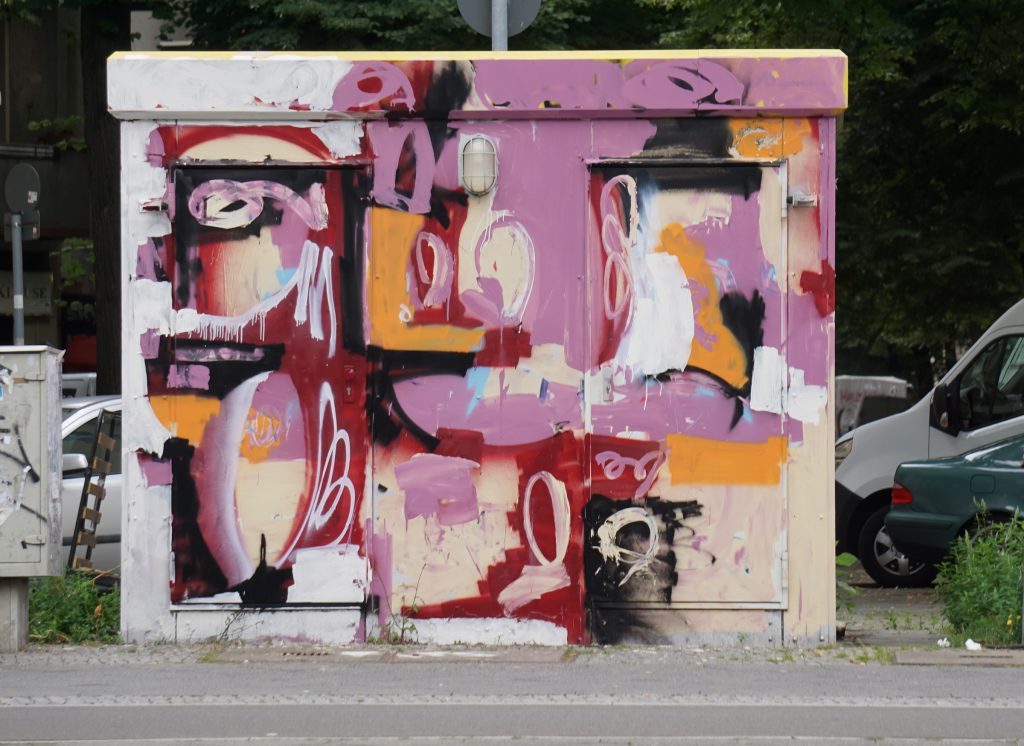
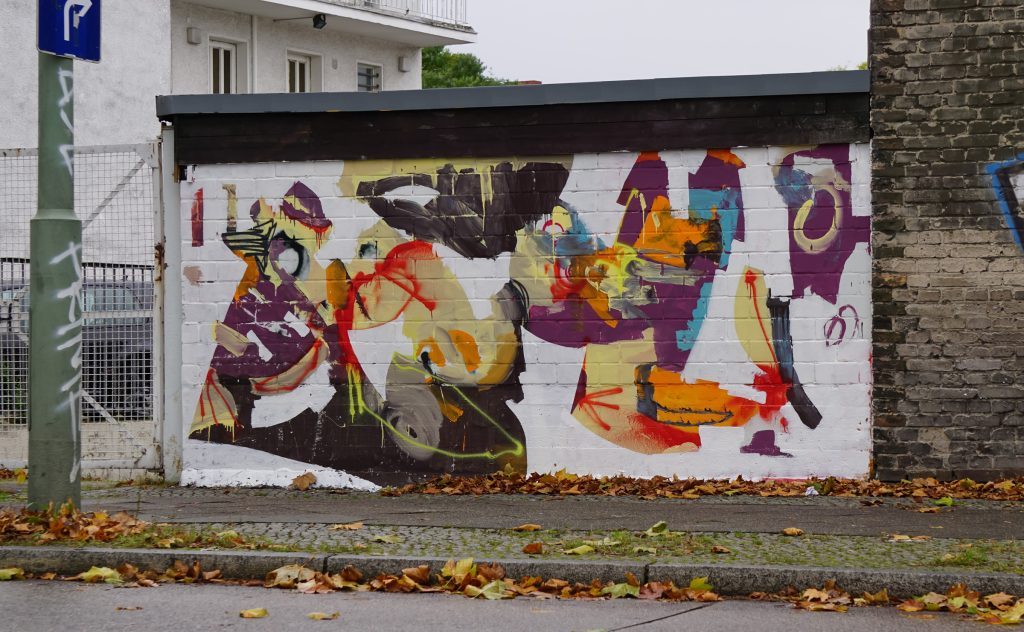
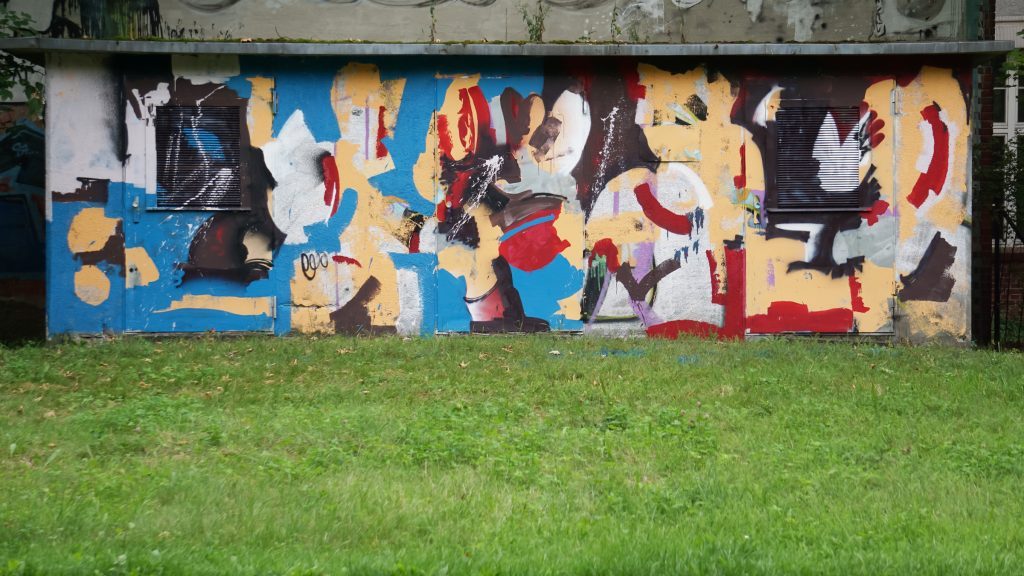
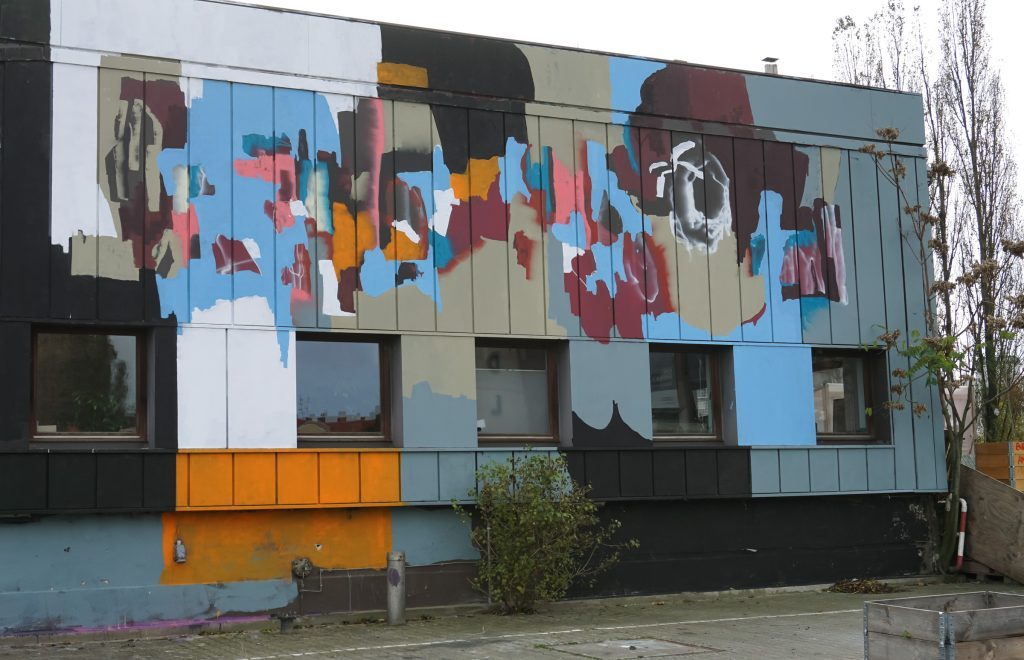
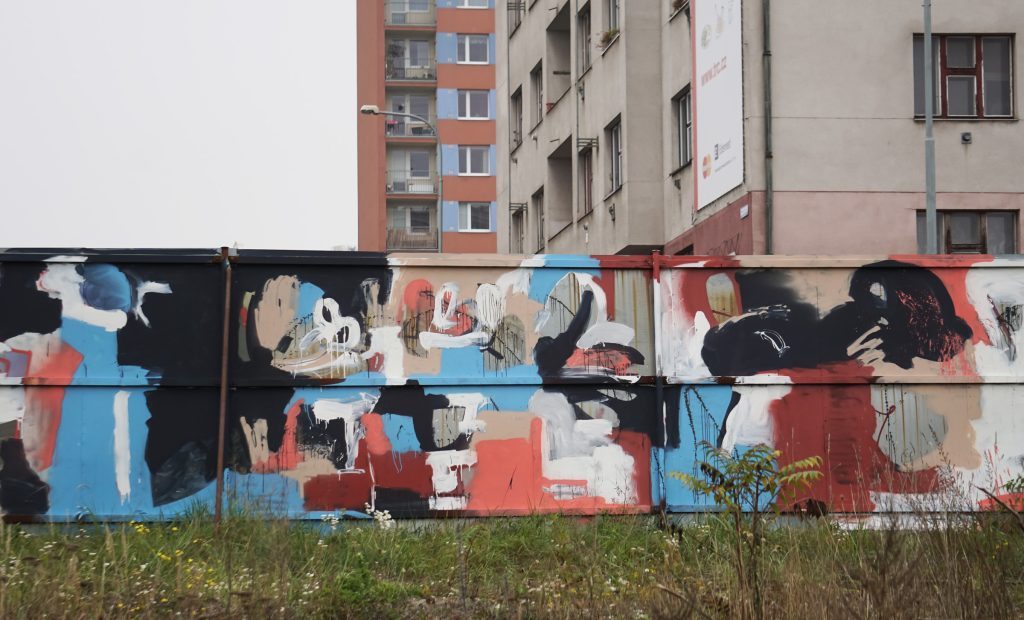
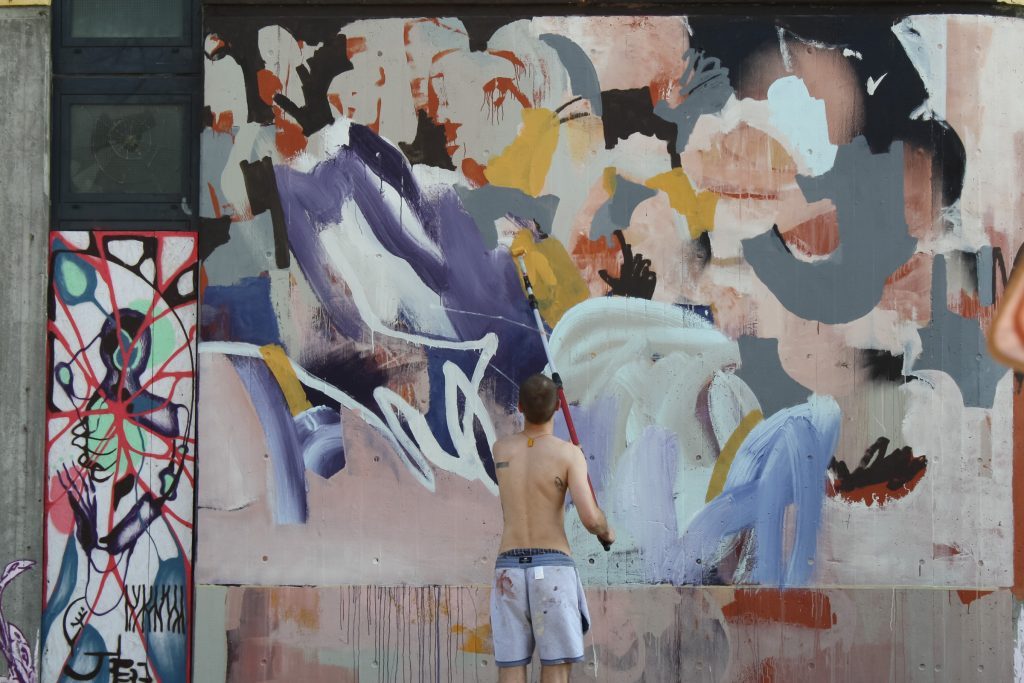
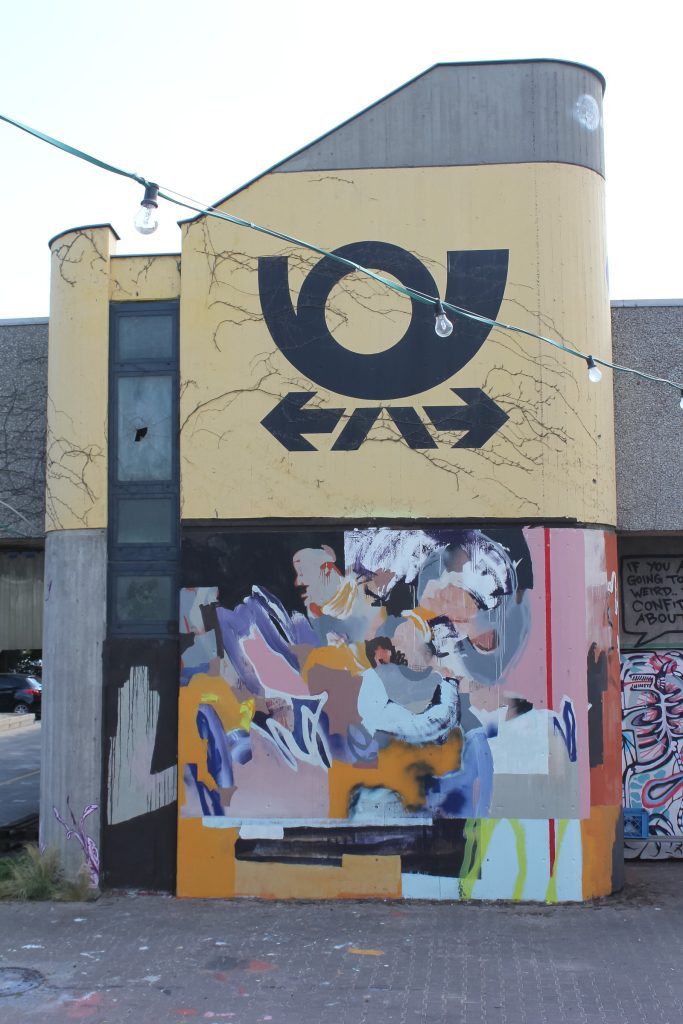
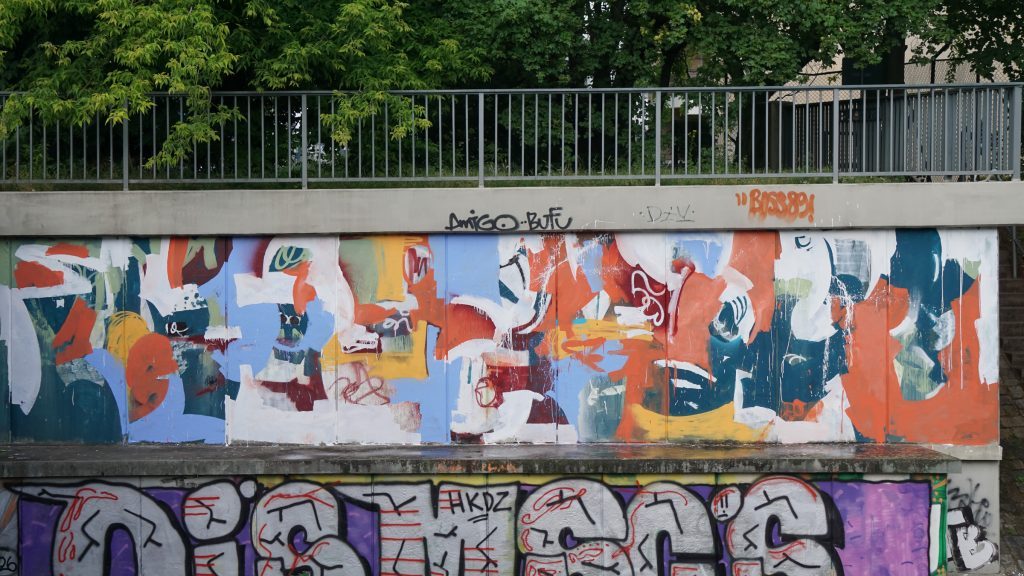
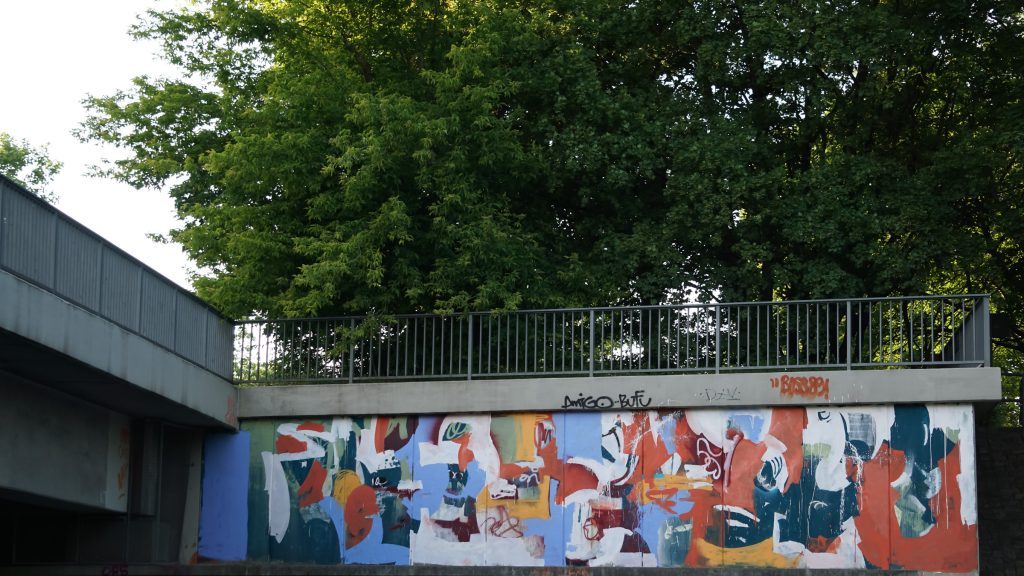
His work is at first spontaneous and fluid, like action painting. Passmore compares the implication of the gesture and the body while painting with dancing. He applies the paint instinctively, and those applications become the shapes of the abstract composition. While painting, he always struggles against defined or too figurative shapes, covering, adding, transforming…The forms recall expression and movement, according to Passmore, and if some get too specified, he paints over again, destroying shapes, to making them more undefined again, nebulous and more abstracted. The texture of his paint on walls emerging from the different layers and his manipulations becomes an integral part of his compositions that can be felt as collages and décollages concerning the process of adding and removing and the final result.
In the search of an inner balance of composition, the process is the most important, according to the artist. Playing with pareidolia, his immersive paintings include realms of non-defined figurative rudiments and abstraction. Pareidolia is the tendency for perception to impose a meaningful interpretation on a nebulous stimulus, usually visual, so that one sees an object, pattern, or meaning where there is none. With this in mind, the playful working method with a mixed media technique is the power of Passmore’s work. The viewer is attracted by the nebulous shapes and colors of painted fields, looking for representations, and might find here and there something reminding a figure, a body, a face. Objective forms may appear and disappear in the sensual compositions of a figurative painter who works with expressionist abstraction. Because Passmore still thinks figuratively and this can be felt in his work, in the way he feels compositions, movement and dynamics, and creating „half shapes“, firm and open at the same time. The painters’ intention is to create „open“ images where the viewer is free to decide what he sees in it.
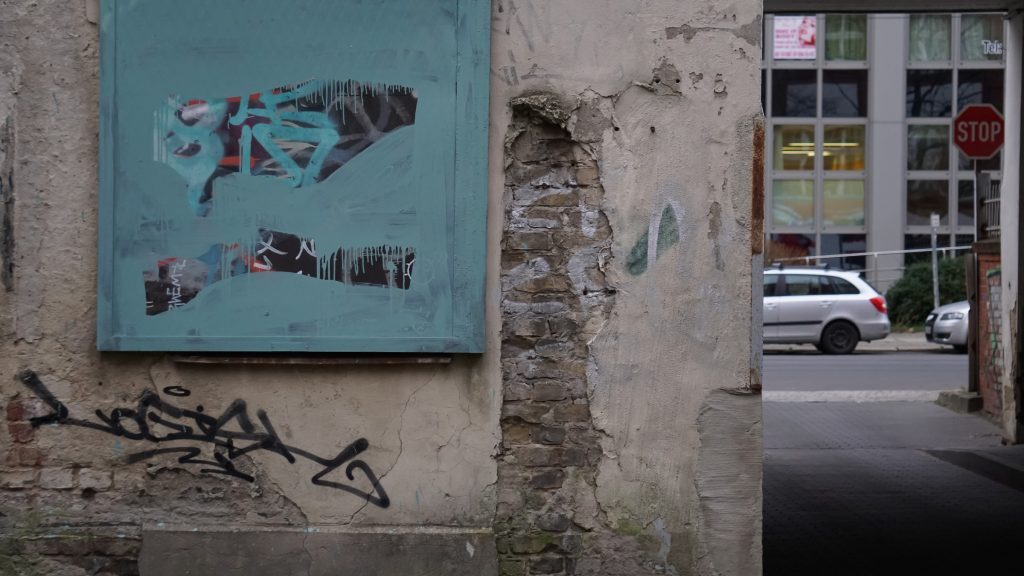
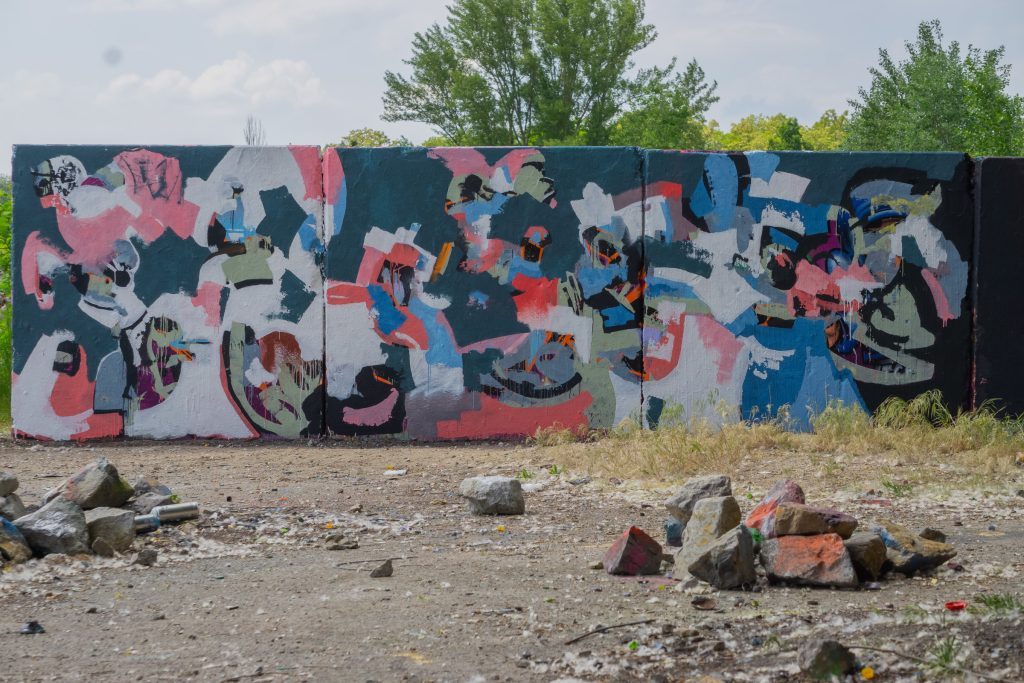
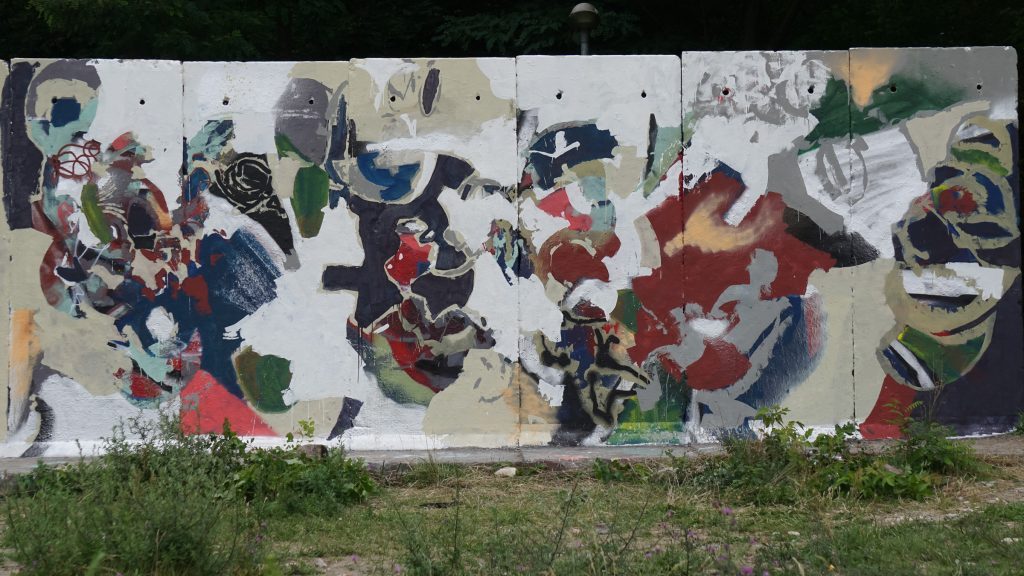
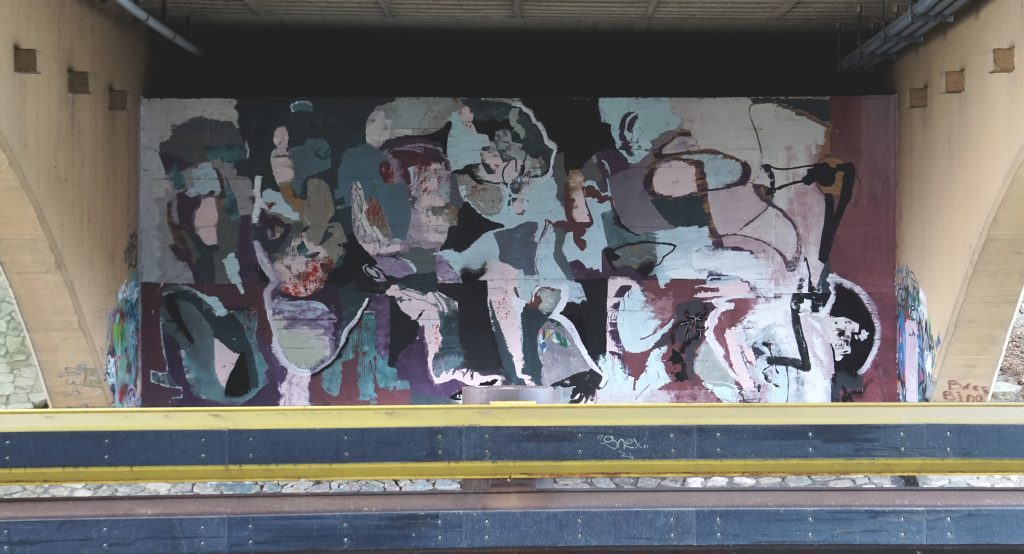
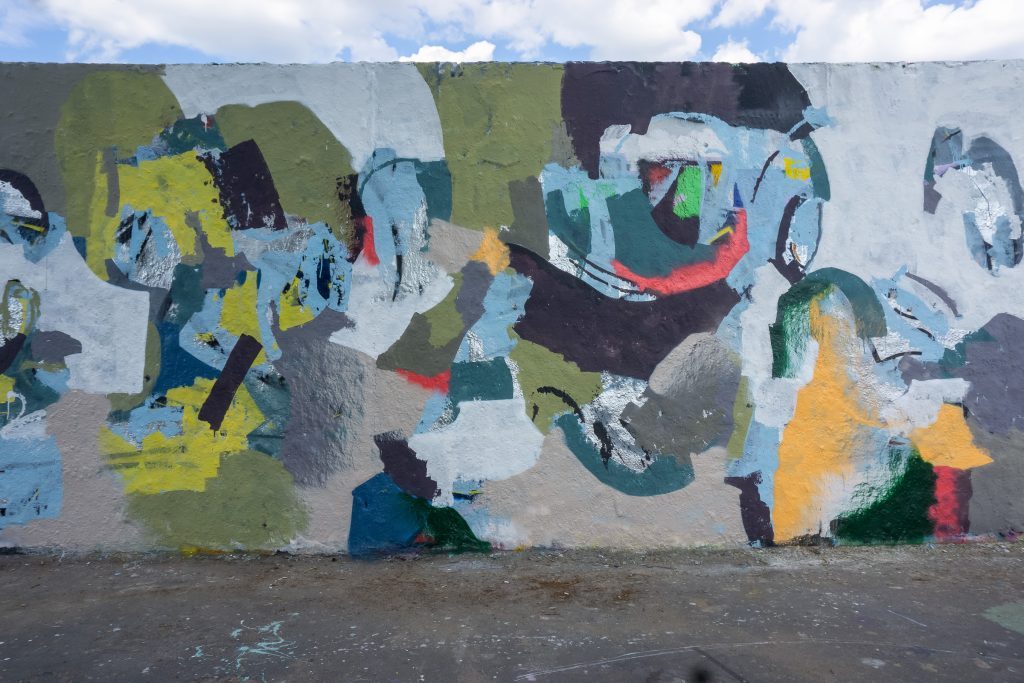
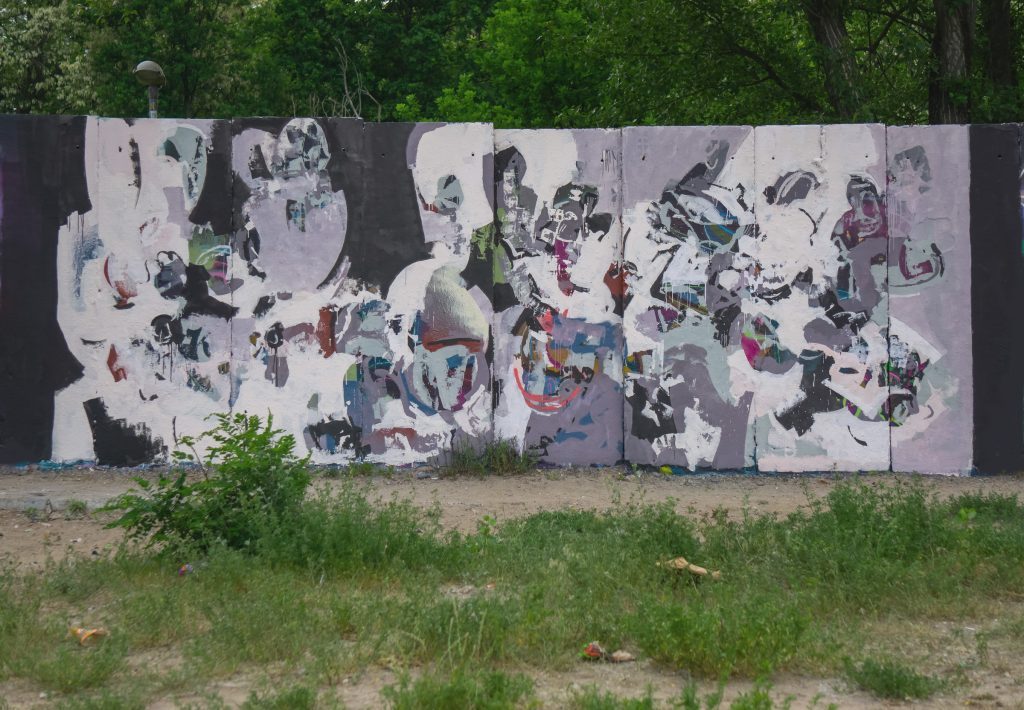
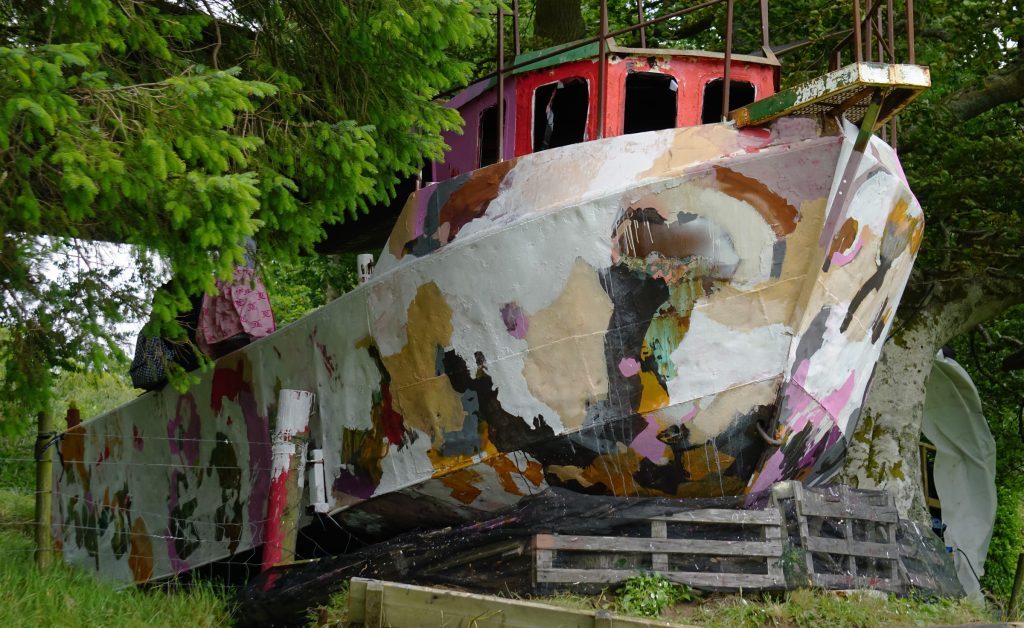
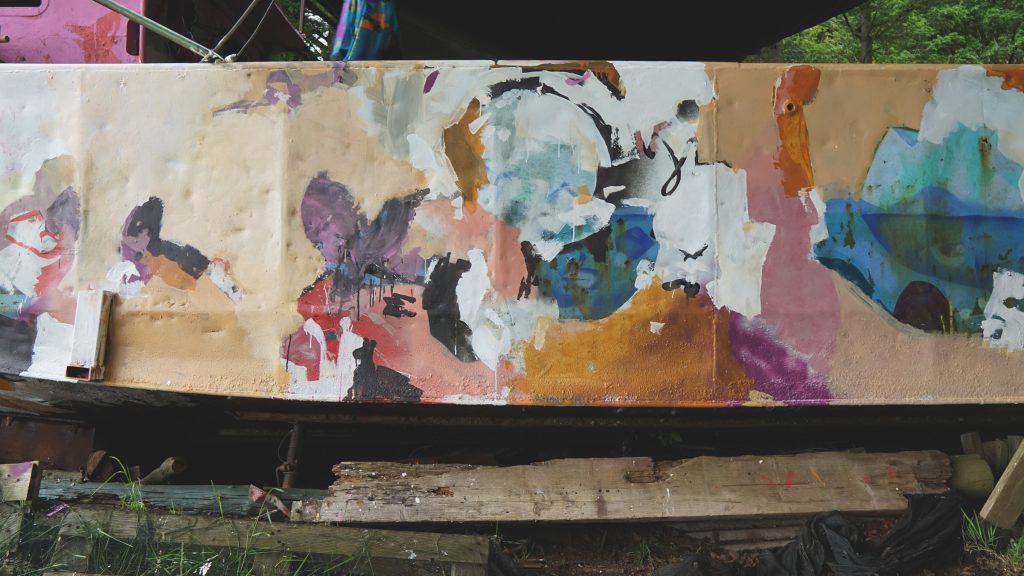
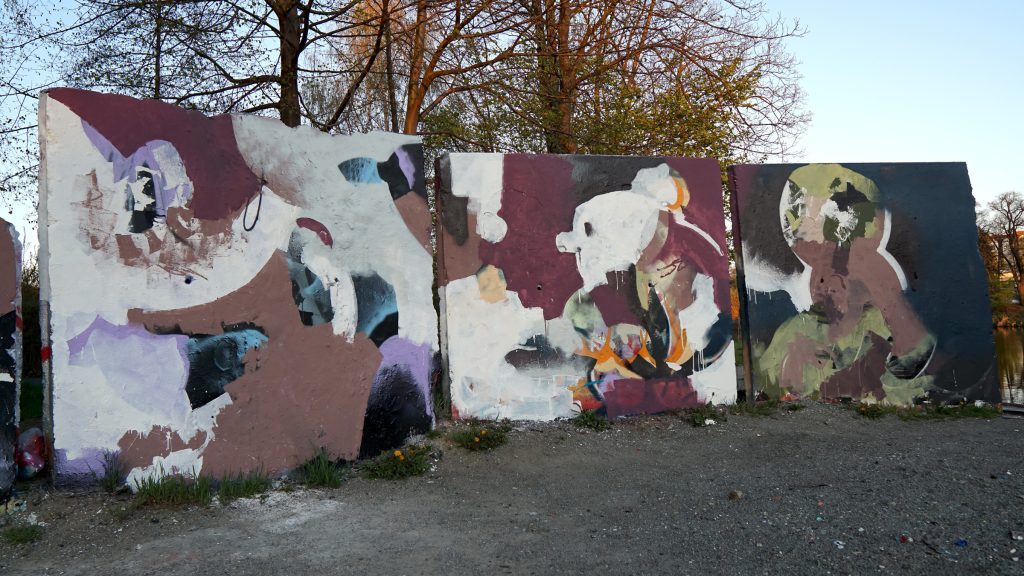
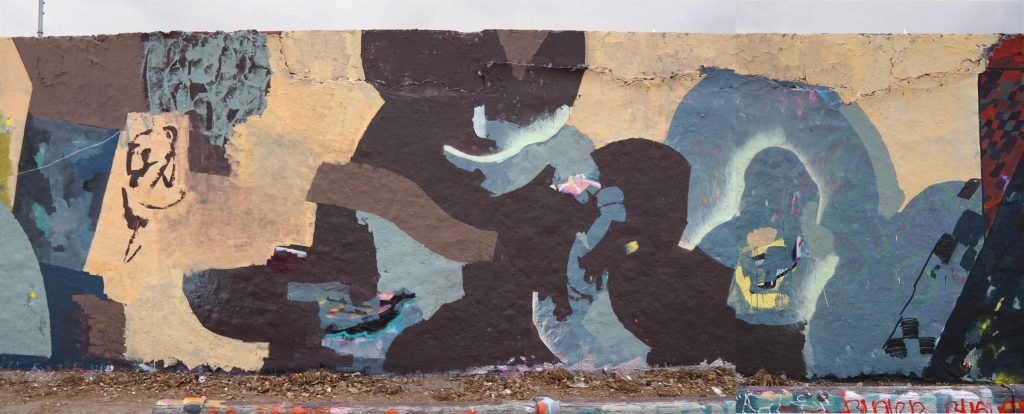
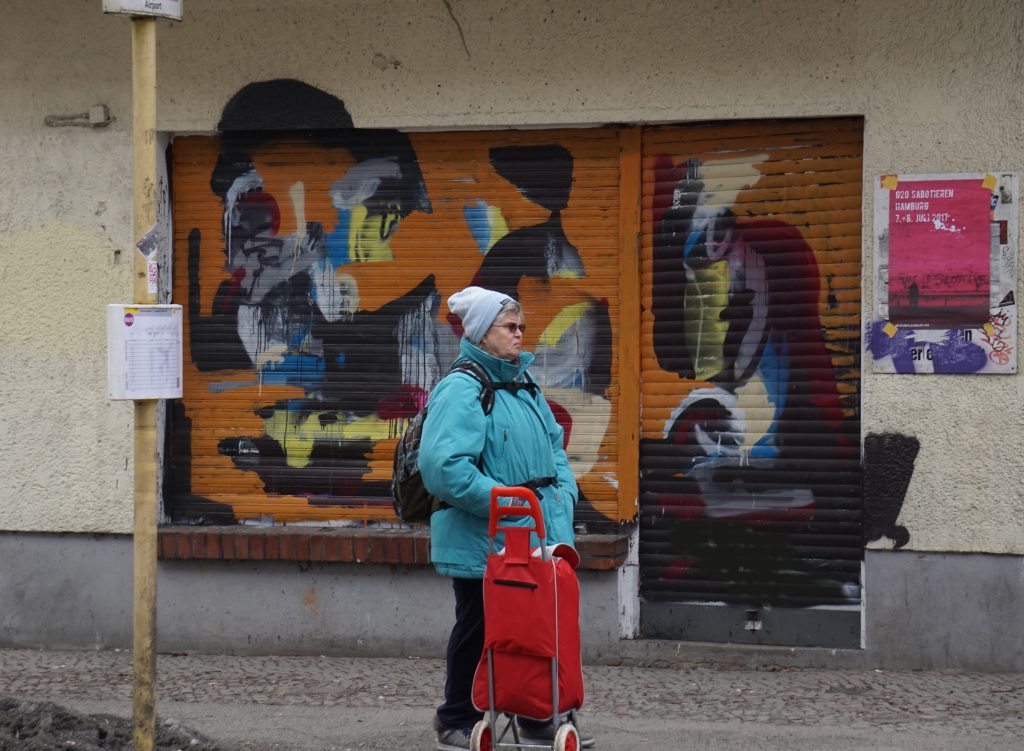

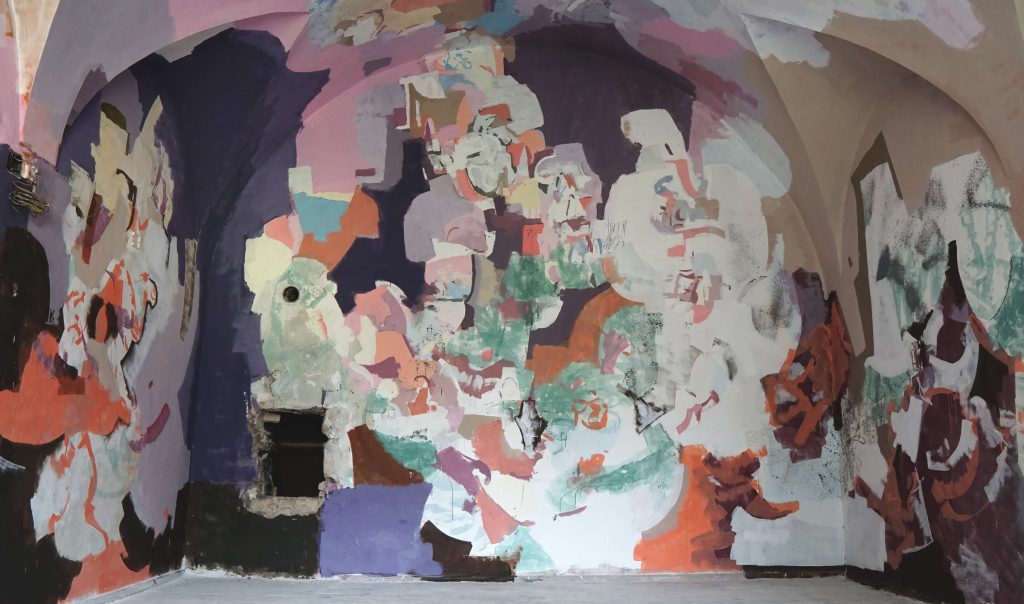
Mixed media studio works
Inspired by figurative painters like Lucian Freud, Francis Bacon and Peter Howson, Passmore is generally interested in art but also in science. Philosophy, physics like plasma physics, fractal geometry, electromagnetism and visual representation and imprints, in general, are fields and topics that occupy him spiritually for his visual language.
In his studio practice, the painter works on canvas with acrylic and oil paint. For the background he uses acrylic, which dries fast, and then adds oil painting. Oil painting allows him to interact for a longer period because of a long drying process: he scratches in it, greases, changes, dilutes, thickens or covers the paint again to obtain a satisfying result. Through his experience with street painting, where you should paint fast, even if in steps, Passmore developed a feeling for a flowing instinctive painting process that he tries to apply to his work on canvas as well. As he says, outdoor and indoor activities influence each other anyway to develop painting further.
In his recent canvas series, he experimented in adding charcoal to the paint. Inspired by Renaissance or Baroque frescoes, his new series of paintings show a reduced color palette and an open composition, playing with space, depth and plains, where the image alignment is not fixed. The canvas can be turned around in every sense ; the composition is built around the center of the surface in a kind of paint mist. Passmore experimented with this kind of composition as well outdoor in 2016, breaking the classic panoramic format of wall paintings, painting in a square format on an abandoned outdoor pool in Lichtenberg photographed by satellite on google maps.
Always searching for a curious harmony in his paintings speaking to our subconscious, Passmore describes his last studio series of work as follow: „My last studio series focused on reduction in composition and palette. By removing color, I aimed to focus on expressions and figures that the eye would allow to rotate, and thus develop the concept of a „Gestalt based order of things“, which battles for meaning within a maelstrom of „chaotic expressiveness“.
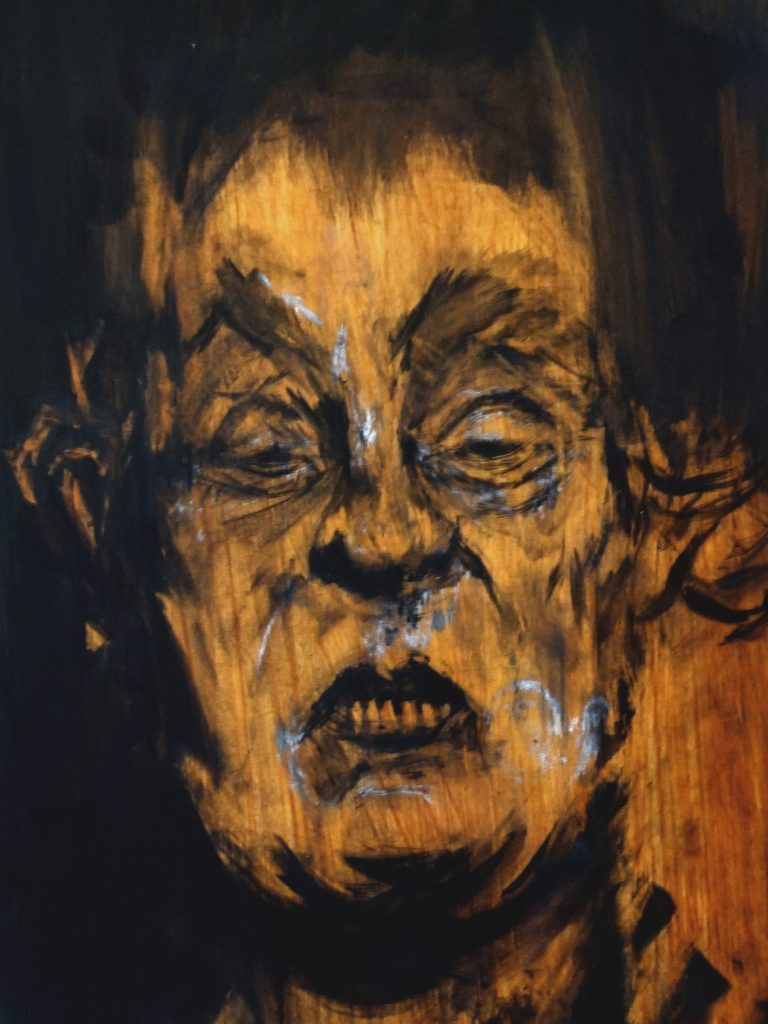
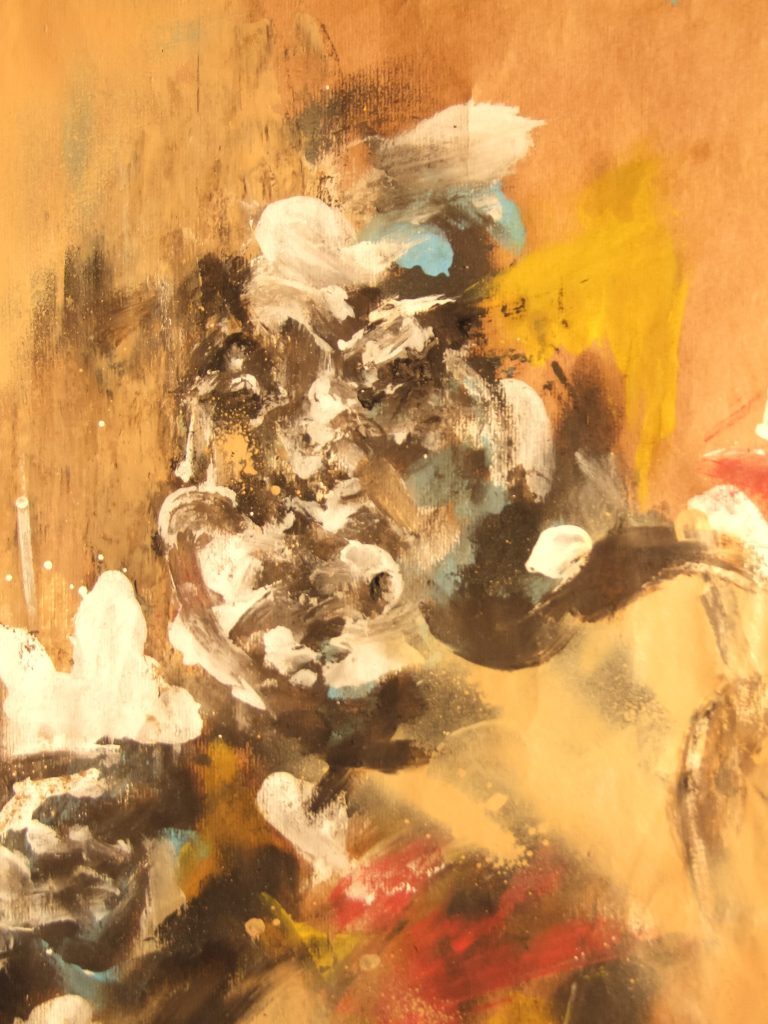
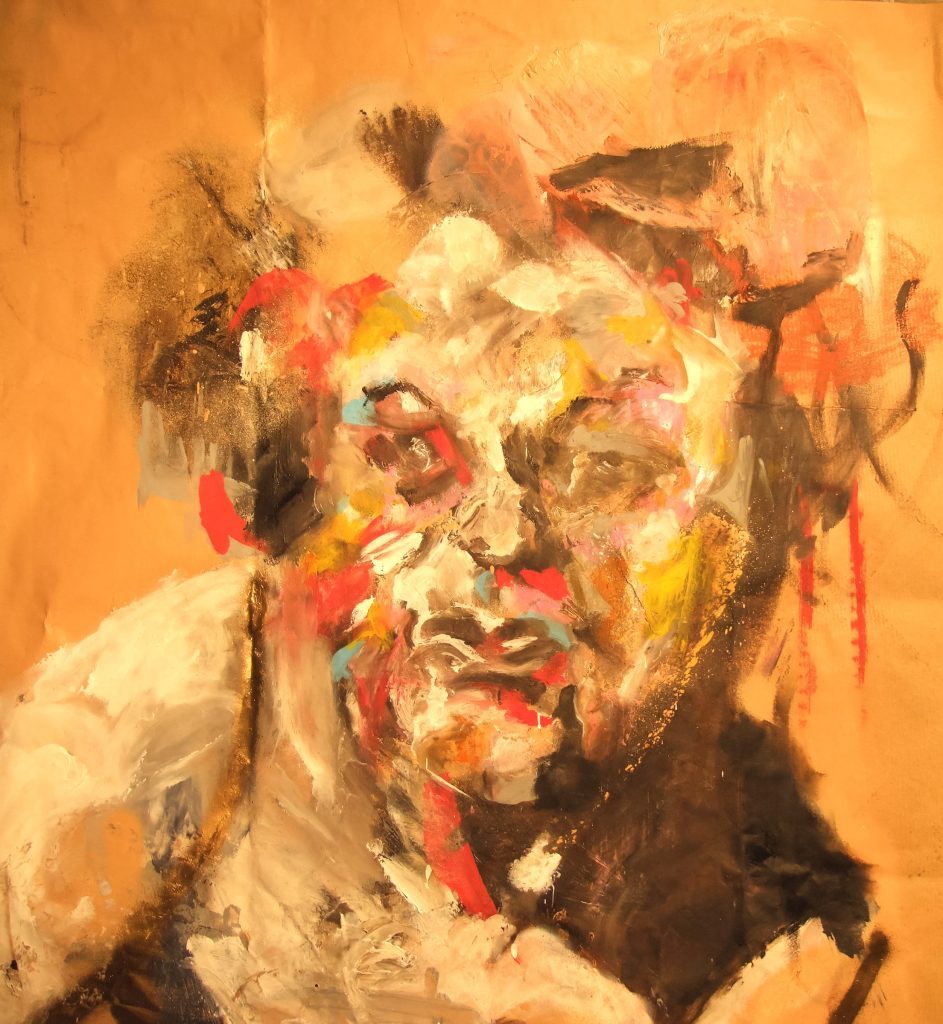
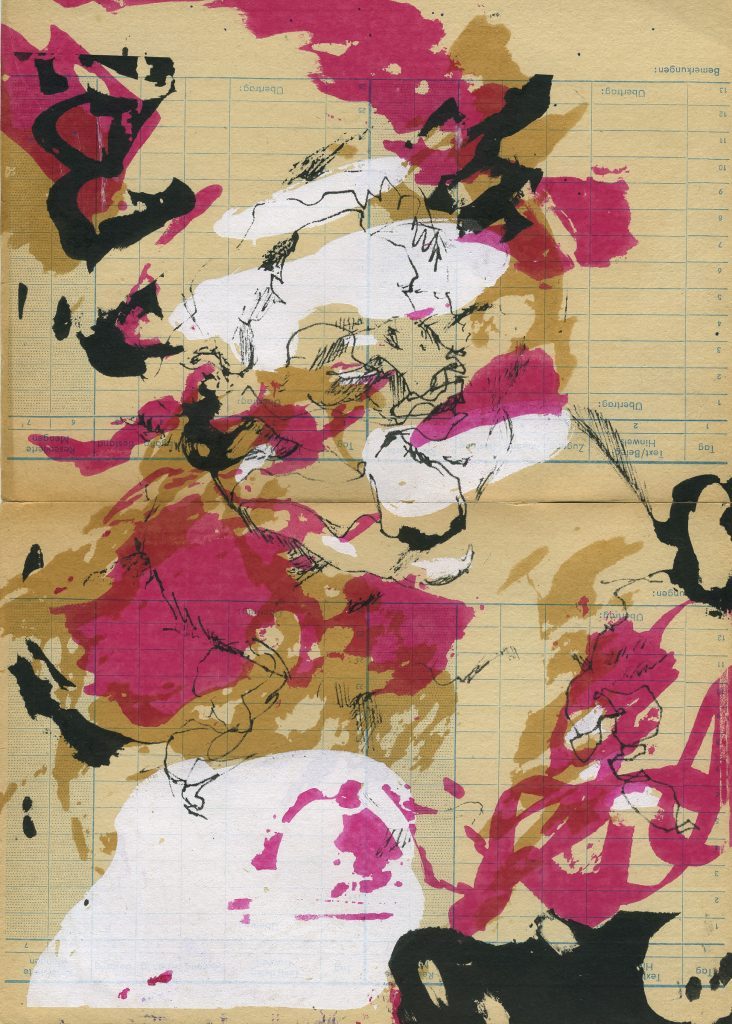
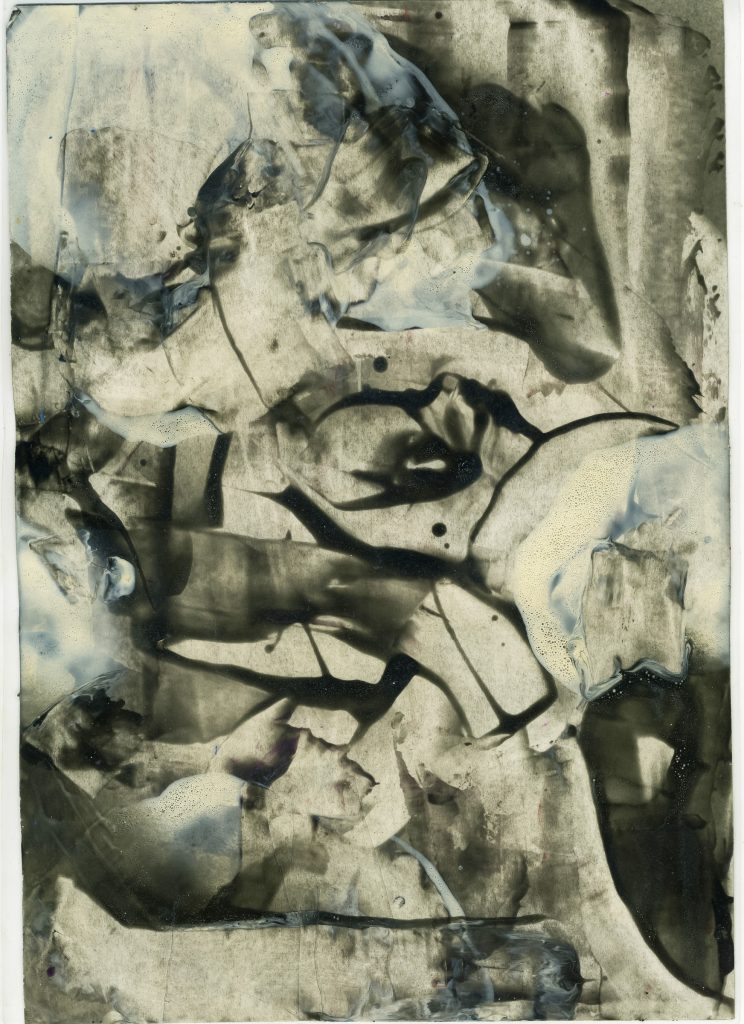
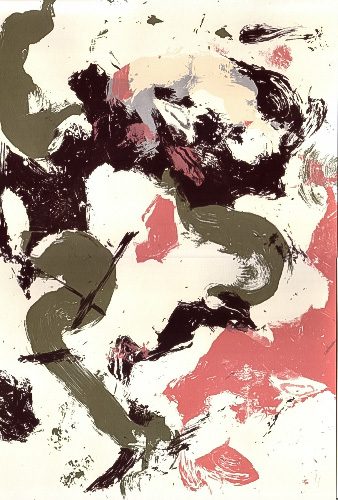
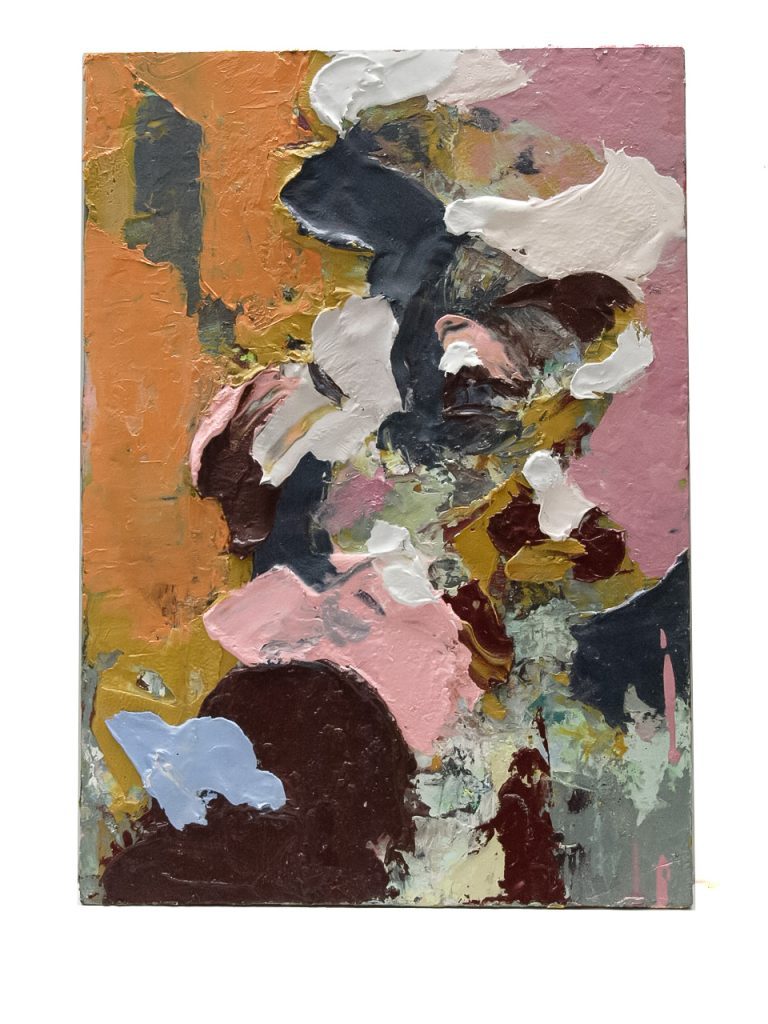
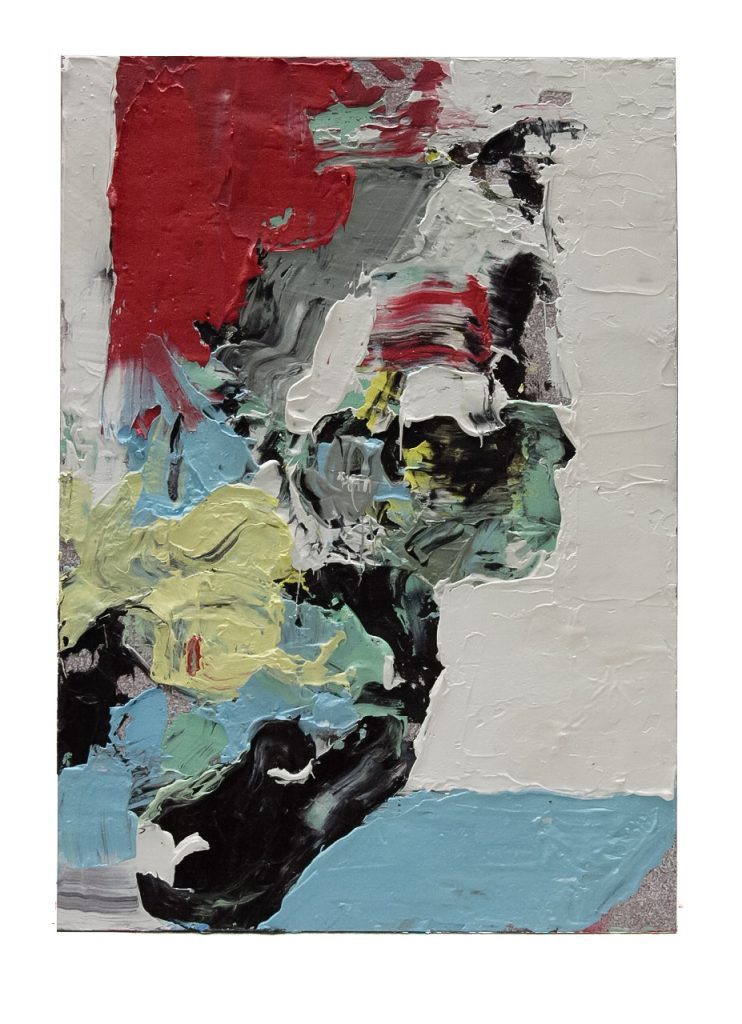
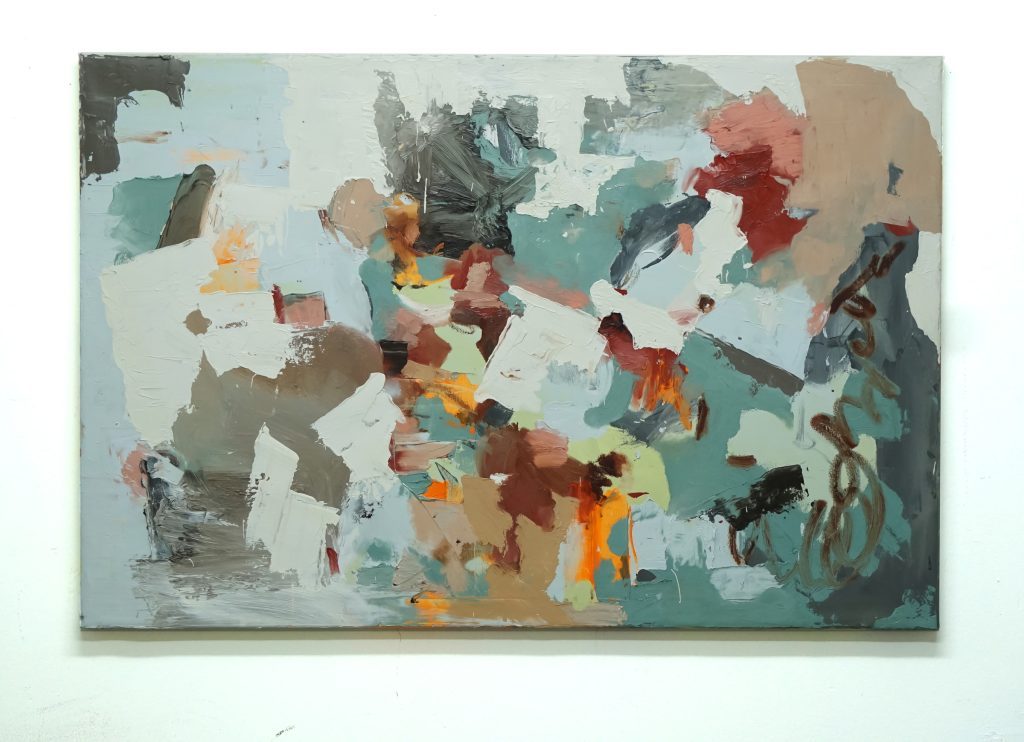
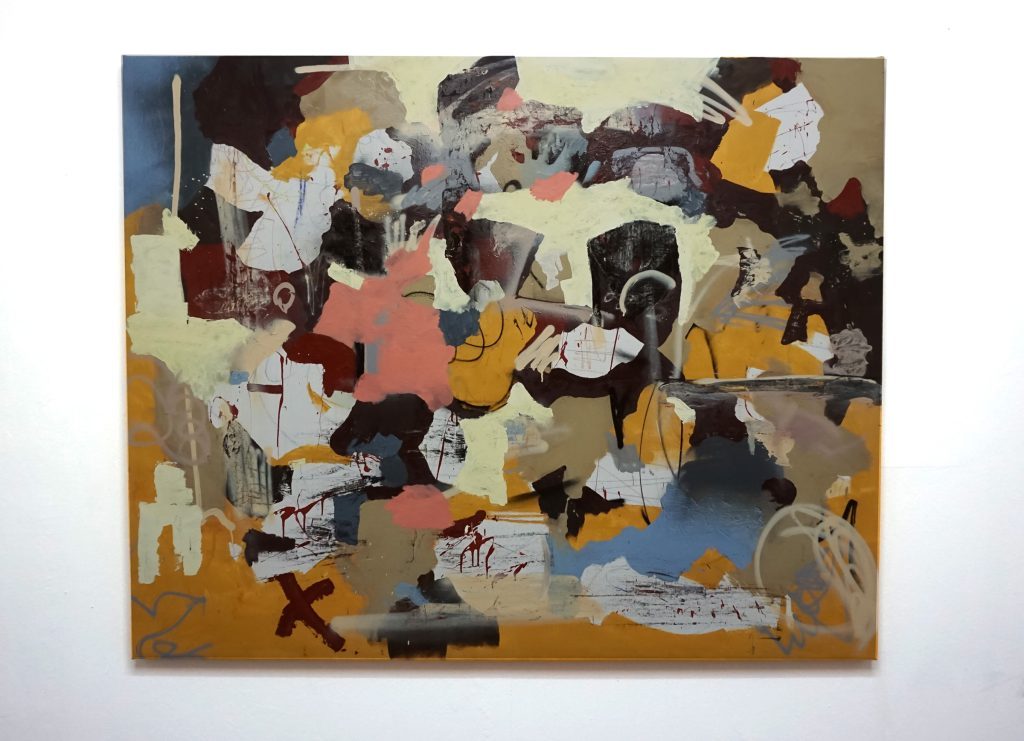
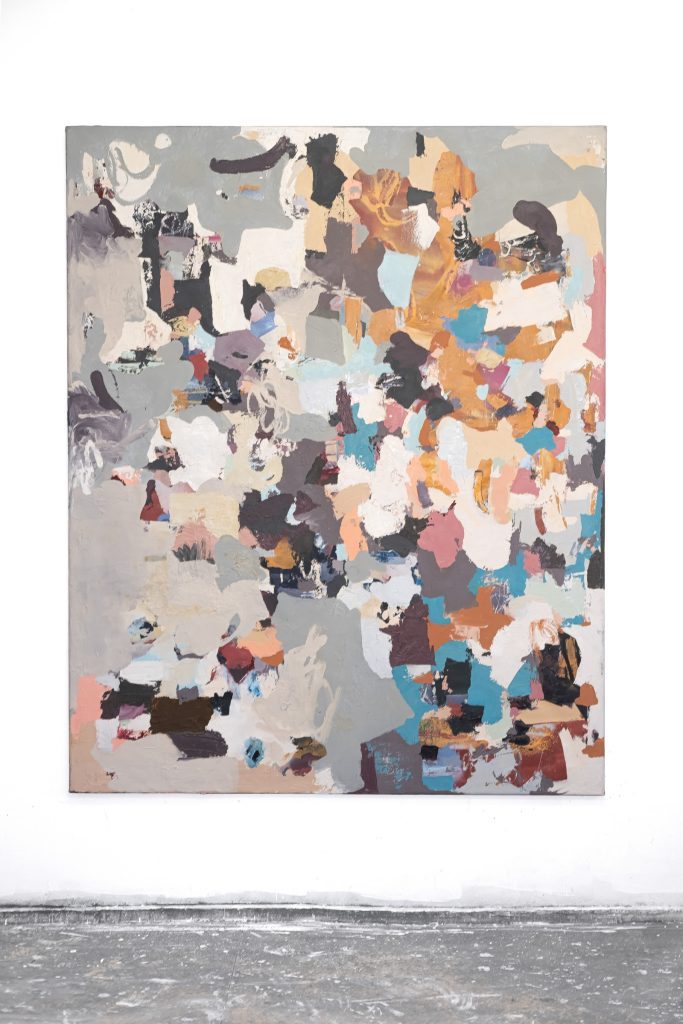
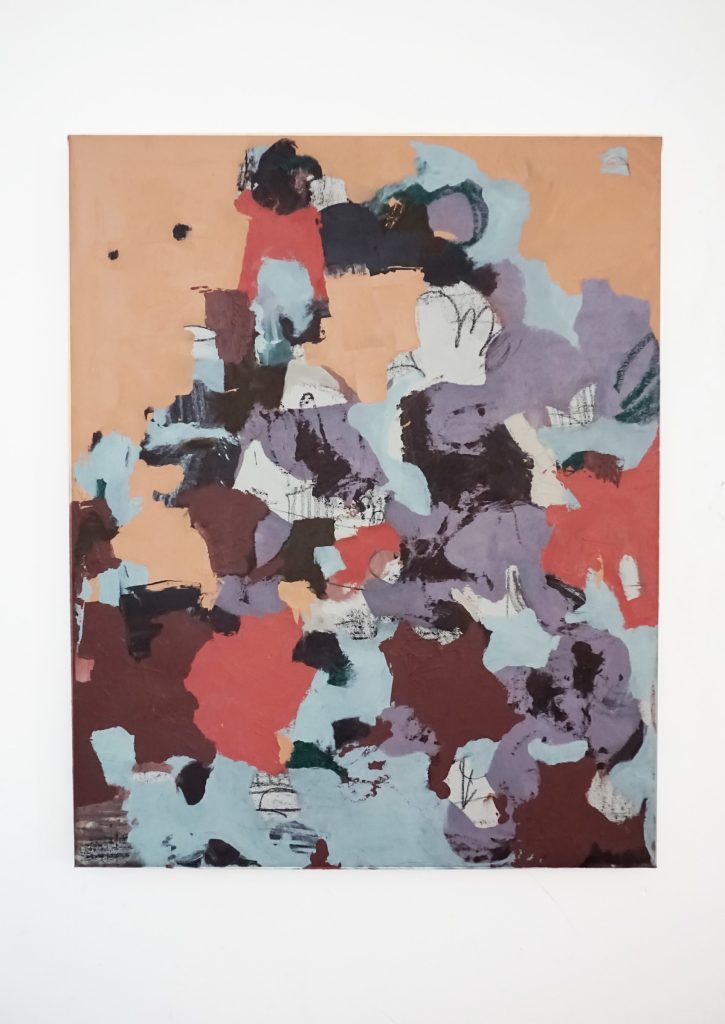
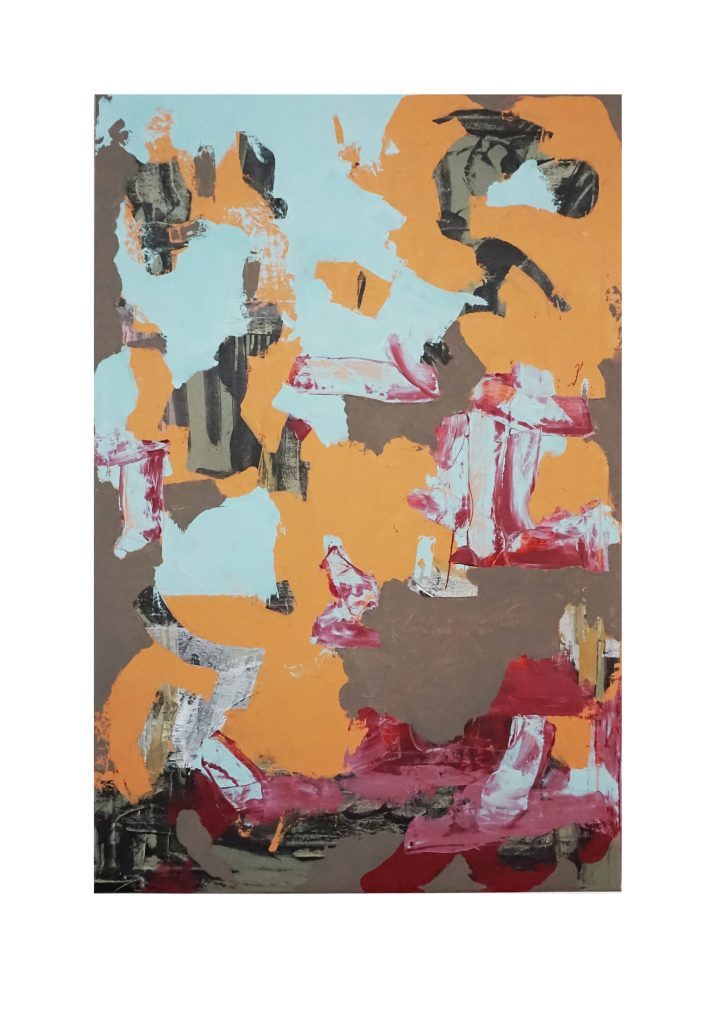
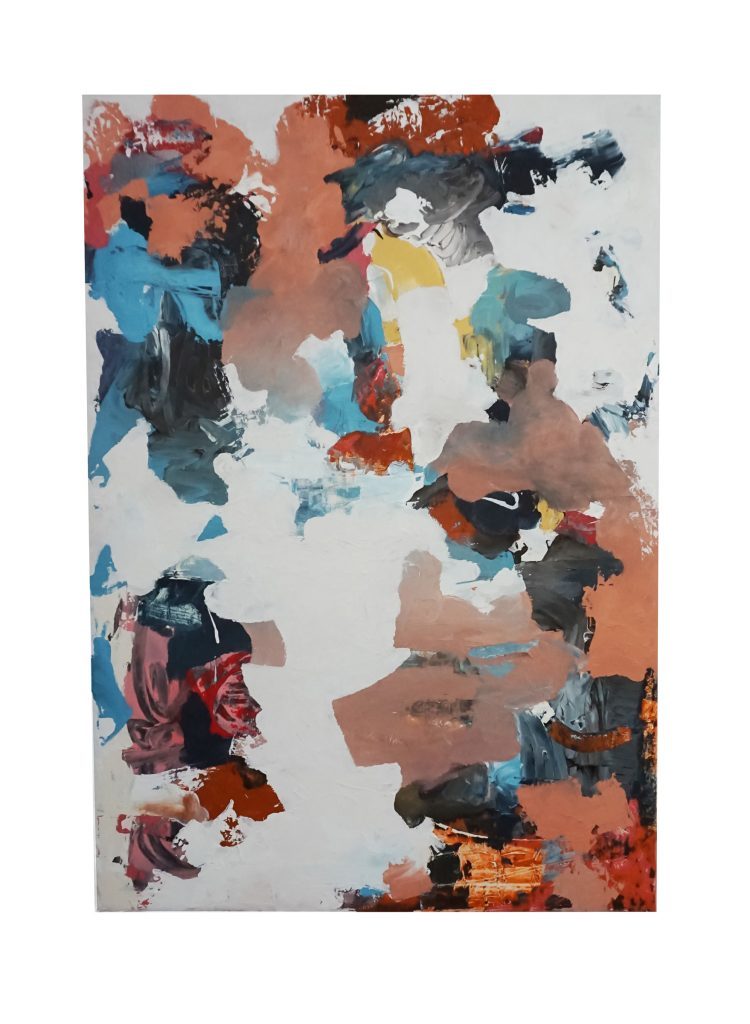
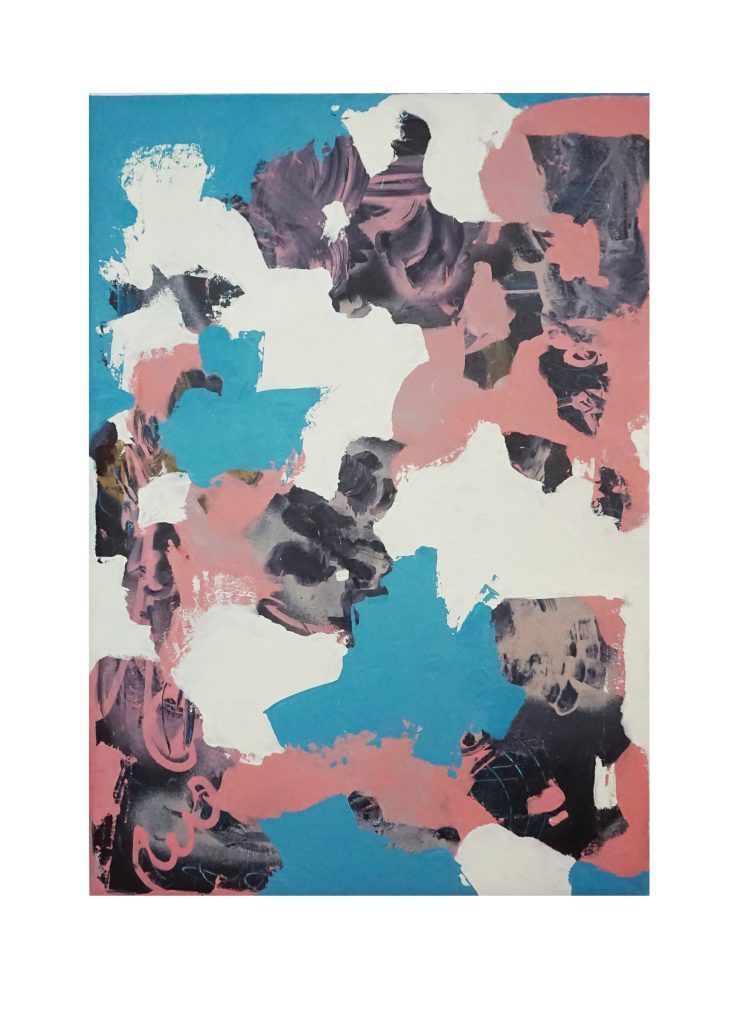
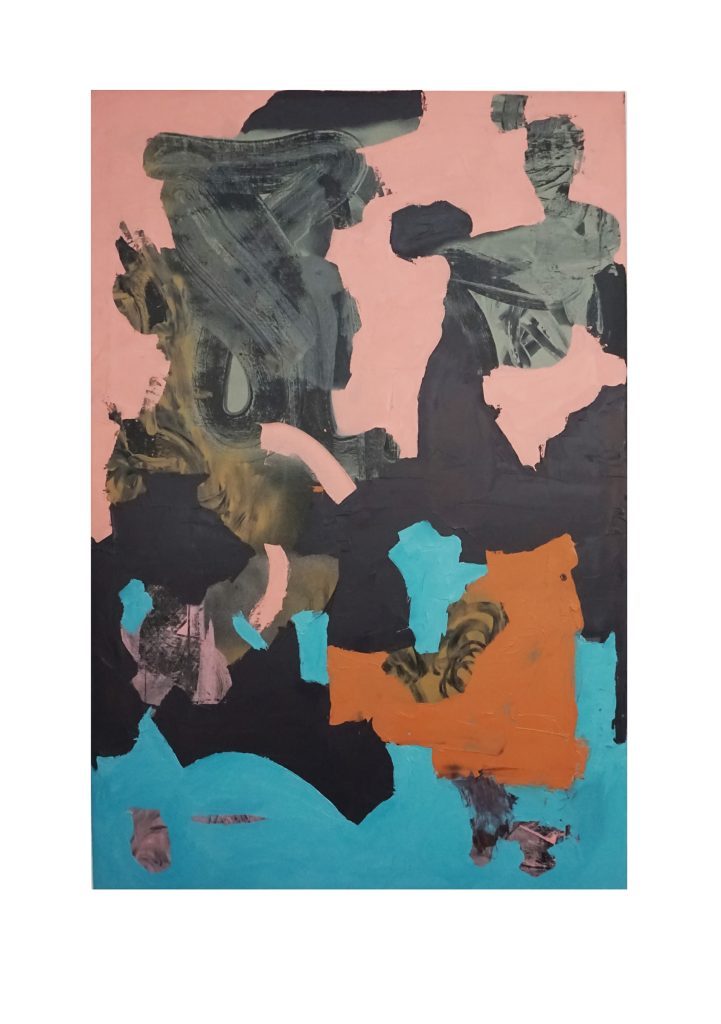
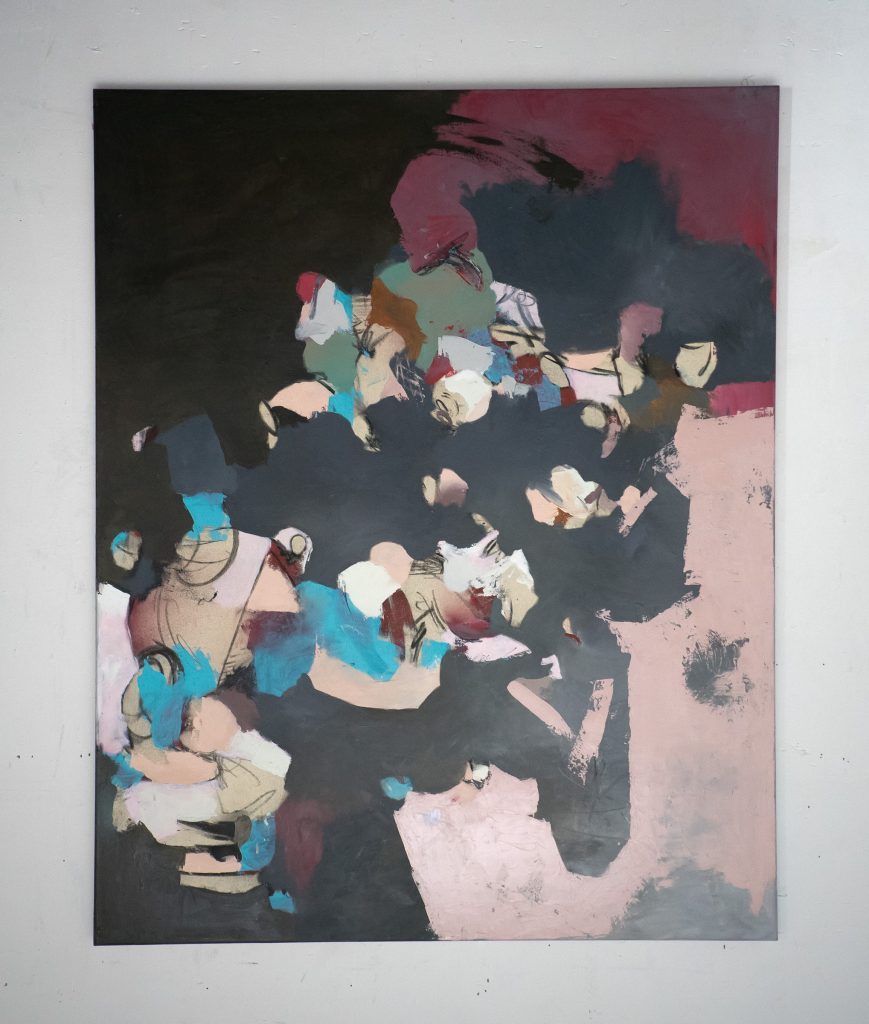
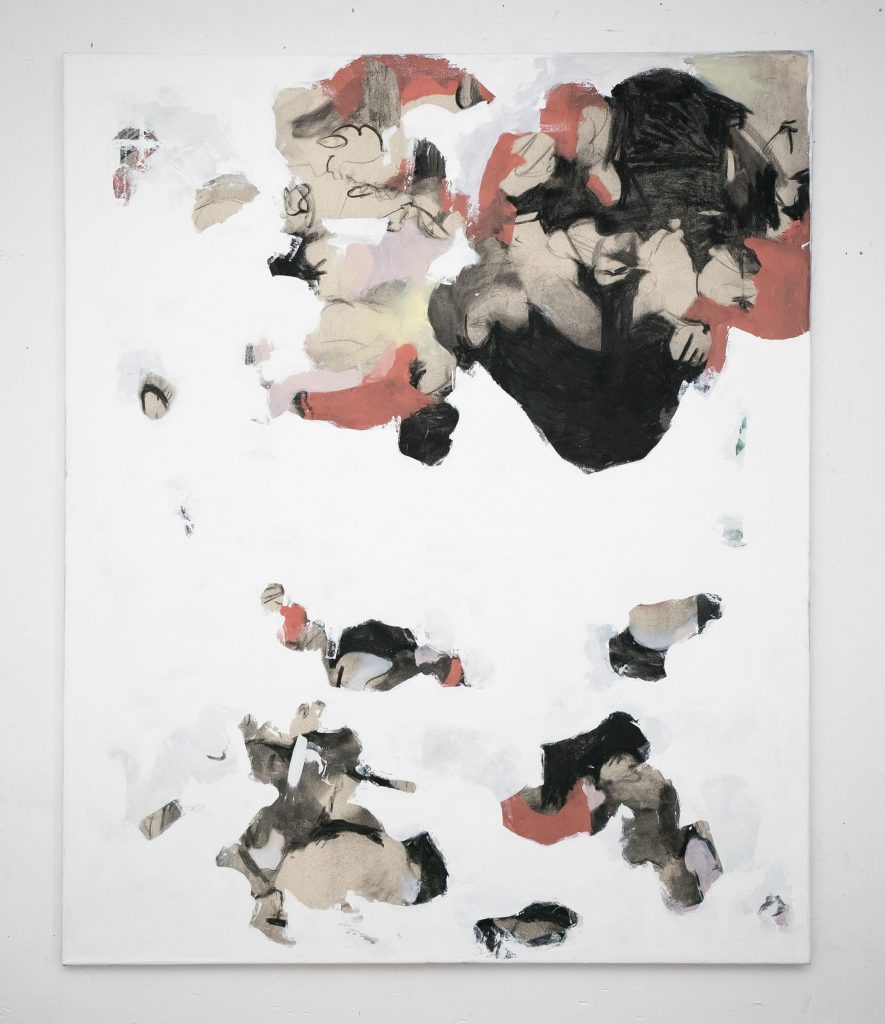
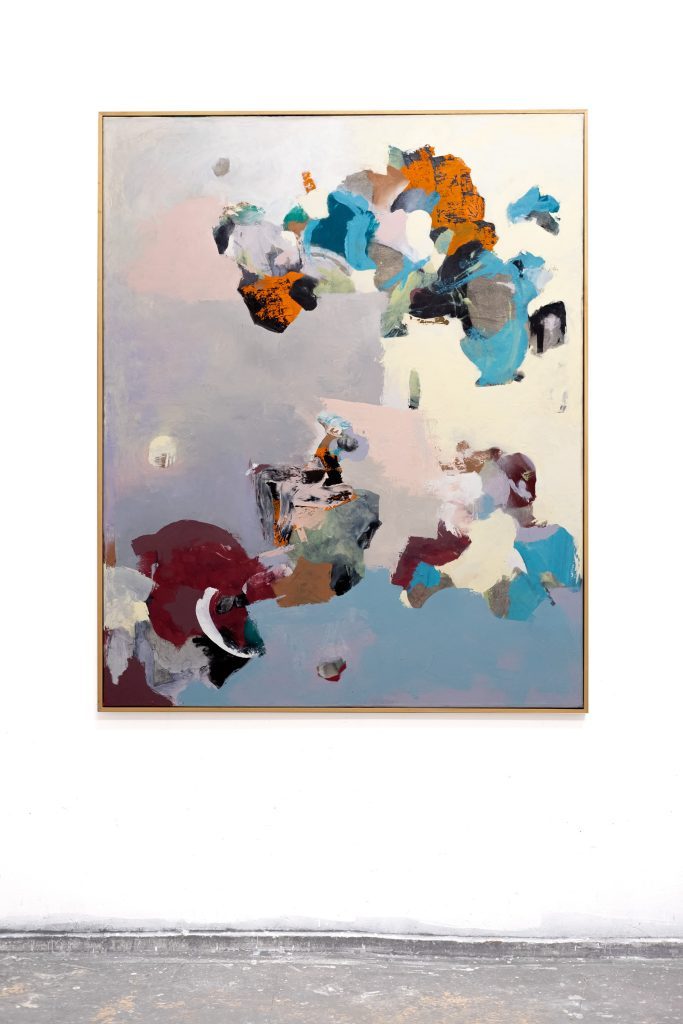
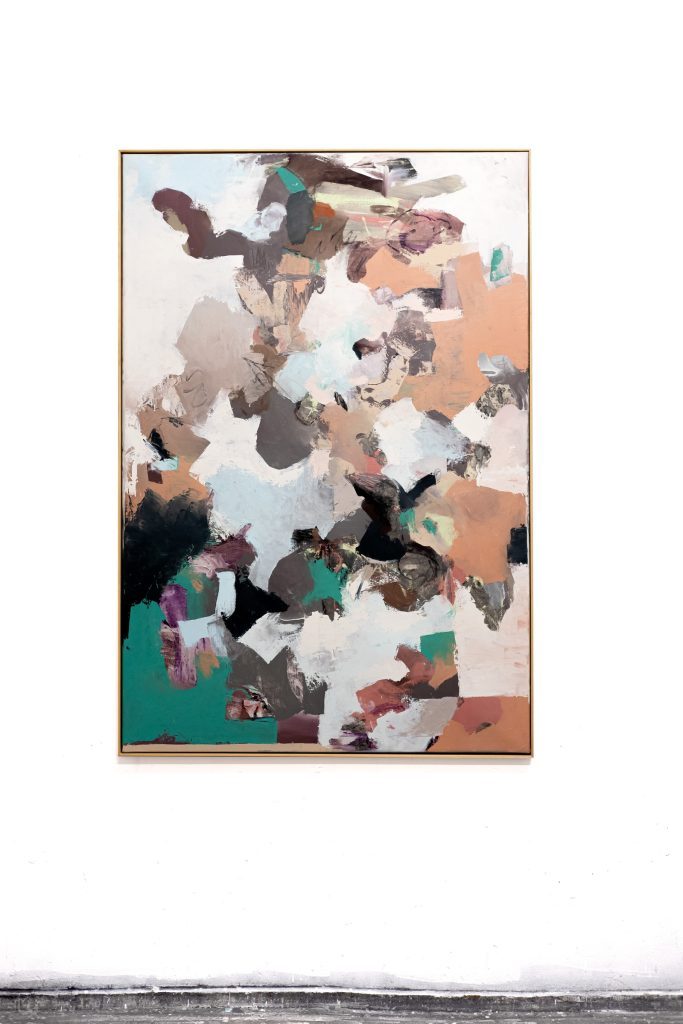
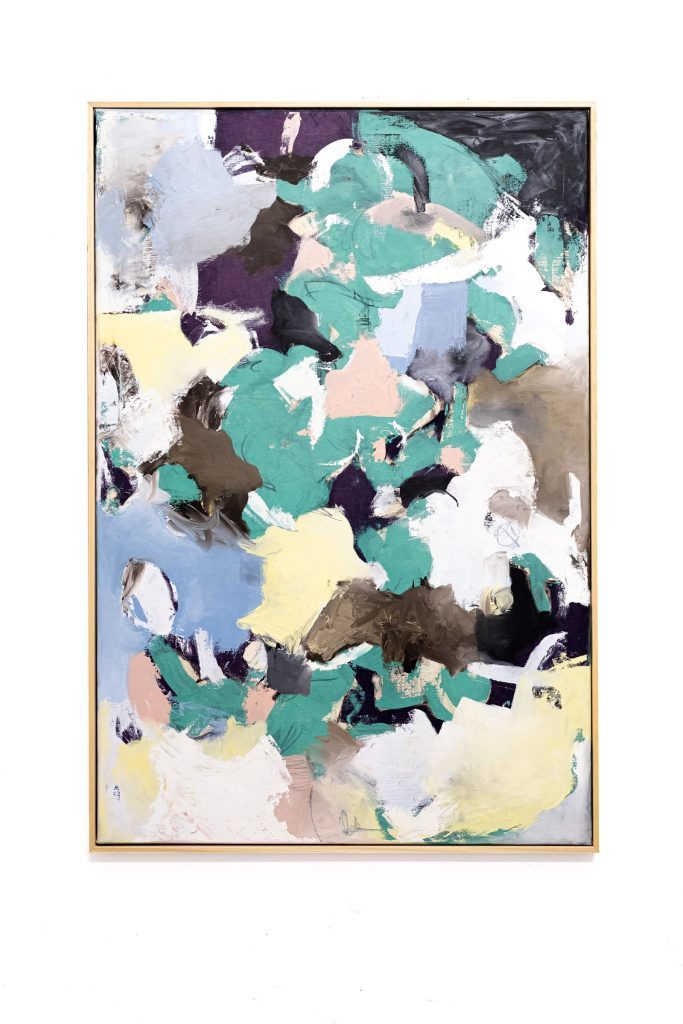
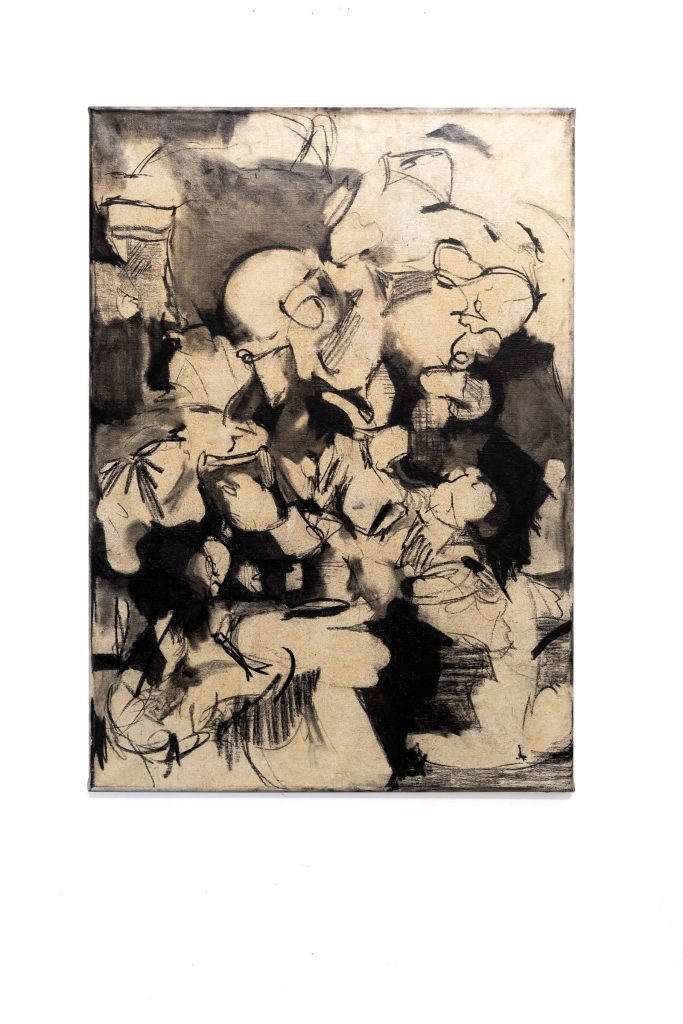
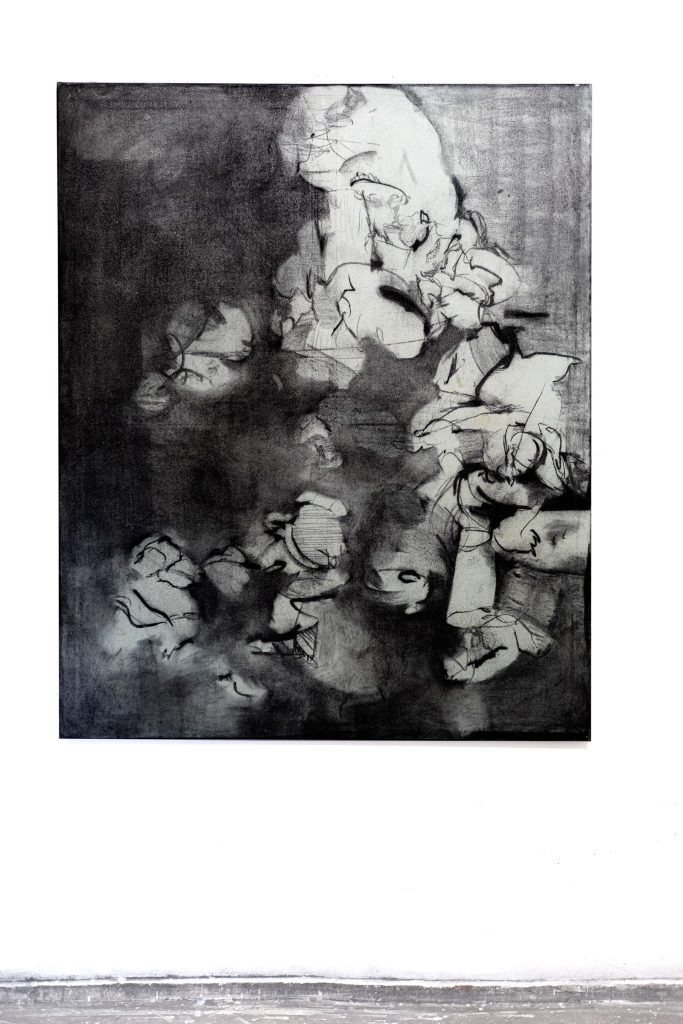
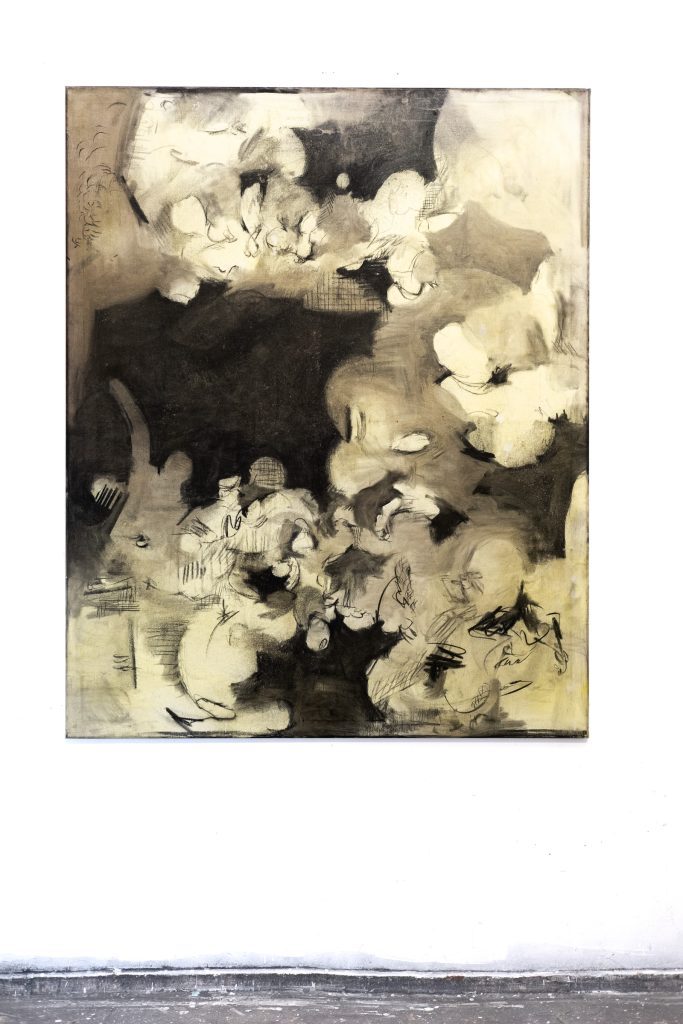
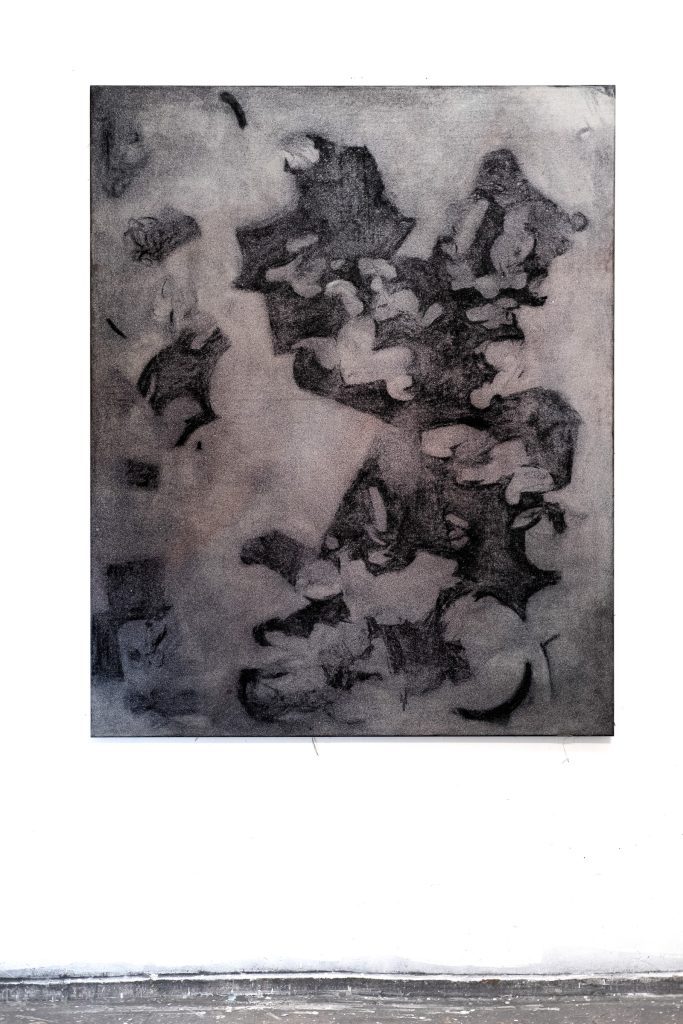
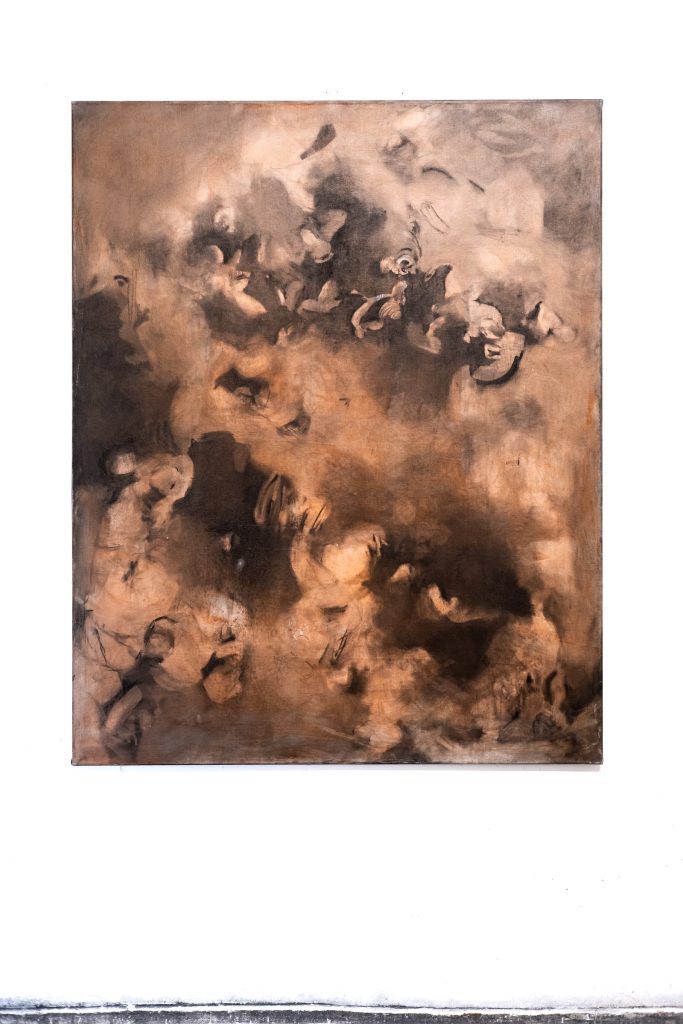
441 views
Categories
Tags:

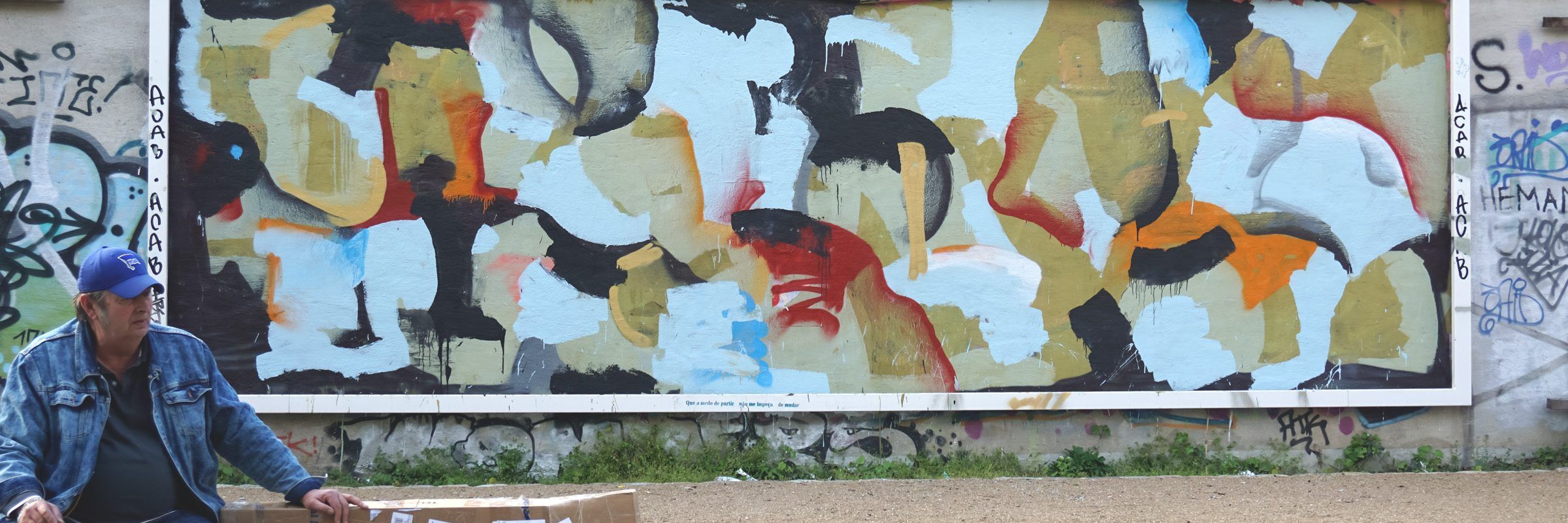

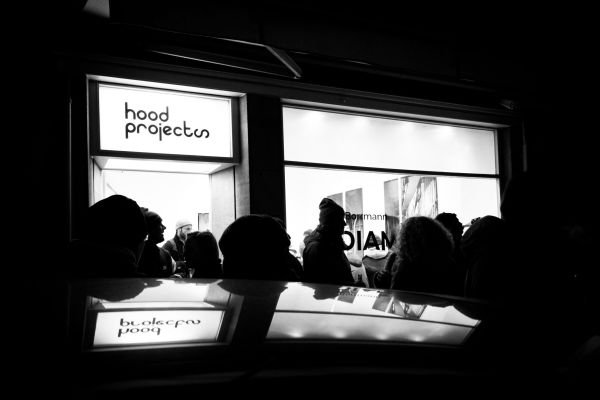
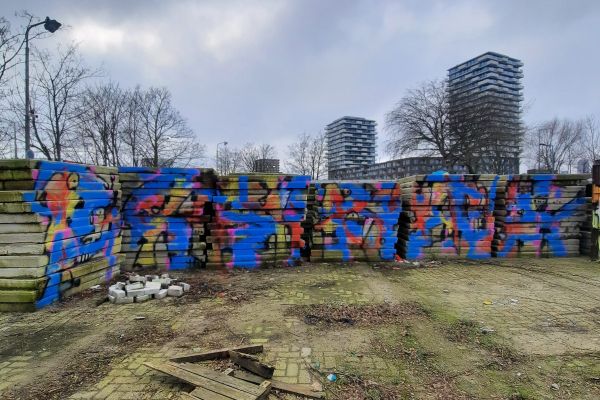
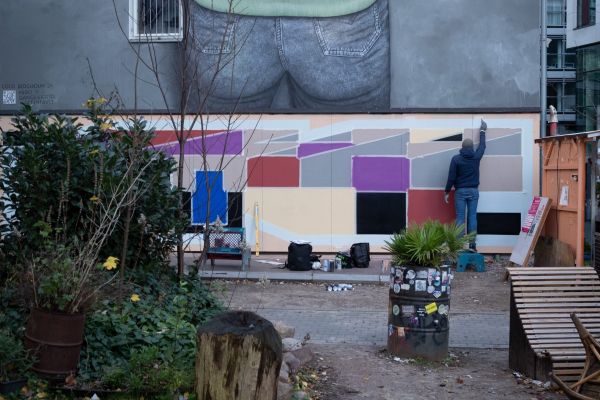
Leave a Reply